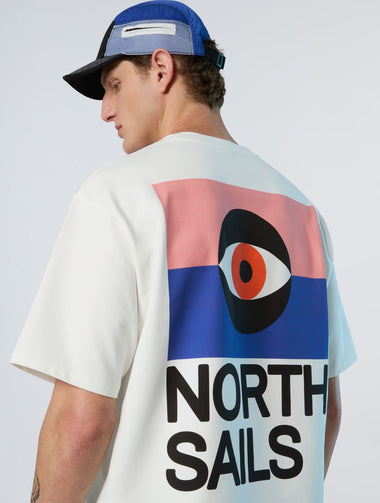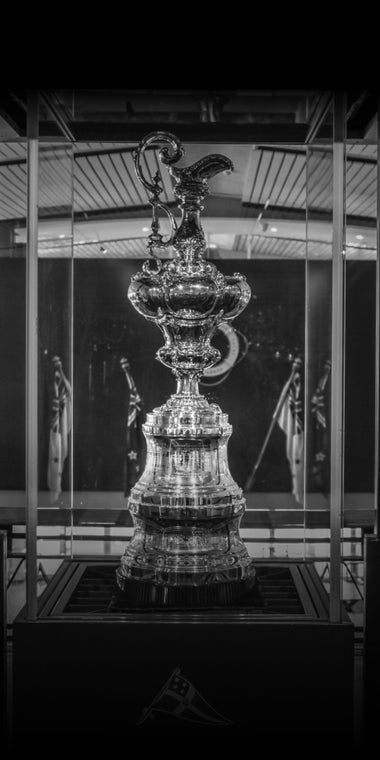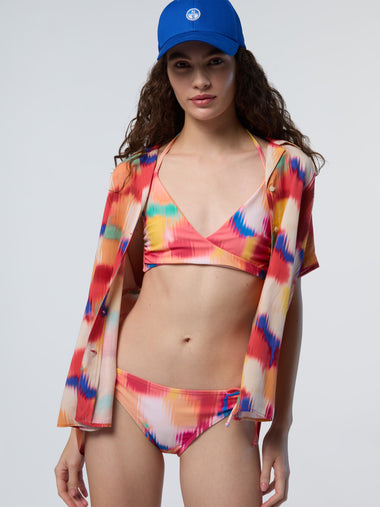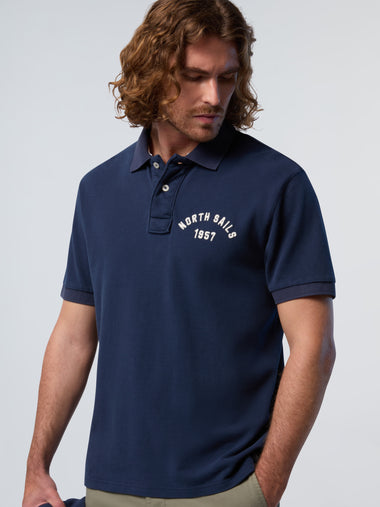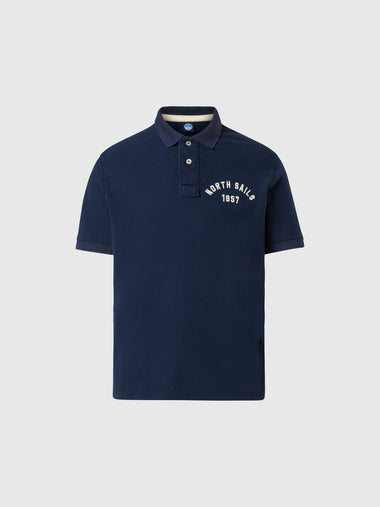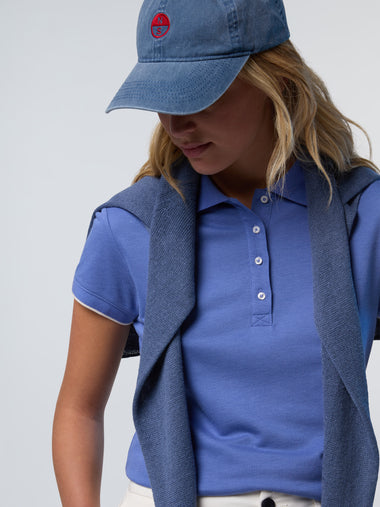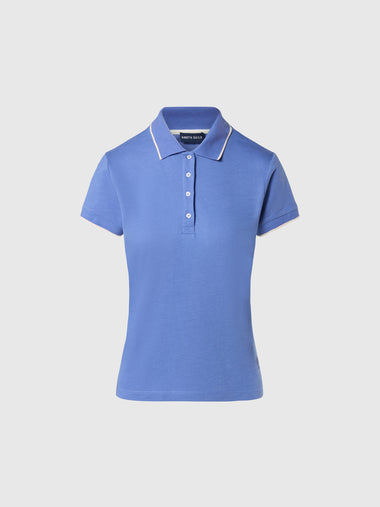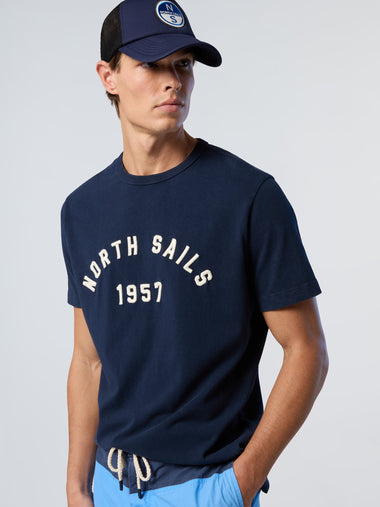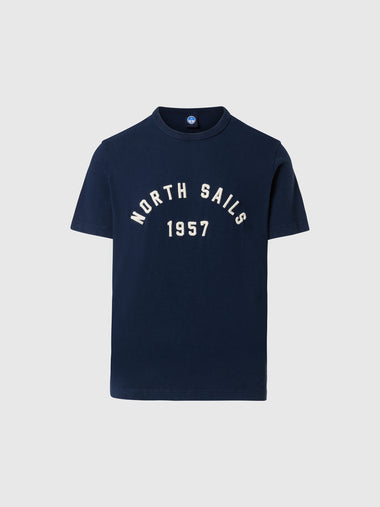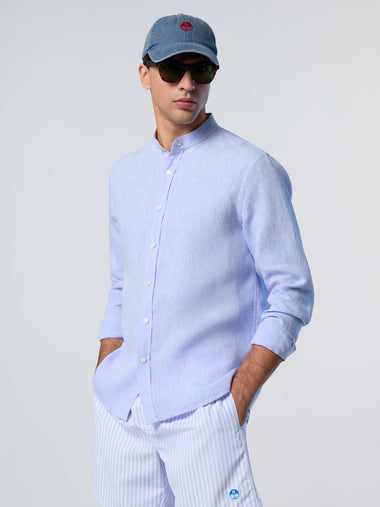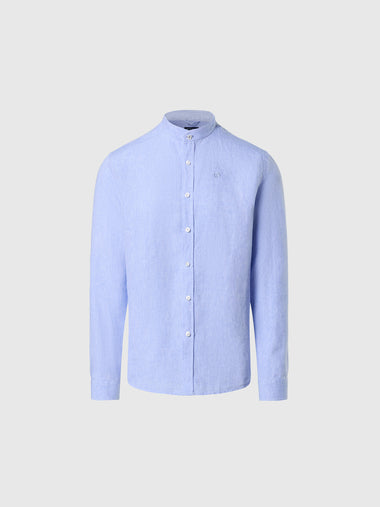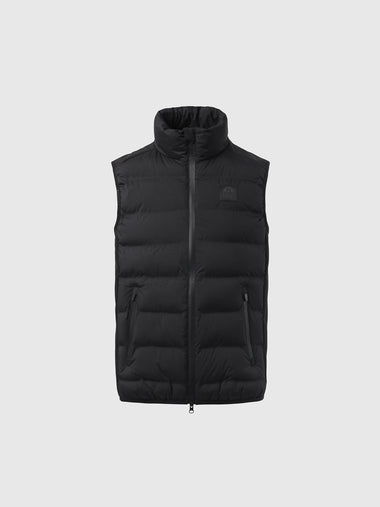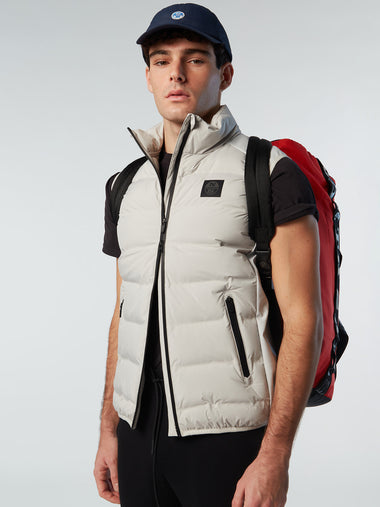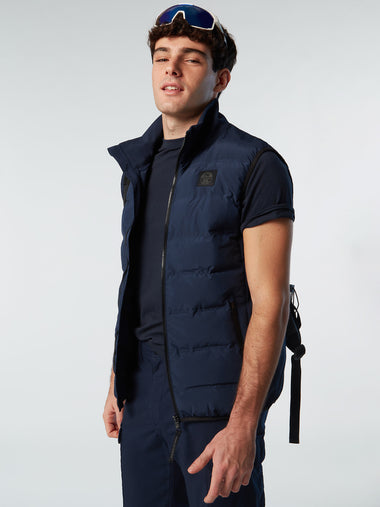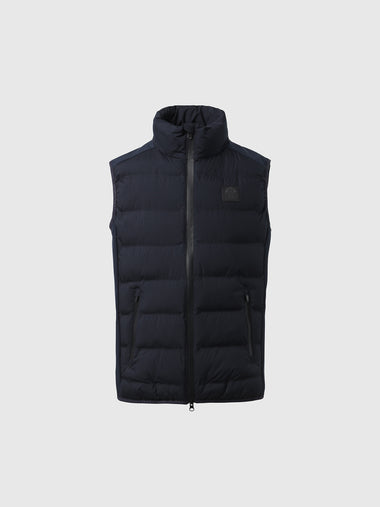NORTH SAILS BLOG
All
Events
Guides
News
People
Podcast
Sustainability
Tech & Innovation
Travel & Adventure
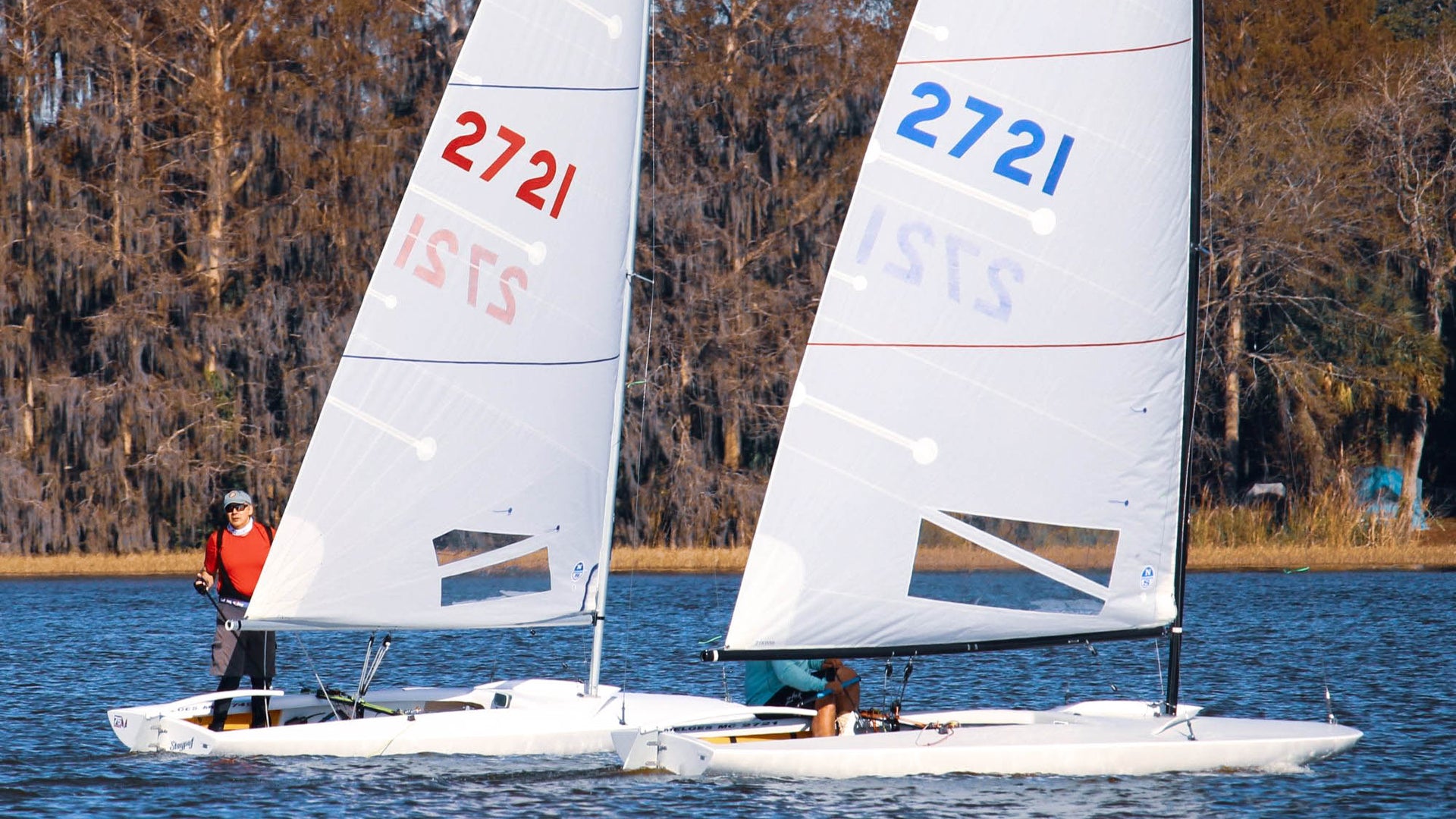
MC SCOW TRAINING WEEK / TRAIN WRECK REGATTA
MC SCOW TRAINING WEEK + TRAIN WRECK REGATTA
A Closer Look At The New 2021 MC Product Line
The new 2021 designs for the MC Scow
North Sails MC Scow class leader Allan Terhune was joined by North’s top sail analyst Eric Doyle, aka ‘the man who is obsessed with making fast sails faster’ for a solid week of MC Scow training on Lake Eustis in Florida.
Thank you to Lake Eustis Yacht Club and Commodore Dave Moring, who welcomed the duo and provided support as well as the perfect facility for sail testing. The MC Masters champions Matt Fisher and Lisa Fisher, as well as Sean Bradley, Ken Felis, Al Haeger, and Chris Kubickek and others also joined in the fun, making it a successful week of test trials for North MC Scow sail designs.
The main goals for the week were to test the new 2021 MC Scow product line, including the brand new “M” design – the Magnum, and warm up for the upcoming regatta with all minds open to continue to learn as much as possible about sailing the boat.
While Allan was sailing, Eric was busy observing all the action from the powerboat and together they made important conclusions about fine tuning the sails. For instance, In light air the main must be trimmed hard enough to bend the mast, but not too hard because it closes the leech and will stall. “This is a very tricky balance between luff curve and broad seam in order to go through the entire wind range with very few controls and adjustments,” said Eric. “It’s important to understand the level of details involved that affect sail design, and how crucial it is that the sail is fast in all conditions.”
Allan had excellent race finishes, with a 3rd, 2nd, and 1st at the regatta, proving that the work done during the week of training paid off. “This is my second MC event,” said Allan. “I learned a lot about the sails and the boat this past week at Lake Eustis, including rake measurements, board angles, and shroud tension. I am excited to share what I learned with the gang.”
MC Virtual Happy Hour
Allan and Eric hosted MC sailors on Friday, February 5th, for an informal virtual debrief about what they learned this past week in Florida.
WATCH
Allan Terhune sail testing the new MC Magnum mainsail.
Sail testing the ZMax and the new MC Magnum. Lake Eustis, FL.
READ MORE
READ MORE
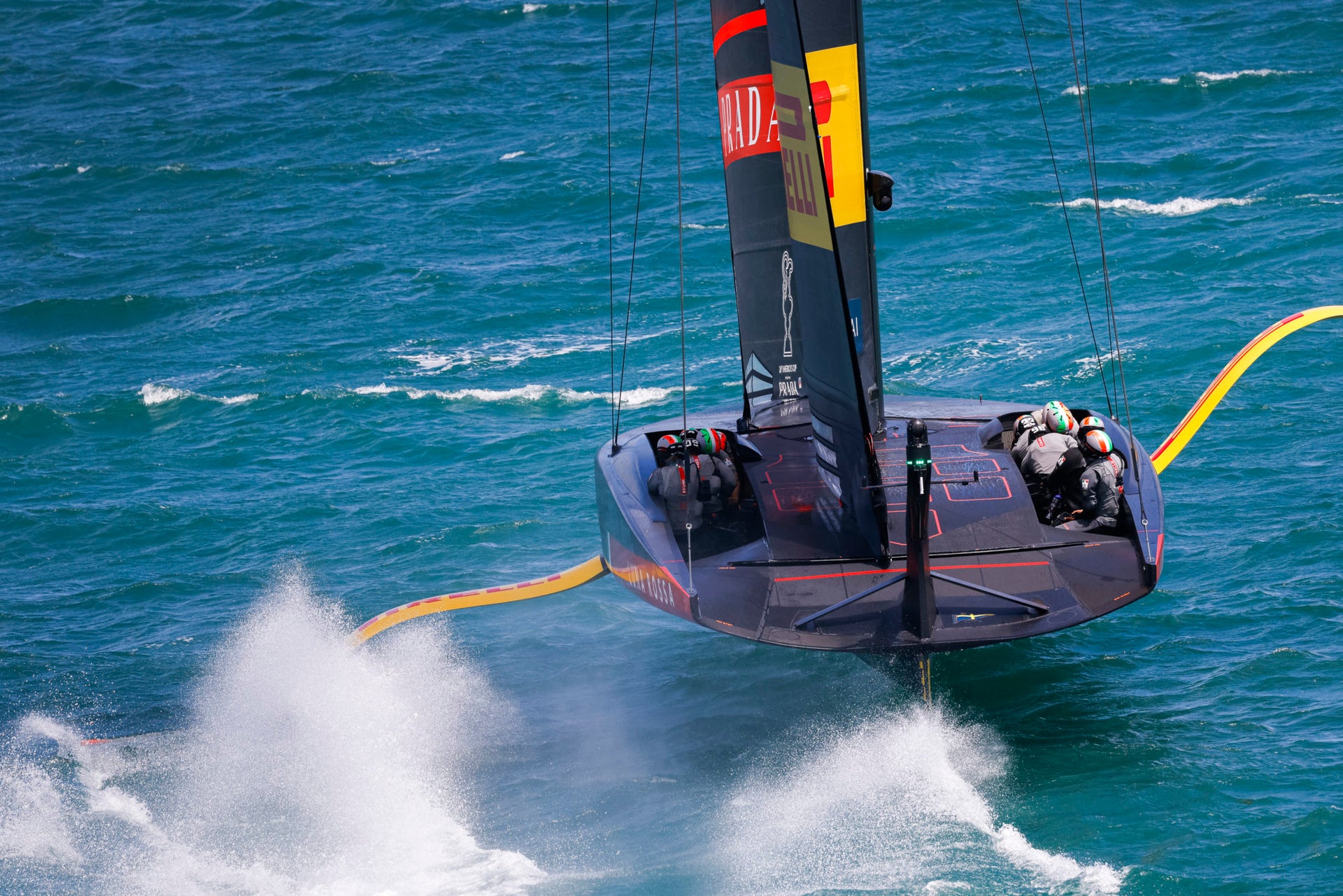
#NSVICTORYLIST: THE PRADA CUP SEMI FINALS
#NSVICTORYLIST: LUNA ROSSA WIN THE PRADA CUP SEMI-FINALS
The Italians sweep the series and secure their spot in the Finals
COR36 / Studio Borlenghi
The drum-roll for the semi-finals of the PRADA Cup began about three days out with two big questions: had Luna Rossa PRADA Pirelli found new speed and restored its mojo after its consistent losses against INEOS TEAM UK? And would the other boat even show up after its frantic repair work?
Race 1 and 2 opened the semi-finals on Friday, 29 January: Luna Rossa PRADA Pirelli vs American Magic. Luna Rossa was almost certainly the stronger team, but the semi-finals would see the first elimination and there was no room for complacency. Jimmy Spithill admitted this did put pressure on the team – but in a good way. America’s Cup wannabes veterans eat pressure for breakfast; this is not a game for the faint of heart.
Over the weekend, the weather conditions were potentially boat-breaking: a choppy sea and puffs that sailors call bullets – sudden bursts of high-speed winds firing off the land. They can strike an AC75 at its most vulnerable when it is executing a bear-away from the top gate. It’s like watching a scary movie: you simply can not look away.
Luna Rossa PRADA Pirelli’s Francesco Bruni would never admit to being scared, but he later said that in such difficult conditions it is important to pre-plan the day. “There is no time to make last-minute calls,” he said, “and if you do make one, you are doing something you shouldn’t.”
COR 36 / Studio Borlenghi
It was exactly the racing experience the Italians needed to up their game before the finals. Luna Rossa sailed into the start box floating like a butterfly, and ready to sting like a bee.
They dominated the start and led to the finish. Then they did the same again in the second race.
They also displayed subtle changes in strategies. Like speed, for example. For 170 years, the experts have said that the fastest boat wins the America’s Cup, but when boat speed is red-lining at 53 knots, the ability to slow down on demand can be an advantage. Thus proving that sailing a clean race is equally important.
“We’re not worried about reaching the maximum speed,” Bruni said, “and when you bear-away at the top mark you probably don’t want to be doing maximum speed.” That’s a good trick, because 53 knots at the wrong time can take an AC75 deep into the danger zone.
Races 3 and 4 on Saturday, 30 January were a whole new day: sunny with an even north-easterly breeze that would provide few passing lanes on the course. Luna Rossa PRADA Pirelli was almost certain to add two more to the scoreboard. They controlled both races from the get-go, sailed faster upwind, and pointed higher. The Americans suffered major issues with controlling their foil boards. Which ultimately extended the Luna Rossa lead.
Max Sirena, Luna Rossa’s skipper, and team director said he was very happy with the performance of Luna Rossa and the on-board communication. “Both have been improving a lot,” he said, “so heads down and concentration up.”
With the semi-finals complete, the America’s Cup bus is boarding the last few passengers, Luna Rossa has shown off its overall improved performance and is looking cool under pressure – except it wasn’t under the pressure it can expect from Ineos Team UK.
Jimmy Spithill was asked what he saw as the key challenge in facing the British team when the Prada Cup finals begin on 13 February.
The reply was a classic Spithill one-liner: “Cross the finish line in front of them.”
COR 36 / Studio Borlenghi
READ MORE
READ MORE
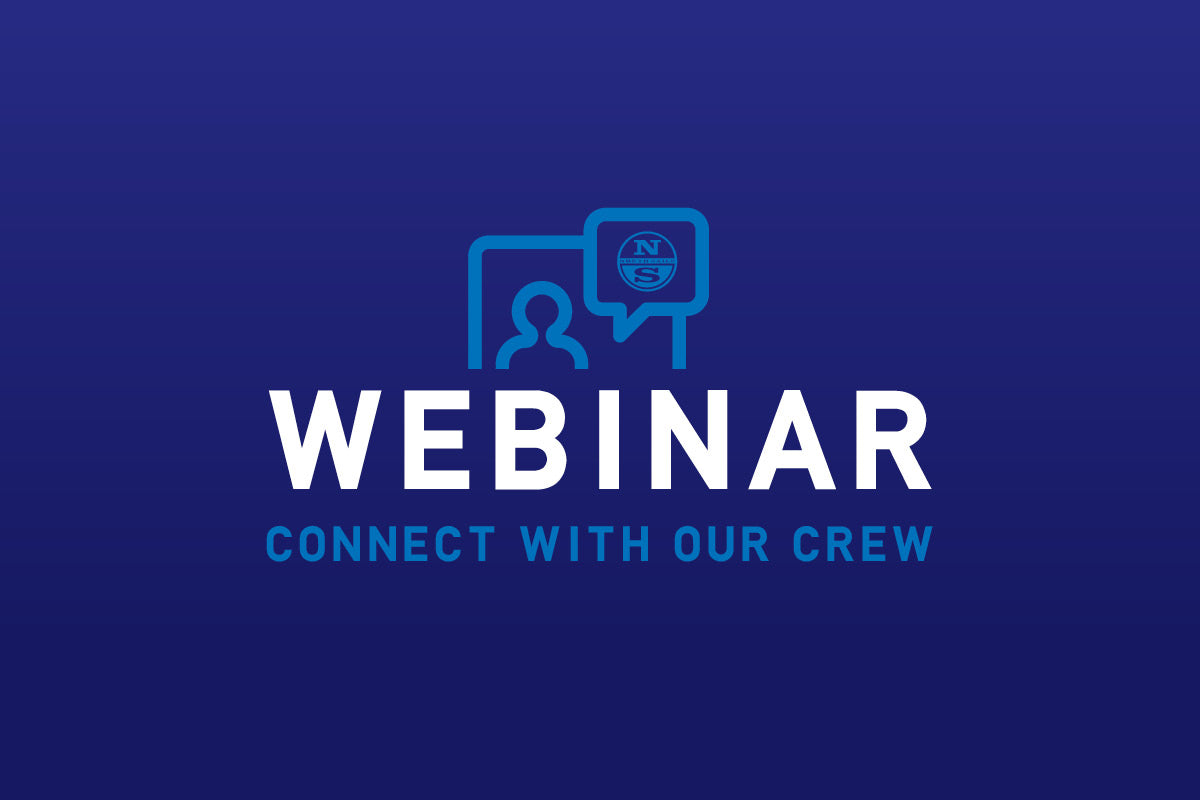
YOUR NORTH SAILS TEAM IS LIVE!
YOUR NORTH SAILS TEAM IS LIVE!
Upcoming Expert Webinar Schedule
Catch your local teams live with our upcoming interactive webinar schedule. North Sails Class Experts from around the world have joined forces to bring you the best tips and techniques that will help you get the results you are looking for. When you sign up for the webinar of interest, you will be sent the link to access the live presentation so you can view at any location you are in the world, from the comfort of your home. Grab a seat, a drink, and kick back with our full-on educational webinar schedule, open to all.
*All webinars are recorded and will be published on our YouTube channel. Did you miss one? View all of our webinars and rewatch or rewind at your own convenience.
Watch Past Webinars
Upcoming Webinar Schedule:
🌐 LET’S TALK J/70 MIDWINTERS
Get ready for the 2021 Midwinters in Tampa, hosted by Davis Island Yacht Club. Join North the Sails Experts Allan Terhune and Zeke Horowitz and Sail designer Mike Marshall for a full session of tips, tuning, and sail trim information.
Tuesday, November 16th at 8:00 pm EST
Register Here
🌐 LET’S TALK NEWPORT BERMUDA RACE – WEATHER & NAVIGATION
North Sails is back the Official Performance Partner to the 2022 Newport Bermuda Race. Three editions in the running, we’ll once again be running our enormously informative and popular Performance Seminars, focused on weather, navigation, sail selection, and performance optimization.
Raise your Newport-Bermuda weather IQ with Chris Bedford and Peter Isler, founders of Marine Weather University.
Thursday, November 18th at 7:30 pm EST
Register Here
🌐 LET’S TALK NEWPORT BERMUDA RACE – SAIL INVENTORY OPTIMIZATION
North Sails is back the Official Performance Partner to the 2022 Newport Bermuda Race. Three editions in the running, we’ll once again be running our enormously informative and popular Performance Seminars, focused on weather, navigation, sail selection, and performance optimization.
From race-record-breaking skippers to multi-edition veterans, the North Sails team’s collective experience and expertise are proven to deliver results.
Thursday, December 9th at 7:30 pm EST
Register Here
READ MORE
READ MORE
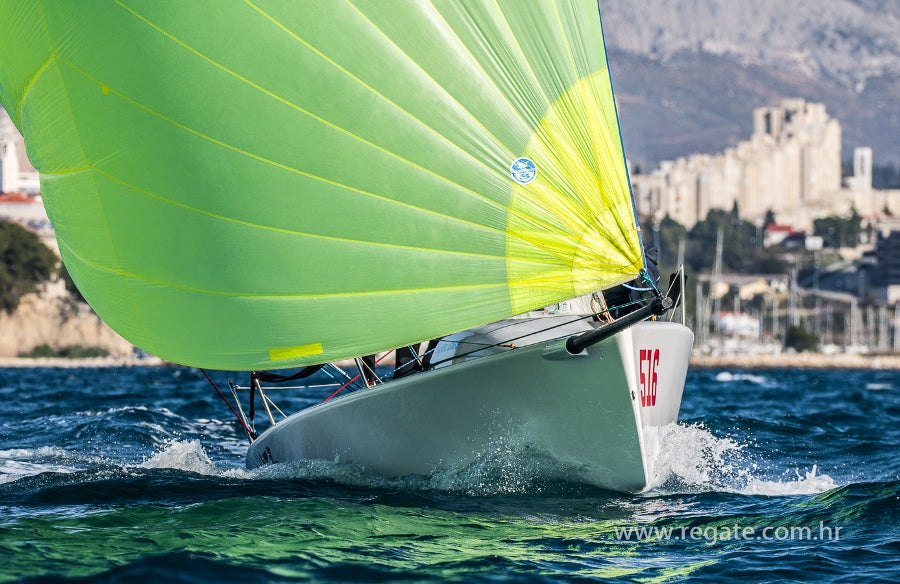
PONOVNO JE DOZVOLJENO JEDRITI!
Ponovno je dozvoljeno jedriti!
Hrvatski olimpijski odbor je izdao službeno priopćenje na osnovu odluke Vlade od prije dva dana:
Zagreb, 28. siječnja 2021. - Na sjednici u četvrtak Hrvatska vlada je odlučila da se, u sklopu popuštanja epidemioloških mjera, uvedenih protiv širenja pandemije Covid-19, od 1. veljače 2021. godine dopuste treninzi sportaša i rekreativaca na otvorenom prostoru.
- Zbog pozitivnih trendova odlučili smo se za popuštanja koja nisu velika, ali su značajna za dio populacije. Fokusiramo se na djecu i odlučili smo se za povratak u školu svih učenika osnovnih škola - pojasnio je dopredsjednik Vlade i ministar unutarnjih poslova Davor Božinović.
Mogućnosti za bavljenje sportom proširuju se i na korištenje bazena i balona za pojedinačne beskontaktne sportove, jer se u tim sredinama virus sporije širi zbog klora i prozračnosti.
- Popuštanje se ne odnosi na korištenje zajedničkih prostorija, kao što su tuševi i svlačionice. Još uvijek nije trenutak za otvaranje sportskih dvorana - istaknuo je Božinović, uz napomenu da će nove mjere vrijediti od 1. do 15. veljače, a nakon tog razdoblja uslijedit će njihovo novo revidiranje. (izvor: vlada.gov.hr/vk)
READ MORE
READ MORE

VENDÉE GLOBE, AMERICA'S CUP, WHAT A WEEK FOR SAILING
WHAT A WEEK FOR SAILING!
The Vendée Globe and the America’s Cup has kept us glued to our screens and caused a lot of late nights
Do we all agree it’s been a great week for sailing?
Like you, many of us within the North Sails family were glued to our screens and had a few late nights, fueled by the Vendée Globe’s excitement, quickly followed by the start of The PRADA Cup Semi-Finals in Auckland.
VENDEE GLOBE LIVE BLOG PRADA CUP LIVE BLOG
Let’s start with the Vendée Globe – the closest finish for this incredible around the world race ever. Nine IMOCAs crossed the line within 30 hours, and all nine of those skippers chose North Sails to power their engine above deck. Beyond, 22 skippers who started the 9th edition of the Vendée Globe had North Sails onboard during their solo, non-stop, and without assistance adventure.
The 2020-21 Vendée Globe is the closest finish for this incredible around the world race ever. Nine IMOCAs crossed the line within 30 hours, and all nine of those skippers chose North Sails to power their engine above deck.
For 80 days, the Vendée Globe left us on the edge of our seats, and the race finish was no exception. To start, this race unofficially has multiple winners, Apivia’s Charlie Dalin took line honors, while Maitre COQ’s Yannick Bestaven was crowned the overall race winner, after a 10-hour, 15-minute time credit for his support in Kévin Escoffier’s rescue. Boris Herrmann, who was in the leading pack of three, collided with a fishing boat 90 miles off from the finish. Herrmann limped into Les Sables-d’Olonne line with a badly bruised boat, ultimately claiming 5th overall. Herrmann is the first German sailor to partake in this iconic race. With the French sailors filling the majority of the roster, Giancarlo Pedote (8th overall) claimed the highest finish position of any Italian to have entered the Vendeé Globe.
And then there was race veteran and fan-favorite Jean le Cam. Le Cam secured fourth place on the leaderboard after receiving a time compensation of 16 hours and 15 minutes for his assistance to Kévin Escoffier. He won the hearts of fans worldwide for his bold recovery mission of Escoffier from his life raft on December 1st. In a race where emotions ran high, Escoffier was at the finish line to welcome Le Cam into Les Sables-d’Olonne.
Les Sables-d’Olonne is continuing to welcome the 2020-21 fleet back home. We’ll be keeping tabs and sharing more updates as they become available.
Yvan Zedda / Alea / #VG2020
We also have the America’s Cup! From near sinkings to do-or-die racing (on 75ft foiling monohulls nonetheless), the 36th America’s Cup literally has it all.
As we write this update Luna Rossa PRADA Pirelli sit two points ahead of American Magic after Day One of the PRADA Cup Semi-Finals. The team to claim four points first secures their ticket to the Finals against INOES Team UK. Day 2 begins at 1500 NZL time today. Can Luna Rossa wrap this up on Day 2 or will racing continue through the weekend. For now, we’re on standby.
📸 COR36 / Studio Borlenghi
READ MORE
READ MORE
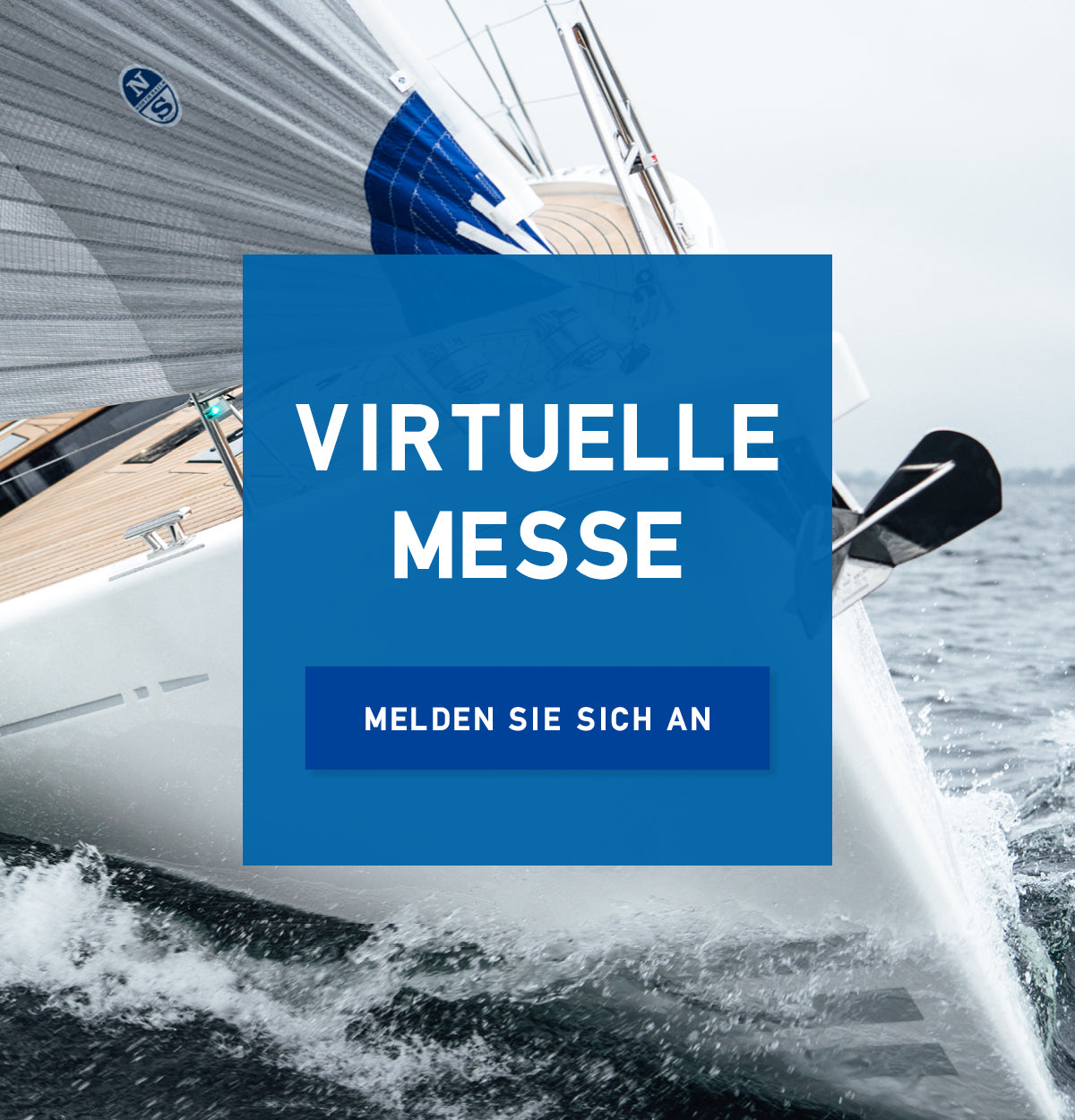
INFOS ÜBER BOOTSMESSEN + COVID 19
NORTH SAILS SCHWEIZ
Infos über Bootsmessen + Covid 19
Auch wenn die Messen SuisseNautic und boot 2021 nicht stattfinden, können Sie bei uns trotzdem vom 8. - 12. Februar 2021 von einem virtuellen Messerabatt profitieren! Rufen Sie uns an oder vereinbaren Sie mit uns einen Video-Anruf, damit Sie bereits im Frühling mit neuen Segeln in die Saison starten können.
Termin für Video-Call
Aktuelle Corona Situation:
Wir versuchen, uns an die Angaben des Bundes zu halten und verzichten daher wenn möglich auf persönliche Kontakte. Trotzdem können Sie uns natürlich für Servicearbeiten, neue Segel oder andere Anliegen jederzeit telefonisch (+41 71 680 00 80) oder per E-Mail kontaktieren. Segellieferungen finden ab Ende Februar wieder statt (Stand heute).
READ MORE
READ MORE
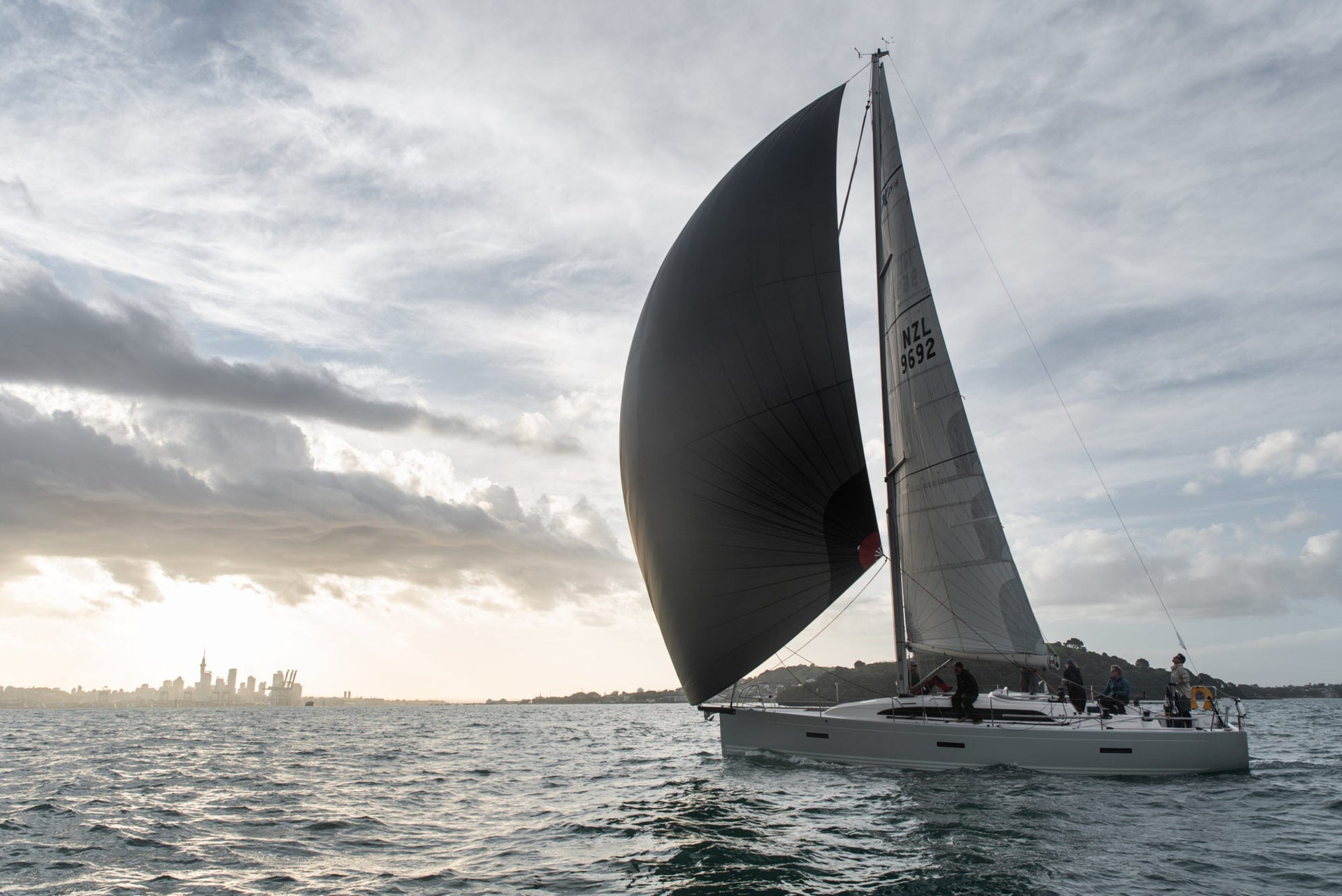
THE DIFFERENCE BETWEEN A SPINNAKER AND A GENNAKER
Understanding these two sail types can help you figure out which will be best for your boat.
📸. Lissa Photography
Like the Spork (a combination of spoon and fork), the name gennaker came from combining two very different sail types into one: a genoa and a spinnaker. Unlike the spork, gennakers are an entirely new sail type that demonstrate the sailing industry’s leading edge.
What exactly is a gennaker? In short, a gennaker has a genoa’s form (asymmetric, head and tack pinned, sheets tied to the clew) with the wide girth of a spinnaker. The gennaker is an all-purpose downwind sail, while spinnakers are built for specific downwind apparent wind angles.
Because designs are changing so quickly, the term gennaker can seem complicated. First, let’s make sure we understand the two original sail types: the spinnaker and the genoa.
What is a Spinnaker?
A popular online dictionary defines spinnaker as: “a large three-cornered sail, typically bulging when full, set forward of the mainsail of a yacht when running before the wind.” When spinnakers were all symmetric, that dictionary definition would’ve been fine.
Today, things are a bit more complicated.
Symmetric Spinnakers and Asymmetric Spinnakers
We now describe the spinnakers in the picture below as symmetric spinnakers. Divide one in half vertically, and the two sides are mirror images. The windward corner is held out with a pole attached to the windward side of the mast, and to change course (or jibe), that pole is switched to the opposite corner. Unlike a headsail, there is no defined tack or clew; both are clews, until the pole is attached and that corner becomes the tack.
(Told you it was complicated.)
Fleet of symmetric spinnakers. 12 Metre Worlds 2019, Newport, RI 📸. Ian Roman
Symmetric spinnakers remain a viable sail type for downwind sailing on boats equipped with spinnaker poles and the necessary running rigging. They fly well when sailing “deep,” with the spinnaker pole squared well aft – or as the dictionary says, “when running before the wind.”
Over the past few decades, another spinnaker type has become increasingly popular – the asymmetric spinnaker or “A-sail.” An asymmetric spinnaker has three distinct corners:
the head (attached to the halyard and hoisted all the way up the mast);
the tack (attached by a short adjustable tackline to the bow/bowsprit);
the clew (attached to the two sheets that run down each side of the boat).
Hmm, that sounds a lot more like a jib or genoa…
Asymmetric spinnakers are popular on boats that have permanent bowsprits or retractable poles. They are also used by cruising sailors because they are easier to handle than symmetric spinnakers.
While symmetric spinnakers and asymmetric spinnakers look different, they are both spinnakers under the measurement guidelines of most racing rules. We won’t go into the specifics of sail measurement protocols here, but the purpose is to see that spinnakers carry substantial girth (width) and are therefore useful when reaching/running. A wide, curvy, sail like this simply won’t fly upwind.
Asymmetric spinnakers on Melges 32’s. 📸. Zerogradinord / Melges 32 Class Association
What is a Genoa?
If you google ‘Genoa’, this is what you will probably find: “a large jib or foresail whose foot extends aft of the mast, used especially on racing yachts.” All jibs and genoas are asymmetric; divide one in half vertically, and the two resulting pieces are hardly mirror images. Here again, the racing rule measurement guidelines help further define the standard form of a jib or genoa:
Triangular, with not nearly as much girth as a spinnaker,
with only one corner (the clew) allowed to roam freely (with sheets attached to keep it under control).
Genoa headsail. 📸. Paul Wyeth
What is a Gennaker?
One day several years ago, someone thought: “maybe we should take a genoa’s form (asymmetric dimensions, head and tack pinned down, a couple of sheets tied to the clew) and give it more girth, like a spinnaker. That’s just crazy enough to work! But what to call this genoa/spinnaker?” And so was born the gennaker.
A gennaker won’t fly upwind like a genoa. And it’s not as efficient as a spinnaker built for specific downwind apparent wind angles. But a gennaker fits the bill nicely as an all-purpose downwind sail for reaching/(almost) running. And because no spinnaker pole is needed, a gennaker is a lot easier to rig and fly than a symmetric spinnaker.
A gennaker has the asymmetric form of a genoa with the girth (width) of a spinnaker.
Is a Gennaker for Cruising or Racing?
Is a gennaker a cruising sail or a racing sail? Yes. Depending. Many racing rules require a specific minimum girth measurement for a spinnaker and a maximum girth measurement to qualify as a legal headsail – leaving a no-go-zone in between. As it happens, this “illegal” sail size range for racing makes for a very manageable cruising gennaker.
Recently, rating/handicap rules have begun erasing this gap zone – maybe you’ve heard the term “tweener” sail? If you have a gennaker, your sailmaker can help you determine whether it qualifies for the type of racing you want to do.
Another reason the term gennaker is confusing is that its use has evolved differently around the world. Depending on your location, the name might refer to a cruising-oriented sail configuration. Or it could describe a very high tech, close-wind angle, grand prix level A-sail. If you need help, ask your local North expert to explain the usage.
Developments in Gennaker Technology
Gennaker development has been moving very rapidly in recent years for both cruising and racing. A great example is the North Sails Helix Furling Gennaker. For more information about the industry’s leading edge, please refer to Helix, Load-sharing, and Structured Luff. So much more than a spork, a gennaker is a great addition to your downwind sailing inventory—for racing or cruising.
Helix Furling Gennaker
North Sails is excited to introduce the Helix Furling Gennaker, a new sail type for the cruising community. The structured luff Helix Furling Gennaker eliminates the heavy cable needed for traditional furling and is the most reliable and easy to use top-down furling cruising sail in the world.
Helix Structured Luff transforms how sails fly and is key to building a modern inventory. Our cruising sails with structured luff provide a more reliable furl than a sail weighed down with a heavy furling cable, are lighter and easier to handle, and have a wider range of wind angles. That cuts down down the number of sails you need onboard, as well as wear and tear, which make them the perfect downwind addition to your cruising wardrobe.
With a range of materials to choose from, a Helix Furling Gennaker is customized to boat size and use: from family cruiser to superyacht. Once reserved for 3Di sails, Helix Structured Luff is available in a range of materials from woven polyester to 3Di. Where requested, an optional LightWeight UV Cover can be added to the Helix Furling Gennaker. For more information, contact your nearest North Sails expert.
READ MORE
READ MORE
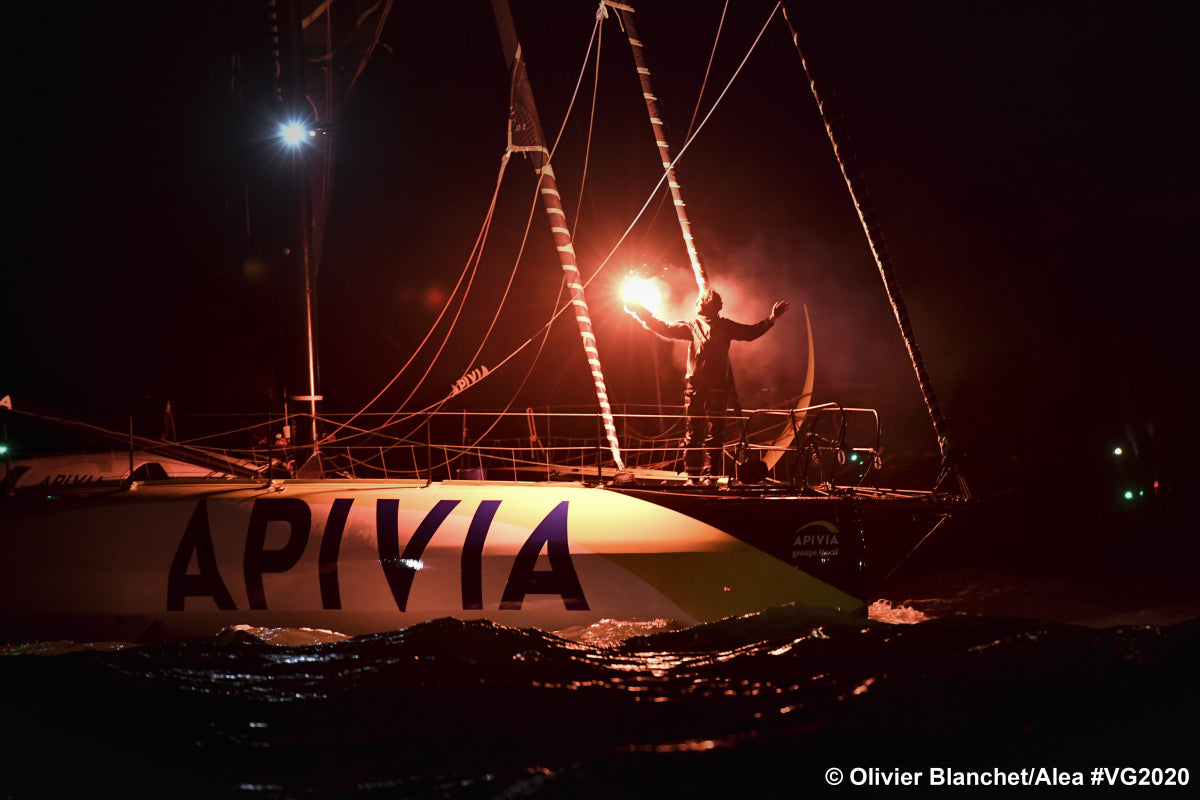
LIVE UPDATES: THE VENDÉE GLOBE FINISH
LIVE UPDATES: THE VENDÉE GLOBE FINISH
Following the Fleet Home After 24,000 Miles Around the World
The Vendée Globe 2020-21 fleet is arriving back to Les Sables-d’Olonne after completing their 24,000-mile circumnavigation. This solo, non-stop, and without assistance marathon is one of the most difficult sailing events. Reaching the finish line, regardless of position, is considered a remarkable accomplishment. 25 competitors will complete this 9th edition of the race. 8 skippers were forced to retire the race, including Kevin Escoffier who was plucked from his safety raft by fellow competitor Jean Le Cam after his boat folded in half.
North Sails is proud to power the engine above deck for 22 IMOCAs participating in the 2020-21 race. Join us on this page as we follow the finish and welcome the skippers back into port.
Race Tracker
February 3, 2021 5:10pm GMT
She did it!
After 87 days, 2 hours, 24 minutes, and 25 seconds, young skipper Clarisse Cremér on Banque Populaire X is the first woman to cross the line in the Vendeé Globe 2020-21. Cremér is 12th overall, and has broken the previous female record set by Ellen MacArthur 20 years ago, which was 94 days and 4 hours.
With a reliable and fast boat, Cremér preserved her IMOCA throughout the 87 days and was very focused on every detail to keep things in control. It’s been exciting seeing her check-in throughout the adventure, showing her energy and determination while offshore. The team’s support for Clarisse in this race has been solid. Banque Populaire teammate and mentor Armel L’Cléach rode out to celebrate this young sailor’s fantastic accomplishment and welcome her home.
📸 Adrien Francois/Alea
Cremér’s first IMOCA experience was doublehanded racing in the 2019 TJV with Armel L’Cléach. Her first solo race was in the 2020 Vendée Arctic, where she finished 12th. A 12th place finish in the Vendée Globe is the icing on the cake for Cremér, her team and her country as a highly motivated and driven female role model for women in sailing.
As the Banque Populaire technical team jumped aboard to congratulate her, emotions were high. She gave up control of the boat for the first time in almost three months, and took a few moments to celebrate her accomplishment free of any more responsibilities.
It was clear the team made a great choice in Cremér for the 9th edition. Her boat was set up perfectly to allow her to accomplish her goals, push the limits and show just how much hard work she’s willing to put in to everything she does. She’s already talking about coming back for another Vendée Globe. We will be here too, cheering her on every step of the way.
Brava Clarisse!
📸 Olivier Blanchet/Alea
February 2, 2021, 3:00pm GMT
It’s not over yet…
Benjamin Dutreaux on OMIA – WATER FAMILY*, Maxime Sorel on V and B-MAYENNE, and Armel Tripon on L’Occitane en Provence have now reached the finish in 9th, 10th, and 11th place in what were the most challenging conditions in the final approach into Les Sables-d’Olonne.
Benjamin Dutreaux, race rookie, arrived at the game late but has successfully crossed the line 9th in his first non-stop, unassisted round the world adventure. Congratulations Ben!
Before the start of the 9th edition, Armel Tripon was already a familiar face in ocean racing. Over the course of his 84 days at sea he shared the importance of experience and determination, and the value of resilience. all of his offshore accomplishments, Tripon has risen above the hard moments;taking every moment in so he can be better next time. He iss the perfect example of a sailor with an immense passion for the sport that puts his heart and emotions into every maneuver and every decision. For another first timer in the Vendée Globe, we are very proud!
Tripon commented, “I am lucky to have been able to race, to do what is my job. Every day I thanked my partner for allowing me to live this dream. I didn’t want to spoil it. I had an exceptional boat which was very well prepared. I got to know it well so I could push her harder and harder. It was a big chase to get back to boats as we went along. It was motivating. I really enjoyed playing with the weather systems and finding lines. Every day is to be celebrated on the Vendée Globe”
📸 Olivier Blanchet/Alea
All eyes to the finish now to prepare for the 12th place finisher and first female to arrive; Clarisse Cremér on Banque Populaire X. At 31 years old, Clarisse is the youngest skipper to finish this edition race, and is currently chasing a chance to break Ellen MacArthur’s 20-year old race record for women finishing in less than 94 days and 4 hours. A non foiler and first timer, she’s no doubt won the hearts of female sailors worldwide and to see her complete the race, let alone finish in the top half is truly remarkable and an inspiration to all.
She commented, “Boris’ story gave me a shock. I will have to be on the lookout until the finish, I have crossed the lanes and they were busy and I just had to slow down at one point to let a cargo ship pass. I can see them on the AIS so it is OK just now.
It will not be easy to slow down in 30 knots of wind so I think I will be under 3 mainsail reefs only and I will try to accelerate to aim for a finish tomorrow afternoon. It’s not easy to predict an exact finish time, it’s a new exercise!”
📸 Clarisse Cremer / Banque Populaire X
Meanwhile, Jeremie Beyou on Charal is battling the conditions near the Azores, in 35 knots and gusts ranging from 45-50 knots. The conditions are exhausting and it doesn’t look like it will improve the closer he gets into range of the finish.
Romain Attanasio on PURE Best Western is also in the same boat just a tad further North, wondering if the weather will let up, exhausted, and pushing on.
Spirits are high and adrenaline is pumping as the next three boats get closer to the finish port. We are keeping an eye on the race tracker and wishing all skippers the very best of luck and safety as they press on into the final sprint of the race.
To be continued…
January 28, 2021, 1:05am GMT
Yes He Did!
Jean Le Cam has crossed the Vendée Globe finish line. Le Cam secured fourth place on the leaderboard after receiving his time compensation of 16 hours and 15 minutes for his assistance to Kévin Escoffier. Jean has been part of the race since the 2004-05 edition and is known for his camaraderie, excellent navigation skills, sincerity, and passion for the sport of sailing.
Le Cam won the hearts of fans around the world in his valiant recovery mission of Escoffier from his life raft on December 1st. In a twist of fate, Escoffier abandoned PRB the same IMOCA which Le Cam boarded in 2008 after his keel snapped off and his boat capsized off Cape Horn. Apart from finishing the race and placing in the top five overall, Jean le Cam has shown true sportsmanship as a Vendée Globe race veteran, and is also a role model and mentor for many new to the race.
📸 Yvan Zedda / Alea / #VG2020
With Le Cam’s finish, we have a standing shuffle, bumping Boris Herrmann, Thomas Ruyant, Damien Seguin and Giancarlo Pedote to fifth, sixth, seventh, and eighth respectively. Pedote’s first race participation is significant, and his consistency and determination has allowed him to accomplish what no other Italian has before, setting a personal record not only for himself but for his country.
Pedote commented;
“I managed to complete my round the world and race at the same time with rather reduced means and a small team that did not have the experience of a Vendée Globe. It is a satisfaction for me.”
The top 10 will be rounded out by Benjamin Dutreux (Omîa – Water Family) and Maxime Sorel (V & B-Mayyene) who are expected to finish this evening local time.
January 28, 2021, 4:30 GMT
Bestaven and Dalin Share Vendee Globe Honors
Since November 8, the 2020-21 Vendée Globe has left us on the edge of our seats, and now three months later, we’re watching eagerly as the finishers have been trickling in. From sinkings to accidents, this Vendée Globe has been truly special. Now, with the “famous five” lead pack ending their around the world journey all within 24 hours of each other, this Vendée Globe finish is officially the closest in the history of the race. Here’s a quick recap of the past 24 hours:
Charlie Dalin’s Apivia claimed line honors, completing his circumnavigation in 80 days, 6 hours, 15 minutes, and 47 seconds. A Vendée rookie, he remained in the lead for the majority of the race and overcame what could have been race-ending foil damage early on in the Southern Indian Ocean. Coming into the finish, Dalin crossed the line at full speed hoping to put as much time between him and the rest of the pack who all finished just a few hours after him in what now is the closest Vendée Globe finish since the race’s start in 1989.
Yannick Bestaven of Maitre COQ crossed the line 7 hours, 43 minutes, 59 seconds after Dalin. He benefits from a 10 hour and 15 second time credit for his support in Kévin Escoffier’s dramatic rescue, as a result, he is named the overall winner of the Vendée Globe 2020-21. Bestaven is one of two skippers that led the fleet for the longest time: 26 days. When he crossed the finish line, the spectators were shouting from their balconies to celebrate his finish and pay tribute to his amazing accomplishment as the corrected time overall Vendée Globe trophy winner.
Yannick commented upon finishing;
“I feel like I’m living a dream, hallucinating. You go from total solitude to this, to this party, to these lights, these people who are there despite the complicated context, I don’t realise what’s going on. I’m still in my race. It’s a child’s dream.I always believed I could do it, but in what position? I thought I would win at Cape Horn, but then I thought that if I finished 25th, then that would be good enough. We prepared a lot for this Vendée Globe, I knew I had a reliable boat and I was able to pull it off. This result is beyond my expectations. I imagined living many things, I have lived many others. After having fought as I have fought, bringing a victory to Maître CoQ IV is a dream!”
Louis Burton crossed the line second, 4 hours, 9 minutes, and 25 seconds after Dalin, and has solidified third place overall on the scoreboard. Sailing around the world at an average speed of 12.6 knots, this race was a great achievement for the seasoned sailor who’s completed eight transat’s and two around the world solo trips. With this Vendée Globe finish, Burton improved his personal record by four places after coming in 7th in the 2016-17 edition.
Boris Herrmann, who had a 6-hour time credit was in prime positioning for the top spot, when he collided with a fishing boat 90 miles from the finish line. Fortunately, Herrmann was not hurt in the collision, however he did suffer boat damage which forced Sea Explorer to limp to the finish line, arriving home on the morning of January 28. He currently sits in 4th place and must wait for the arrival of Jean Le Cam to determine his final position on the scoreboard.
Thomas Ruyant on Linked Out rounded out the “famous five” and arrived after 80 days, 15 hours, and 22 minutes covering 24,365.74 miles at an average speed of 12.59. One of the race favorites of the 9th edition, Ruyant was in the lead pack for a good portion of the race. Despite foil damage, he pushed forward to finish the race– only highlighting his determination to not let anything prevent him accomplishing his finish line goal. In the early hours of the 28th, in tough sailing conditions and surrounded by darkness, he hedged across the line. Four years ago, Ruyant was unfortunately forced to retire from the race. This time, Ruyant successfully completed his world tour with a smile on his face so large that it spoke to his ambition and mental strengths to persevere despite the challenges.
Following Ruyant, Damien Seguin on Groupe Apicil and Giancarlo Pedote on Prysmian Group. Groupe Apicil came in hot to the finish at 20 knots as the first non-foiler to finish the race, which is one of his many stand-out accomplishments in this 9th world tour. With still uncertainty for time owed to Le Cam, He and Seguin now wait patiently for their comrade to cross the line to determine their final positions.
To be continued…
January 28, 2021, 1:30 GMT
Burton Reached Les Sables-d Olonne
Bureau Valleé 2, skippered by Louis Burton, is second to reach the Vendée Globe finish line. Burton completed his circumnavigation in 80 days, 10 hours, 25 minutes, and 12 seconds. The 2020-21 race is his third Vendée Globe, most recently having placed 7th in the 2016-17 edition of the race, a remarkable position considering his former boat was deemed one of the heaviest in the fleet. In his latest adventure, Burton acquired Banque Populaire VII, the foiling IMOCA, which carried Armel Le Cléac’h to a record-breaking race.
Congratulations to Burton on his Vendée Globe success and we hope he gets some well deserved rest.
Oliver Blanchet / Alea
January 27, 2021, 21:00 GMT
#NSVictory List: Bravo Charlie!
Charlie Dalin flew across the finish at 20 knots to take line honors in the Vendee Globe 2020-21. Dalin arrived at Les Sables-d Olonne after 80 days and six hours, in a race that would not let up. A Vendee Globe rookie, he remained in the lead for the majority of the race and overcame what could have been race-ending foil damage early on. Coming into the finish, Dalin did not, and could not, take his foot off the gas though, as the top five competitors will arrive home mere hours after him, in what might be the closest Vendee Globe finish ever.
To add complexity to this edition, Dalin will remain on standby until the overall winner is declared; both Boris Herrmann and Yannick Bestaven have a time correction after being rerouted to support Kevin Escoffier. Herrmann was awarded a total of six hours for offering assistance and Bestaven ten hours, fifteen minutes.
Olivier Blanchet/Alea
The around the world race is a solo, non-stop, and without assistance, marathon covering over 20,000 nm, and is one of the most difficult sailing events in the sport. Reaching the finish line, regardless of position, is considered a remarkable accomplishment, and often the sailors who finish last are the sailors who’ve won our hearts. Over the next week, 25 competitors will finish the 9th edition of the race. Eight skippers were forced to retire, including Kevin Escoffier who was rescued from his life raft by fellow competitor Jean Le Cam. Escoffier’s boat folded in half in large seas shortly before the Cape of Good Hope in the South Atlantic Ocean. Le Cam was given 16 hours and 55 minutes for his assistance.
North Sails is proud to supply 3Di and Helix Structured Luff sails to power the engine above deck for 22 IMOCAs participating in the 2020-21 race. Join us on this page as we follow the finish and welcome the skippers back into port.
January 27, 2021, 19:00 GMT
Watch the Finish Live
January 26, 2021, 18:30 GMT
An Ultra Competitive Fight to the Finish
With the leading pack showing a tight gap, the suspense will be high until the end. This single-handed round-the-world race could even end in a sprint; never seen before in the history of the Vendée Globe. The designers of North Sails France take stock of this exciting 9th edition full of twists and turns.
What do you think of this edition? What surprised you the most in this first part of the race?
It’s an incredible edition. This Vendée Globe is very competitive, and things are happening every day! We followed it closely, and we continue until the end! We can’t wait to see them arrive.
In this first part of the race, like many people, we were surprised by the bad conditions the fleet encountered and the number of technical problems with hooks, rudder, foils, sails, structure, pilot, etc. We were also impressed by the poor delta performance for the foilers against Jean le Cam’s boat (Yes We Cam!) and Benjamin Dutreux’s boat (Omia – Water Family). The weather surely contributed to the fact that the foilers did not dig an incredible gap with the non-foiling boats.
And of course, the rescue of Kevin Escoffier (PRB) by Jean Le Cam is particularly noteworthy. Frankly, it reminds us of the Vendée Globe of our youth!
The new foilers are put to the test in this Vendée. Is it linked to the weather that varies from one edition to the next? Is it a question of luck to pass a front without problems and without a UFO? Or is it because of the new materials that we always want thinner and lighter?
The skipper can deal with a front, it depends on his strategy. Then there are the damages due to design problems that are part of the evolution of these boats. As for hitting a UFO, all the boats are equal. It is a strong random part of this competition which is not predictable for the moment. Probably the latest generation of foilers rake wider and statistically, they are more likely to encounter a UFO. The IMOCA class is working on a sonar sys
READ MORE
READ MORE
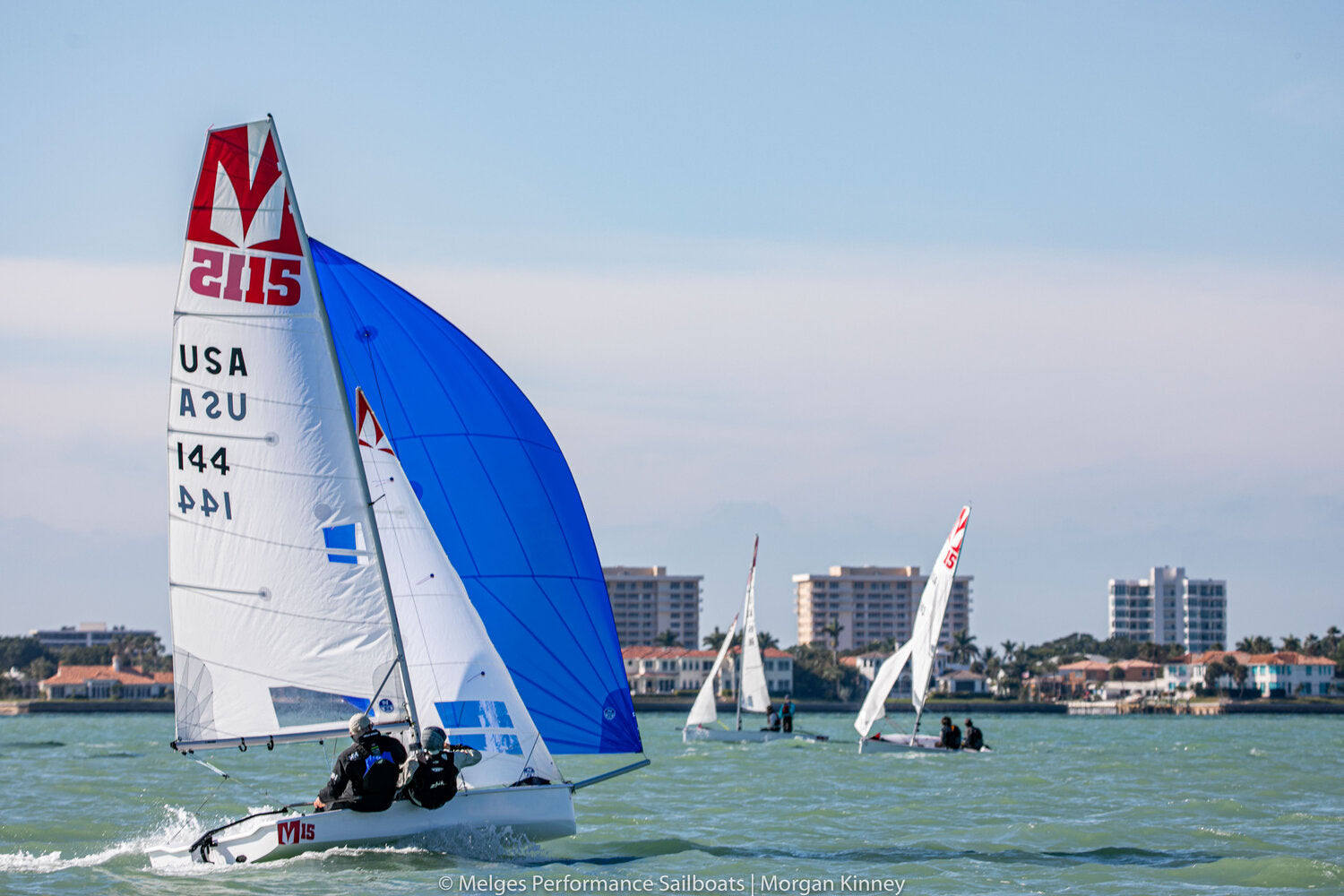
MELGES 15 WINTER SERIES DEBRIEF
MELGES 15 WINTER SERIES DEBRIEF
North Sails Expert Mike Stark Shares His Take on the Inaugural Midwinter Regatta
You stated before you left, this was a new boat/class. What did you think?
The boat is awesome. We had to finish putting it all together since it has never been rigged before and the entire process was very simple. The boat was well thought out. After we put it together we contemplated on going out for a quick practice as the wind was in the mid 20's with gusts to 30. We decided to go out real quick just to get back in a boat and make sure all the rigging/new boat kinks were worked out. It was unbelievable how stable and fast these boats are. Even in the high winds, we never felt like we were in "survival mode."
Before you left your goal was Top Five. How did you do?
We did it! We got off to a shaky start in the first race but ended up figuring out a few things pretty quick which allowed us to have consistent finishes in the top 6 and keep it mixed up with the very talented sailors at the top. We ended up tying for 4th (losing the tie breaker), and won the Masters division (a touchy subject with my skipper).
What were the weather conditions like?
Cold! The day after we arrived a cold front came through. Although it brought the wind up, it certainly brought the temperatures down. Saturday was cloudy with a high of 61 degrees and wind ranging from 13-18mph with gusts just above 20. Sunday, the air was 47 degrees when we splashed. The first race was a bit breezy around 10-12 mph. The sun came out for the second race killing the wind allowing for only 3 boats to finish.
This was your first one design regatta since COVID, what was it like?
It was very different, especially with this being a new class and not knowing many competitors. There was a limit to 25 boats for the regatta, we had to get our temperatures taken and answer questions every day on arrival, masks had to be worn at all times on the property, and the normal end of day meal/talking around the keg was certainly missed.
There are two more regattas remaining in the winter series. Do you plan on competing in them? If so, does your goal change?
George and I have certainly talked about it, and we would LOVE to. There may be a couple issues we each have making it to the February dates, but definitely look forward to making the trip in March. I don't think our overall goal will change. I think top 5 is certainly a great goal for the competitors in our class and the time we're going to be able to get in the boat until then (none). But I do think we add to it, maybe a goal will be to win a race, or all races in the top 5, things like that.
What are your final thoughts on the class?
I cannot say enough good things about the Boat and the class. The boat manufacturer was on sight ready and willing to help at a moment's notice. It was very easy to tow, rig, de-rig, and sail. The boat is extremely fast, stable, and set up in a simple way so the amount of lines is very minimal. The class was a perfect mixture of age ranges, with a ton of family oriented teams. The talent level ranged from All American college sailors and multiple national champions, to junior sailors with only a few years of experience. The one common theme I noticed was everybody having fun and huge smiles (especially while planning downwind.)
READ MORE
READ MORE

AN ULTRA-COMPETITIVE VENDÉE GLOBE
AN ULTRA-COMPETITIVE VENDÉE GLOBE
The 9th Edition of the Vendée Is Coming to a Close
📸 Jean-Marie Liot/Alea
The first competitors of the Vendée Globe are expected on the morning of Wednesday, January 27 (local time) in Les Sables-d’Olonne after more than 11 weeks at sea and 24,000 miles covered around the globe.
The designers of North Sails France take stock of this exciting 9th edition full of twists and turns. With the leading pack showing a tight gap, the suspense will be high until the end. This single-handed round-the-world race could even end in a sprint; never seen before in the history of the Vendée Globe.
What do you think of this edition? What surprised you the most in this first part of the race?
It’s an incredible edition. This Vendée Globe is very competitive, and things are happening every day! We followed it closely, and we continue until the end! We can’t wait to see them arrive.
In this first part of the race, like many people, we were surprised by the bad conditions the fleet encountered and the number of technical problems with hooks, rudder, foils, sails, structure, pilot, etc. We were also impressed by the poor delta performance for the foilers against Jean le Cam’s boat (Yes We Cam!) and Benjamin Dutreux’s boat (Omia – Water Family). The weather surely contributed to the fact that the foilers did not dig an incredible gap with the non-foiling boats.
And of course, the rescue of Kevin Escoffier (PRB) by Jean Le Cam is particularly noteworthy. Frankly, it reminds us of the Vendée Globe of our youth!
What is your analysis in the second part of the race?
Nothing can be taken for granted! The weather allowed for some regroupings and some changes in the rankings. Each sailor’s way of sailing is revealed even more. Some attack hard, others control.
Otherwise, the boats are no longer 100% as they were in the first part. The speed polarities of each one are thus completely revised, it is all the more difficult to analyze. It is then difficult to really know what the full potential of the sailor/boat pair is between technical problems and fatigue.
📸 Maître CoQ / Jérémie Beyou
What do you think of these high-profile skippers forced to give up so abruptly?
Unfortunately, it’s part of the Vendée Globe rule. It remains a mechanical sport. We are sad for them and for their team. We hope they will come back for the next edition!
It would be a record edition considering the percentage of boats still on the water (76 percent), how do you explain it?
Frankly, it’s paradoxical, because there were few of them that had to abandon and yet it seems that the conditions have been particularly tough. Let’s wait for the finish to affirm this percentage, the race is not over. Having said that, the weather has surely pushed the skippers to be more cautious with their boats.
📸 Romain Attanasio / Pure – Best Western
The new foilers are put to the test in this Vendée. Is it linked to the weather that varies from one edition to the next? Is it a question of luck to pass a front without problems and without a UFO? Or is it because of the new materials that we always want thinner and lighter?
The skipper can deal with a front, it depends on his strategy. Then there are the damages due to design problems that are part of the evolution of these boats. As for hitting a UFO, all the boats are equal. It is a strong random part of this competition which is not predictable for the moment. Probably the latest generation of foilers rake wider and statistically they are more likely to encounter a UFO. The IMOCA class is working on a sonar system to avoid this. It’s still quite new, but it’s a step in the right direction.
What about sails? Are they also being put to the test?
Yes, with the higher accelerations, and even more so with the foilers. Not because the sailors pulled on them, but. maybe even the opposite because they sailed with less pressure to slow the boat down due to the sea state, and the movements of the sails were very dynamic. It is too early to draw conclusions.We will take stock with them and review with the teams once they’re back on land.
📸 Kojiro Shiraishi / DMG Mori
What happened on Kojiro Shiraishi’s mainsail (DMG Mori) ? How did you assist the skipper to repair it remotely? How do you reinforce a sail?
Kojiro had pilot’s issues that resulted in untimely and violent gybes that eventually damaged the mainsail. It ripped at batten #2. We helped the skipper to work out the best way to repair the sail. In this case, two pieces of the mainsail had to be spliced together by gluing them together and using part of the sail under reef # 1 as a replacement material.
Do the skippers necessarily have a repair kit on board? Do they learn how to repair sails?
Yes, the skippers have a repair kit (big or small depending on their choice) and know how to use it. 3Di is a is well adapted to repairs at sea. But the sailors are not specifically trained to repair sails, they are trained for many technical interventions in the boat which can be more complex especially in a confined and humid space. But this is a point that we have been thinking about a lot and are still working on with the aim of simplifying repairs. Of course, the best repair is the one that is not done.
📸 Armel Tripon / LOccitane en Provence
What is the next step after the race regarding sails?
Debriefing, meticulous verification of the set of sails, feedback from the skippers and a technical review with the teams to consider the next steps. For some, it has already partly started. Depending on the budget and the good state of sails, we will establish and work on the inventory for the Transat Jacques Vabre scheduled in October 2021.
Have you analyzed the race by studying the next sail designs? If yes, how do you see the future sails for the Vendée Globe?
No, it’s still too early even if we can think about some ideas. We don’t know much behind our screens. It seems more logical to wait for the debriefing with the skippers and keep the conclusions carefully to really move forward. The boats will evolve as well as the rules. As a Vendée Globe is unlike any other race, it will be imperative to come back to the debrief in three years’ time to arbitrate the developments that are made in transatlantic-type races.
There is also clearly an ecological issue that cannot be ignored. It is up to us to find the solutions to respond to it as best and as quickly as possible.
📸 Pierre Bouras / TR Racing / DPPI
How do you see the future generation of Vendée Globe boats? Foil or no foil?
The next IMOCA boats will be foil boats, that’s for sure! They will be more reliable with fully enclosed cockpits that will allow these boats to be pushed even faster.
The question of the target speed for which the general design must be optimized will therefore arise. Going at 30 knots in the bay is good, but we can see that on a Vendée Globe, the average speeds are much lower, and these are the ones that will have to be improved.
What is your prediction?
Difficult to say, because the gaps between the leaders are very tight and three boats will benefit from a bonus for rescuing Kevin.
READ MORE
READ MORE

MELGES 15 WINTER SERIES PRE RACE SNAPSHOT
MELGES 15 WINTER SERIES PRE RACE SNAPSHOT
Service Expert Mike Stark Shares Insight Into The New Class
Chelsie Strong from the North Sails team in Detroit catches up with service expert Mike Stark as he headed into a new class and regatta with the Melges 15. In anticipation of the first Melges 15 regatta held in Sarasota, FL, I spent some time chatting with Mike Stark, a full time sail maker for North Sails Detroit, who competed in the first winter series regatta. We discussed his sailing background and I found out that he started sailing at a young age, 7, to be exact. Between sailing on his dad's various boats as a kid and learning to race in the Optimist Class at age 11, Mike became intrigued with the sport. He continues to expand his competitive scope to this day and is now comfortable sailing on big boats, in single-handed events, One Design and Handicapped races. His most recent racing experience being on the Tartan 10 I-Ball program where over the past 4 years they have improved steadily from not placing in the North Americans to placing 3rd in 2018 and 2nd in 2019. Mike is one the few people who can say his hobby has turned into a career. This is probably due to his skill on the water and as a service sail maker. I asked Mike if his knowledge as a sail maker translates into competitive sailing. He felt that anyone who wants to can become a great competitive sailor, but being able to think outside the box and having access to more resources is attributable to working as a sail maker. Mike accepted the invite to race in the Melges 15 regatta from his friend and fellow competitive sailor, George Sipel, in between servicing sails for North Sails Detroit. With the Melges 15 being a new boat, he went into the event with an open mind, but had heard the boat was supposed to be simple to operate and more comfortable to sail in. We talked about Mike’s personal goals, reasons for going and pre-race routine before he set off for the 17 hour drive from Detroit to Sarasota. With winter in full swing here in Michigan, who wouldn’t want the opportunity to compete in southern Florida right now? Although he wasn’t sure about the other competitors, he was aiming to finish top 5. In addition the timing was right with work and family life. Mikes pre-race routine includes checking the weather first thing, arriving early to prep the boat, good music to keep him focused and most importantly, Coffee.
READ MORE
READ MORE
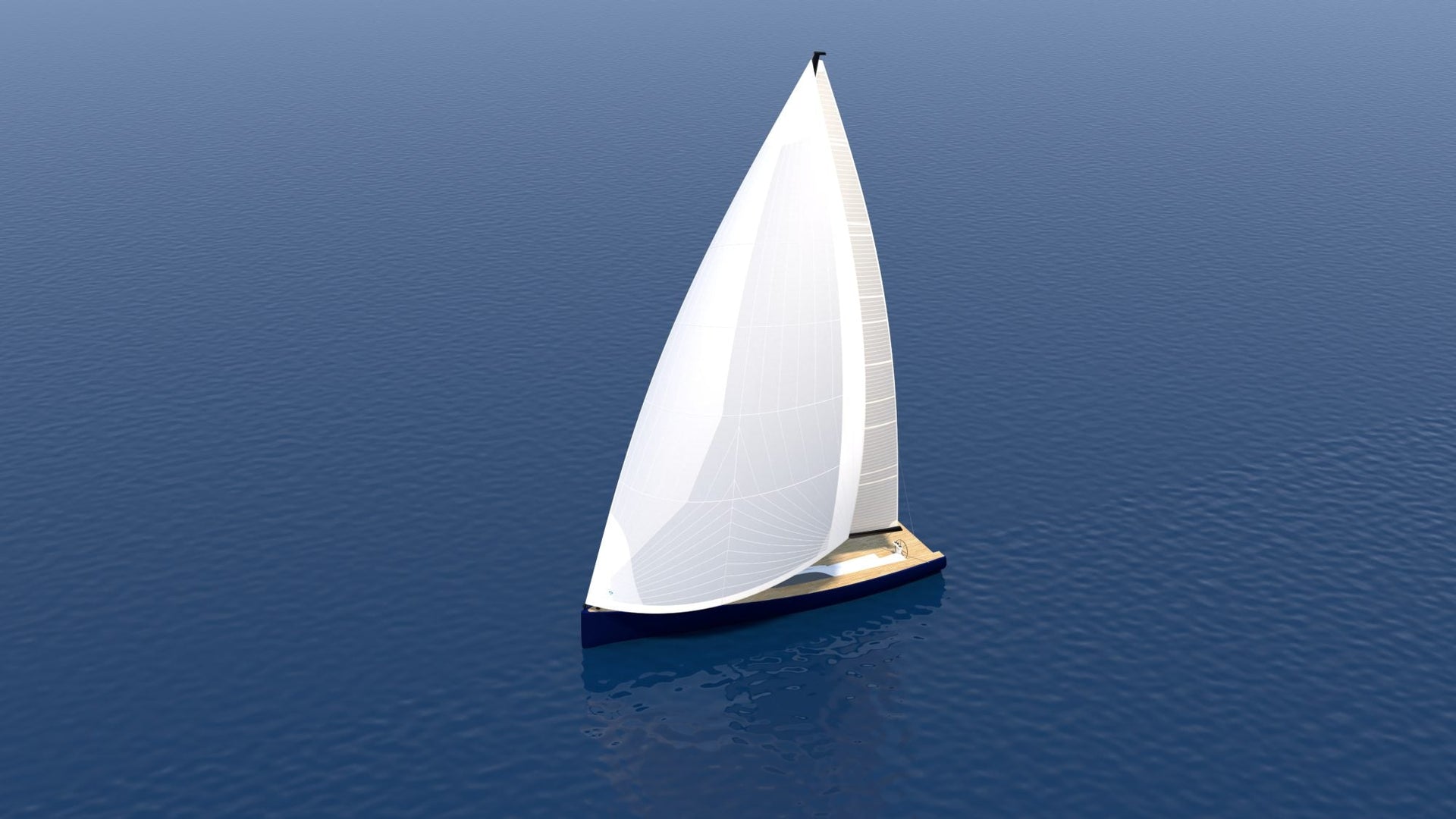
INTRODUCING THE HELIX FURLING GENNAKER
NORTH SAILS ADDS HELIX STRUCTURED LUFF TO CRUISING SAILS
Introducing Easy To Use, Accessible Performance
North Sails is excited to introduce the Helix Furling Gennaker, a new sail type for the cruising community. The structured luff Helix Furling Gennaker eliminates the heavy cable needed for traditional furling and is the most reliable and easy to use top-down furling cruising sail in the world.
Helix Structured Luff transforms how sails fly and is key to building a modern inventory. Our cruising sails with structured luff provide a more reliable furl than a sail weighed down with a heavy furling cable, are lighter and easier to handle, and have a wider range of wind angles. That cuts down down the number of sails you need onboard, as well as wear and tear, which make them the perfect downwind addition to your cruising wardrobe.
“By incorporating a Helix Structured Luff system into a G1-style sail, we have created an easy to fly, easy to furl, and easy to stow downwind sail uniquely engineered for cruising.”
The Helix Furling Gennaker concept developed out of a 2019 design meeting, explains JB Braun, North Director of Design and Engineering. “Helix sails were delivering fast, reliable furling for racers. But non-racers typically don’t sail at the same aggressive angles, so they needed a downwind sail for deep angles without the complexity of massive, heavy, sails. By incorporating a Helix Structured Luff system into a G1-style sail, we have created an easy to fly, easy to furl, and easy to stow downwind sail uniquely engineered for cruising.”
With a range of materials to choose from, a Helix Furling Gennaker is customized to boat size and use: from family cruiser to superyacht. Once reserved for 3Di sails, Helix Structured Luff is available in a range of materials from woven polyester to 3Di. Where requested, an optional LightWeight UV Cover can be added to the Helix Furling Gennaker.
In 2016, North Sails doubled -down on cruising product development, and the results have been astounding. The world’s leading sailmaker has released three cruising-dedicated product offerings since 2017; 3Di NORDAC, 3Di OCEAN 370, and then a full revamp of the 3Di OCEAN product line up in early Spring 2020. The Helix Furling Gennaker is our latest significant example of a fast-tracked, adapted technology. Helix Structured Luff is a design philosophy that transfers the best of Grand Prix sail handling into a lighter, reliable, user-friendly cruising gennaker.
The Helix Furling Gennaker is available for order now for spring delivery. To learn more, contact your local North Sails expert.
PRODUCT DETAILS REQUEST A QUOTE FIND AN EXPERT
READ MORE
READ MORE
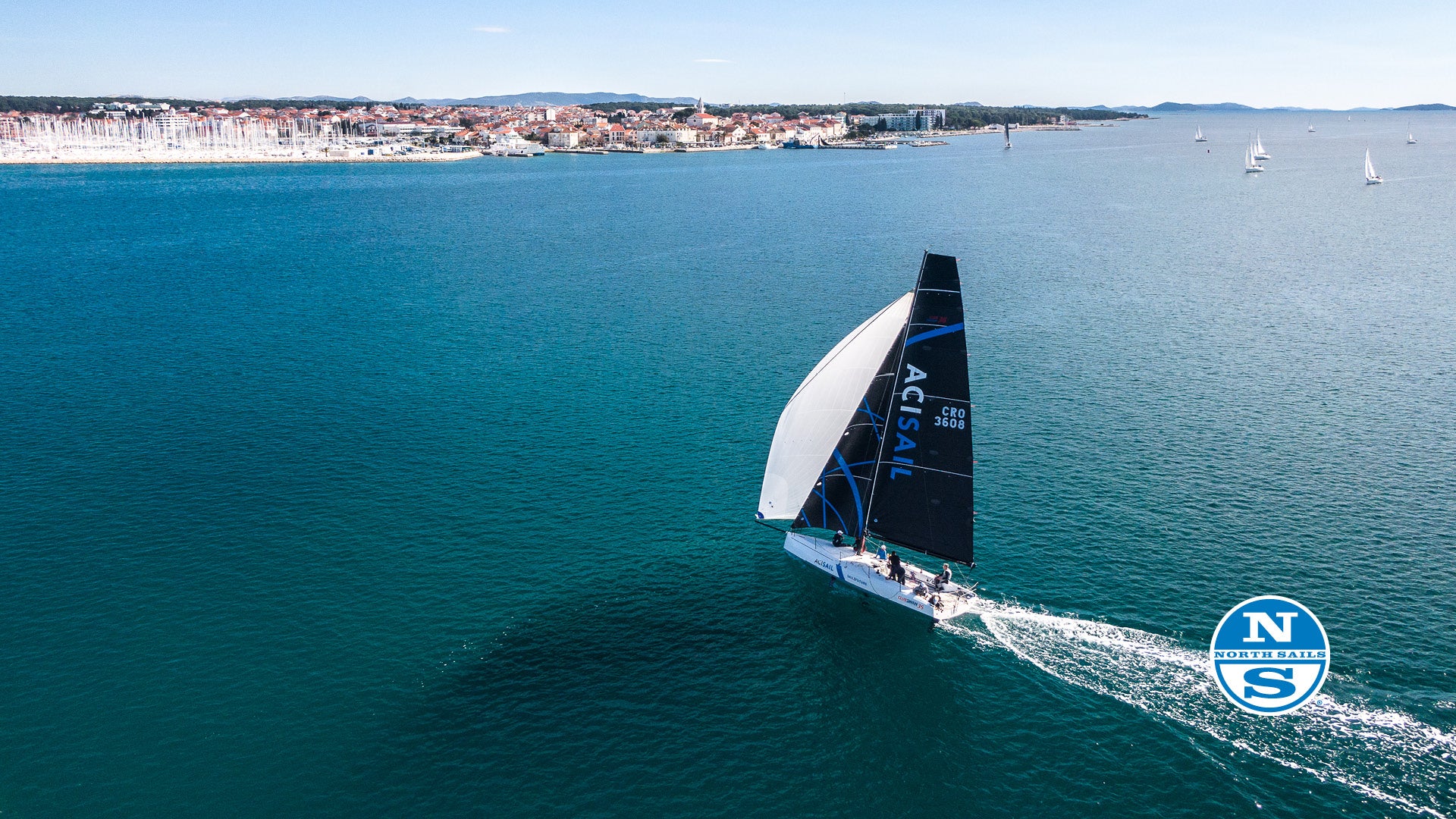
NORTH SAILS ZOOM BACKGROUND DOWNLOAD
DOWNLOAD YOUR ZOOM BACKGROUND
Show Friends & Colleagues Where You’d Rather Be (other than on Zoom!)
Need a change of scenery from your ‘home office? Jump onboard with North Sails Zoom Backgrounds and put yourself out on the water! Zoom is now an integral part of our daily workflow, so we’ve created a selection of backgrounds for you to choose from to upgrade your Zoom experience. Put yourself in the cockpit of a VO65, battling the Southern Ocean, or on the deck of a J Class superyacht. More into the cruising lifestyle? Sit back and relax on the leeward side and take in all the feels of a warm, open-ocean breeze. Whether you are Zooming with friends or with work colleagues, you can now set the scene and show your fellow Zoomers where you’d rather be. Click on any background below to download.
Download Background
Download Button Interstitial
First Name
*
Last Name
*
Email
*
By entering your email address, you agree to receive emails from North Sails as well as promotional offers and announcements from North Sails. Collected information will not be shared with any third party.
Privacy Policy Opt-In
*
I have read and understand North Sails privacy policy
Age Consent Opt-In
*
I am 16 years or older
Continue
Download Background
Download Button Interstitial
First Name
*
Last Name
*
Email
*
By entering your email address, you agree to receive emails from North Sails as well as promotional offers and announcements from North Sails. Collected information will not be shared with any third party.
Privacy Policy Opt-In
*
I have read and understand North Sails privacy policy
Age Consent Opt-In
*
I am 16 years or older
Continue
Download Background
Download Button Interstitial
First Name
*
Last Name
*
Email
*
By entering your email address, you agree to receive emails from North Sails as well as promotional offers and announcements from North Sails. Collected information will not be shared with any third party.
Privacy Policy Opt-In
*
I have read and understand North Sails privacy policy
Age Consent Opt-In
*
I am 16 years or older
Continue
Download Background
Download Button Interstitial
First Name
*
Last Name
*
Email
*
By entering your email address, you agree to receive emails from North Sails as well as promotional offers and announcements from North Sails. Collected information will not be shared with any third party.
Privacy Policy Opt-In
*
I have read and understand North Sails privacy policy
Age Consent Opt-In
*
I am 16 years or older
Continue
Download Background
Download Button Interstitial
First Name
*
Last Name
*
Email
*
By entering your email address, you agree to receive emails from North Sails as well as promotional offers and announcements from North Sails. Collected information will not be shared with any third party.
Privacy Policy Opt-In
READ MORE
READ MORE
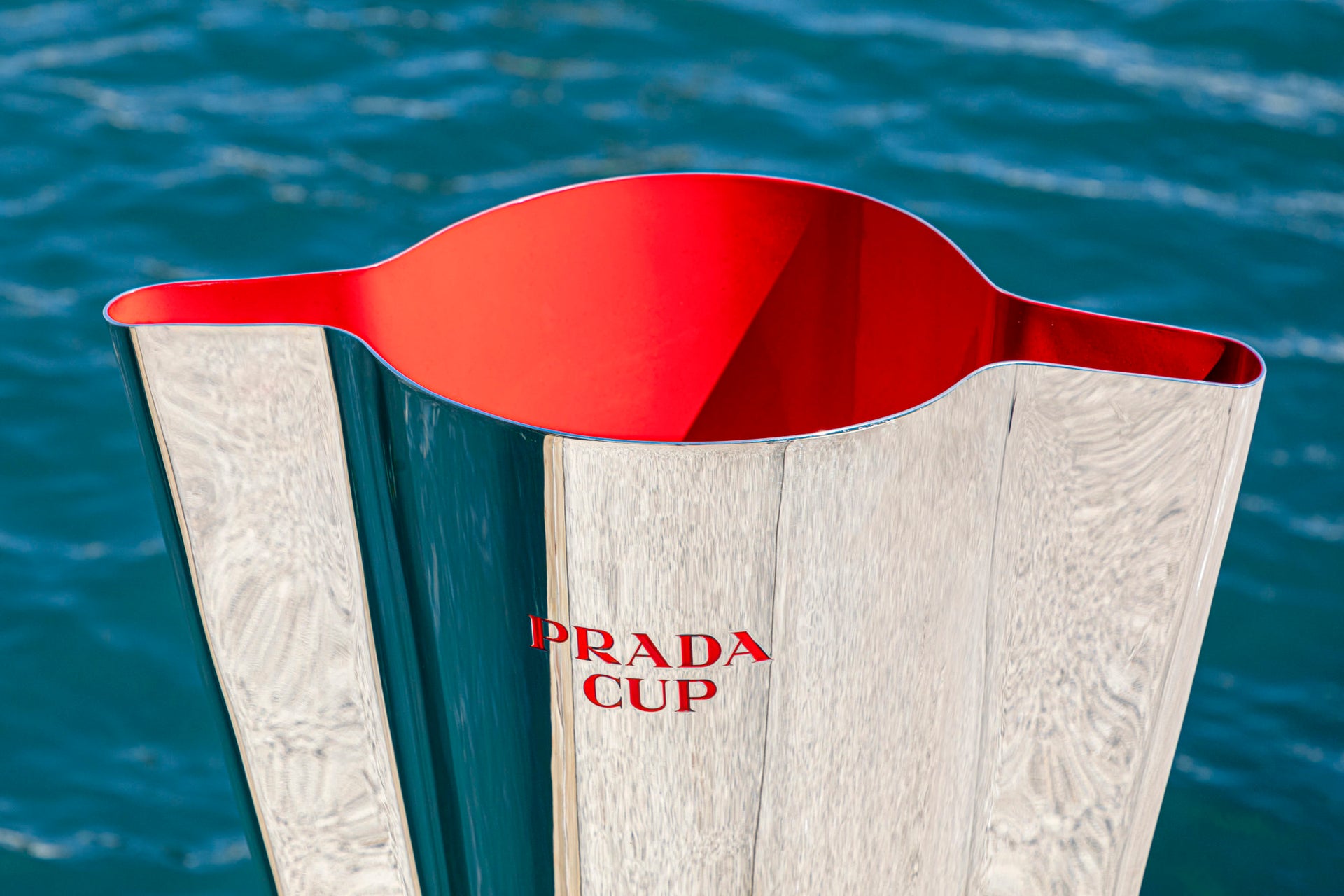
LIVE UPDATES: THE PRADA CUP
LIVE UPDATES: THE PRADA CUP
On-The-Ground Updates and Highlights from Auckland
With the PRADA Cup, the 36th America’s Cup is underway. It’s exciting for our sport and North as three of the four teams competing in this Cup cycle use North Sails, and our NTG family brands Southern Spars, and Future Fibres to power their engine above deck. Our group has also supplied design talent and software to support the teams’ quest for the Cup. And for those of you who want to dress the part, North Sails is an official partner for event branded clothing.
Racing begins January 15th at 1500 NZL time. Make sure to check your time zone if you’re watching remotely. North Sails will also be covering the PRADA Cup on this live blog and on our social channels throughout the next few weeks.
Race Schedule
January 30, 2021, 13:30 GMT
Winners are grinners in the PRADA Cup semi-finals
Luna Rossa PRADA Pirelli sailed confidently onto Course A in a light north-easterly that blew in smoothly from the sea. Two wins for the Italians would take them to the PRADA Cup finals to sail against INEOS TEAM UK, and eliminate American Magic.
COR 36 / Studio Borlenghi
Both races started evenly, and it seemed we finally had a boat race. Luna Rossa PRADA Pirelli had a slight speed advantage and the Spithill/Bruni team was taking nothing for granted. “Let’s keep the foot on the throat,” Spithill told his crew as they tacked to cover, despite a comfortable lead. Classic match-racing; classic Spithill.
But Luna Rossa was also pointing higher. Pointing higher meant fewer tacks, fewer tacks meant less distance sailed, less distance sailed meant two (seemingly) effortless wins. Over race one, Luna Rossa sailed 200 meters less distance and did two fewer tacks – enough for a decisive win.
Race 4, was match point– the do or die moment. Spithill applied pressure in the pre-start and gradually built a lead. Halfway through the race, PATRIOT suffered electronic gremlins with its foiling arms and gave Luna Rossa PRADA Pirelli the crucial fourth win.
Spithill credits the semi-final races for providing the team with valuable preparation for the PRADA Cup finals. “It was an advantage to do that series and we are the stronger for it,” he said. “The boat is going better and better,” Bruni added.
There is definitely new confidence in the Italian team. In the past week, in training sessions with their sailing coaches, they have found an estimated 10 percent improvement. That may include heightened confidence in the team-generated software that gives critical time-on-distance information to the startline and electronic boundaries.
And there was a definite swagger in Spithill’s voice as he crossed the finish line for the second time. “Nice one,” he said. “Now, INEOS boys.”
It was as though he knew they were watching…
📸 COR36 / Studio Borlenghi
January 29, 2021, 17:15 GMT
Luna Rossa PRADA Pirelli Pick Up Two Wins on Day 1 of the Semi-Finals
On day one of the PRADA Cup semi-finals, Luna Rossa PRADA Pirelli came into the start box with a game plan to own the start, and then pulled no punches for their recently repaired opposition, Patriot before leading them to the start line. Yes, it was an aggressive kick-off to the semi-finals of the PRADA Cup, a best-of-seven series, but it did just the trick– American Magic was knocked off their game and didn’t manage to get it back.
Once they were racing, the Italians held their lead and extended it around the eight-leg course, ending on with a generous delta. Then, they did it again in race two. Ouch. If Luna Rossa does that again on race day #2, they will sail straight into the finals to take on INEOS TEAM UK.
📸 COR36 / Studio Borlenghi
But, if we’ve learned anything about this America’s Cup, there is no such thing as a comfortable lead for an AC75 foiling monohull. Among the many new challenges of racing these boats, it’s easy to forget that optimum sail selection is still critical – especially when there’s no option to change sails mid-race. One could say, it’s a bit old school. The day was a day of shifty breezes, and the wind speeds ran up and down between the mid-teens and gusts in the 20s like quick little mice on a treadmill. To manage the shifty wind, Luna Rossa PRADA Pirelli went for a bigger mainsail and jib than its opposition, deciding to sail on the edge rather than being underpowered.
AC75 sails regularly operate in apparent wind speeds ranging from 10 to 70 knots in a race. Their sails can take immense loads, and can flatten, or depower, through that range. On day one of the PRADA Cup Semi-Finals Luna Rossa PRADA Pirelli got it right: go big, get plenty of power and then manage the control over that power. It’s risky, in theory, but it was a no brainer.
The shifty conditions might have offered some passing lanes, but Luna Rossa did not come under attack and had an almost perfect day, although their supporters let out a frantic gasp as Luna Rossa PRADA Pirelli bounced off their foils just after the windward gate in race two. With a comfortable lead, from then on, the team pulled out their training wheels and took the corner safely on both foils.
Going into races three and four we may well see this series wrapped up.
📸 COR 36 / Studio Borlenghi
January 23, 2021, 13:30 GMT
Nerves on a Knifes Edge
Heading into this weekend’s race with race 2 Round Robin 3 the question on everyone’s mind was would this be the race that would send Sir Ben Ainslie direct to the finals of the PRADA Cup with five wins straight, or would it give Jimmy Spithill and Francesco Bruni a big morale boost and a chance to fight again tomorrow.
As if scripted by Spielberg, it started on time. And stopped. And started. The wind shifts were messing with the race committee, there was an issue with the cunningham onboard INEOS TEAM UK, and by the time both boats charged across the line, the race was already a master class in suspense. The race would then go on to become the style of racing we’re all missing– nail-biting. Reflecting now, it was more like a tennis match or Le Mans endurance race, with something exciting happening every five seconds. If you weren’t on the edge of your seat, you were probably asleep.
On the first beat, Luna Rossa PRADA Pirelli attacked, luffing INEOS TEAM UK in a move that is high-drama for displacement boats with foiling arms not sticking out their sides. It worked! INEOS TEAM UK, in the windward position, had to tack away and fell off its foils. Luna Rossa was looking good as they took the lead. In earlier America’s Cup racing, PRADA would have taken off and it would have been game over for INEOS once they fell off their foils, but, like we mentioned earlier, Spithill-Bruni were not going down without a fight.
But the British team was nailing the shifts, so by the time the boats reached the top gate, the lead was nothing (a mere nine seconds!). Italy screamed in on port and tacked on top of UK, but in the shifty conditions, the maneuver was clumsy. The wakes of both boats drew a perfect half-donut in the water around the mark, but INEOS TEAM UK had the inside and the lead.
In a race that would see nine lead changes and more than 50 knots boat speed, the wind shifts put Luna Rossa PRADA Pirelli ahead. No wait, INEOS was ahead. No, PRADA. At gate four, INEOS TEAM UK pulled one of its signature slick moves and escaped– leaving PRADA almost in the dust.
Heading into the finish, Italy had one option left. On the final cross, it dialed down, tacked on to starboard, all with to hope a penalty as UK crossed ahead on port, but the umpire didn’t agree and let Britannia head for the line.
The race was awarded to INEOS TEAM UK. The scriptwriter got promoted. Sir Ben Ainslie and his underdog team remained unbeaten, clinched first place in the finals of the PRADA Cup, and made the last race of the Round Robins a box office hit. The British team will now have nearly three weeks to work on their boat and further develop it, whereas Luna Rossa PRADA Pirelli will have to continue heading to the start line next weekend.
Carlo Borlenghi / America’s Cup
January, 22, 2021, 22:15 GMT
Revised Round Robin Explained
Round Robins 3 and 4 have undergone a major rethink following the withdrawal of a challenger due to last Sunday’s near-sinking.
The revamped schedule canceled racing on Friday and has Luna Rossa Prada Pirelli and INEOS TEAM UK racing each other just once on Saturday and Sunday. That means it’s an all-out, head-to-head for the Brits and the Italians.
In the 2013 America’s Cup, Spithill came back from -2 to beat Team New Zealand and win the race in what’s easily considered the best sporting comeback of all time, but only after Ainslie had come onboard to help reverse the losing streak. In this lead-up to the America’s Cup, Ainslie is so far the comeback kid, after losing the ACWS in December; now, Spithill is running out of runway to overtake him.
No doubt, Spithill has done the math. INEOS TEAM UK has four wins from four starts. One win this weekend will take them straight to the final of the Prada Cup in February, and leave Luna Rossa Prada Pirelli to battle it out for the remaining spot next weekend.
Luna Rossa Prada Pirelli has two points, so if they win both Saturday and Sunday, they will be tied with INEOS TEAM UK at four points. As the winner of the most recent race, Luna Rossa Prada Pirelli, would win the tie and go to the final.
The team that misses the first spot in the finals will go on to compete in the semi-final against American Magic, which starts on Friday 29 January; it is a best-of-seven series. The losing semi-finalist will then pack their bags to go home.
Giles Scott of INEOS TEAM UK, says being the first team to the finals will be an advantage. “Winning the Round Robin buys you time to make more upgrades to the boat,” he says. “It’s going to be significant for whoever wins.”
In other news, regatta director, Iain Murray, has also revamped the racecourses to remove course A where the capsize occurred. From now on, almost all racing will be an extended Course C, a good all-round course with generally flat water. In the future, if an AC75 capsizes, the race will be abandoned.
Round Robins 3 and 4 have undergone a major rethink following the withdrawal of a challenger due to last Sunday’s near-sinking.
The revamped schedule canceled racing on Friday and has Luna Rossa Prada Pirelli and INEOS TEAM UK racing each other just once on Saturday and Sunday. That means it’s an all-out, head-to-head for the Brits and the Italians.
In the 2013 America’s Cup, Spithill came back from -2 to beat Team New Zealand and win the race in what’s easily considered the best sporting comeback of all time, but only after Ainslie had come onboard to help reverse the losing streak. In this lead-up to the America’s Cup, Ainslie is so far the comeback kid, after losing the ACWS in December; now, Spithill is running out of runway to overtake him.
No doubt, Spithill has done the math. INEOS TEAM UK has four wins from four starts. One win this weekend will take them straight to the final of the Prada Cup in February, and leave Luna Rossa Prada Pirelli to battle it out for the remaining spot next weekend.
Luna Rossa Prada Pirelli has two points, so if they win both Saturday and Sunday, they will be tied with INEOS TEAM UK at four points. As the winner of the most recent race, Luna Rossa Prada Pirelli, would win the tie and go to the final.
The team that misses the first spot in the finals will go on to compete in the semi-final against American Magic, which starts on Friday 29 January; it is a best-of-seven series. The losing semi-finalist will then pack their bags to go home.
Giles Scott of INEOS TEAM UK, says being first team to the finals will be an advantage. “Winning the Round Robin buys you time to make more upgrades to the boat,” he says. “It’s going to be significant for whoever wins.”
In other news, regatta director, Iain Murray, has also revamped the racecourses to remove course A where the capsize occurred. From now on, almost all racing will be an extended Course C, a good all-round course with generally flat water. In the future, if an AC75 capsizes, the race will be abandoned.
January 17, 2021, GMT 15:00 GMT
Round Robin Week 1 Recap
If the last three years have been AC75 flight school, then the first two Round Robins have been Top Gun. And school will be adjourned with a foiling monohull clinching the America’s Cup. But to get to graduation, there’s quite a lot of course work ahead.
As soon as the race committee announced Race day 3 (RR2 R 2, 3) would be on Course A, the most exposed course in the Hauraki Gulf, with 20-knot winds against a strong spring tide… drama was bound to follow. And, mid-way into the first race, a major wind shift turned a downwind run into a reach featuring Southern Ocean-style sailing– the race was quickly abandoned just as INEOS TEAM UK took the lead over Luna Rossa PRADA Pirelli.
An hour later, Course A was a happy place after the front passed through, leaving a kindly 16 knots in a choppy sea. Luna Rossa PRADA Pirelli and INEOS TEAM UK lined up again for Race 2 of Round Robin 2. The boats were evenly paced, with the Italians in the lead, although barely playing to Jimmy Spitthill’s favorite match race textbook– crossing INEOS TEAM UK multiple times without tacking on them. By the looks of it, the objective of this PRADA CUP is: sail your own race.
During the race, the lead swapped three times. And, despite the chat about whether Britannia would rule the waves or the waves would rule Britannia, Ainslie was still showing off those handbrake turns that return him direct to his favored side on the course after whipping through the gate. These impressive turns won him the race.
📸 Carlo Borlenghi / America’s Cup
And we thought that was the big news of the day.
Race 3, Round Robin 2: Luna Rossa PRADA Pirelli faced American Magic; in a dramatic leg final leg with American Magic lead ingLuna Rossa PRADA Pirelli, Dean Barker surged into the final gate at full Gs speed. With a 600m lead, Barker tacked and bore away exactly as a gust hit the boat. PATRIOT reared high and crashed down: the first AC75 to capsize during a race.
All crew are safe, and all teams’, including Emirates Team New Zealand’s, deployed their chase boats and powered to keep PATRIOT afloat, but she is badly damaged. The committee awarded the race to Luna Rossa Prada Pirelli.
Reflecting on Round Robins so far is like Goldilocks in reverse: the third day was too windy, the second day was too light, and the first day was just right.
Halfway through the Round Robins, we now no longer know if three boats will appear on the course next Friday. Luna Rossa PRADA Pirelli has two wins to INEOS TEAM UK’s four. Luna Rossa has four days to unpack the first three days of sailing and see if Spithill, the king of AC comebacks, and Bruni can find another gear. INEOS TEAM UK has four days to keep their boat sailing fast. Meanwhile, the race committee may come out with some changes to help prevent AC75 boats from taking off like jumbo jets; after all, we want Super Hornets, not Boeing 787s.
We are glad that the American Magic crew are safe and applaud the quick action from event management, fellow competitors, and local responders who immediately came to help.
The PRADA Cup Round Robin series restarts on January 22, 2021, at 1500 NZL. Standby by for updates as the week unfolds.
January 16, 2021, 15:30 GMT
Beached As
If the America’s Cup is the Formula One of match racing, then day 2 was like rationing the fuel for the race cars and hiding the pit stops. And, even though these boats might look like spaceships, they still need the one thing that all sailboats need: wind.
In such light wind conditions, Luna Rossa Prada Pirelli and INEOS TEAM UK were lucky to be racing only once. Even then, both only just finished (thanks to a shortened course) with wide margins over their opposition, who received a DNF in RR1 R3.
READ MORE
READ MORE
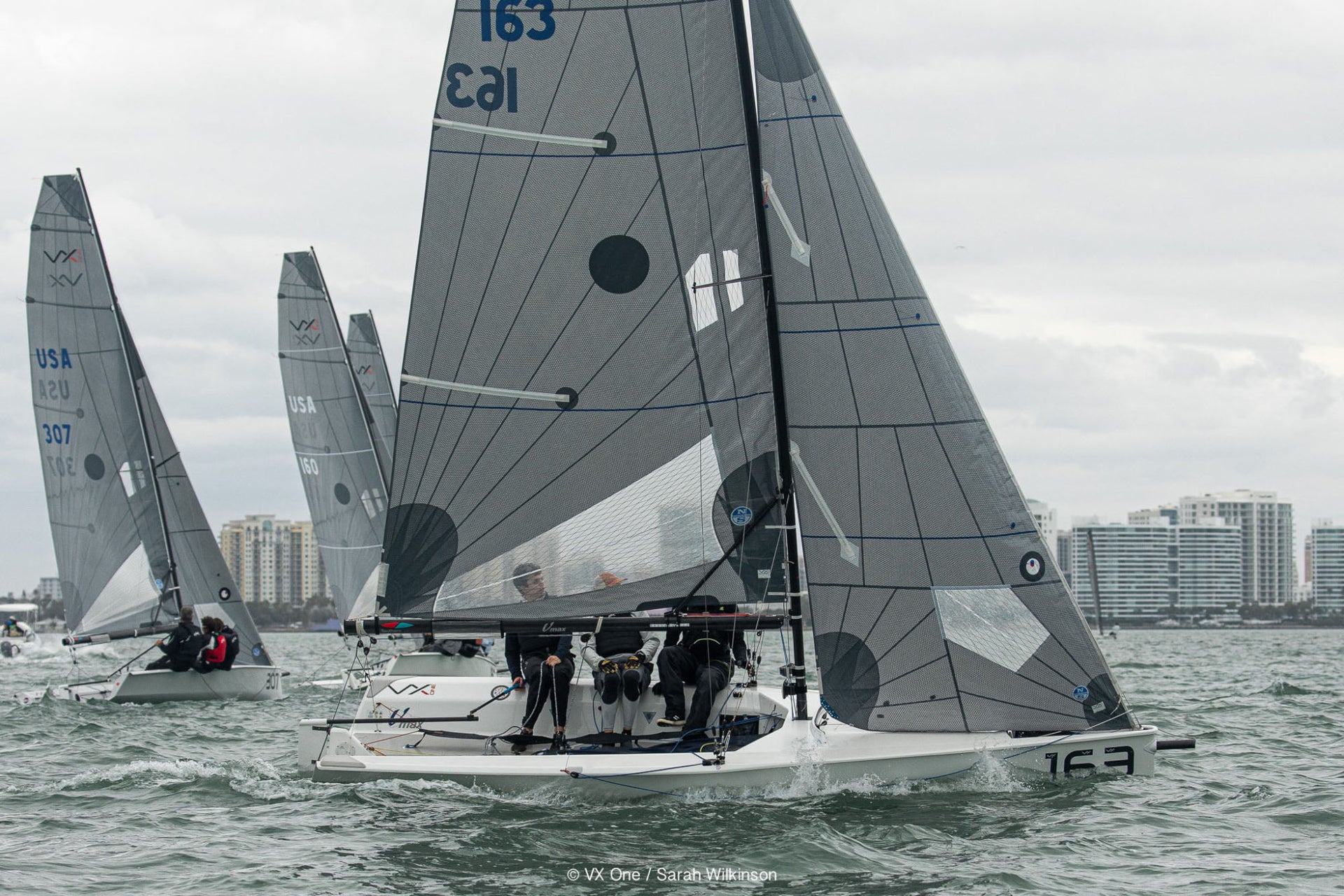
NORTH PODIUM SWEEP AT THE VX ONE WINTER SERIES
PODIUM SWEEP AT THE VX ONE WINTER SERIES
Congratulations Chris Alexander and Team Counterproductive
Twenty-two VX One teams gathered at the Sarasota Sailing Squadron for the first of three Winter Series regattas. The weekend started with practice races on Friday followed by a socially-distant onshore debrief with North experts Austin Powers and Mike Marshall.
The Saturday forecast called for winds in the mid to upper 20s, but when competitors left the dock the velocity was nowhere to be found. Then, just as promised 3 minutes before the first race the wind went from a mild 7 knots to a blustery 25 knots in the span of 3 minutes. Sporty conditions made for hard work upwind, but a sleigh ride down wind with a few teams seeing 20 knots of boat speed on their instruments. The key to this race was the ability to gybe and keep the mast point towards the sky. After 1 race, the wind built even stronger prompting the race committee to postpone ashore for more favorable conditions. Unfortunately, the wind never let up ending the day with only the single race completed.
Sunday blew from the 5-9 knot range with varying conditions as dark clouds passed over the course. All credit to the RC as they were able to run seven races in five hours utilizing the 3 markset bots and just one chase boat. With shifty conditions and medium length courses, every mark rounding came with emphasis on clean boat handling and the ability to separate from the peloton and find clean air.
When all was said and done, Chris Alexander’s “Counterproductive” came away with the victory with North’s own Madeline Gill aboard. Second place was occupied by Doug Clark and Mike Marshall, with third place being “Tudo Bem” being sailed by Michelle Warner, Reed Baldrige, and Austin Powers.
North Sails powered teams finished 1,2,3,5,6,8,9,10*. Full results
SHOP VX ONE SAILS
2021 Winter Series Event #1 winners. 📸 VX One Class/Sarah Wilkinson
READ MORE
READ MORE
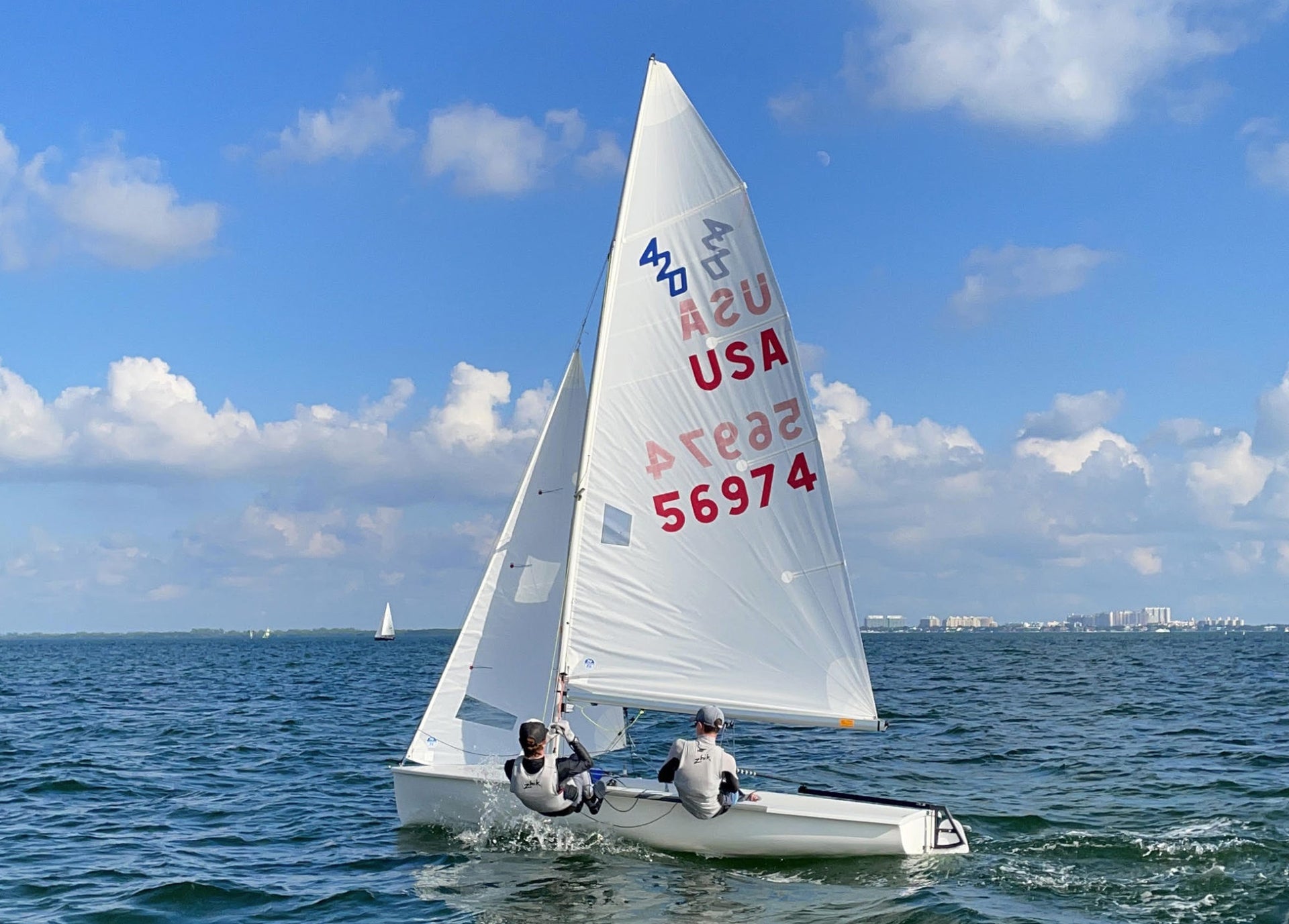
SITZMANN/WOODWORTH I420 NORTH AMERICANS CHAMPIONS
2021 i420 NORTH AMERICANS
Consistency Guaranteed Tommy Sitzmann/Luke Woodworth the Title
Biscayne Bay threw it all at the i420 teams competing for the 2021 North American Championship, with conditions that ranged from a very brisk 12-22 knot first day, to a drifter second day, followed by a marginal trapping final day filled with very fluky shifts and breeze direction changes.
After the dust settled in this eight-race regatta, teams powered by North Sails finished 1,2,5,6,8. North Sails i420 inventory includes three mainsails (M-7, M-9, and M-11), two jibs (J-12 & J-13), and two spinnakers (S1 and S5). These sails are proven winners, and our range offers teams the opportunity to choose the best fit for their particular sailing style. We are happy to help, so please don’t hesitate to reach out for more information.
Defending 2020 North American Champions, brothers Justin and Mitchell Callahan sailed a very consistent event with no result out of the top ten, and (except for a retirement in race 4 due to a rudder pin failure) pushed the eventual 2021 regatta champions Tommy Sitzmann/Luke Woodworth very hard all weekend. In the end, Sitzmann/Woodworth sailed an impressively consistent series themselves, with two bullets and no race finish out of the top 4.
Full results
Pre-launching fun
Tommy Sitzmann/Luke Woodworth, 2021 North American Champions
Justin & Mitchell Callahan, 2nd Place Overall
READ MORE
READ MORE
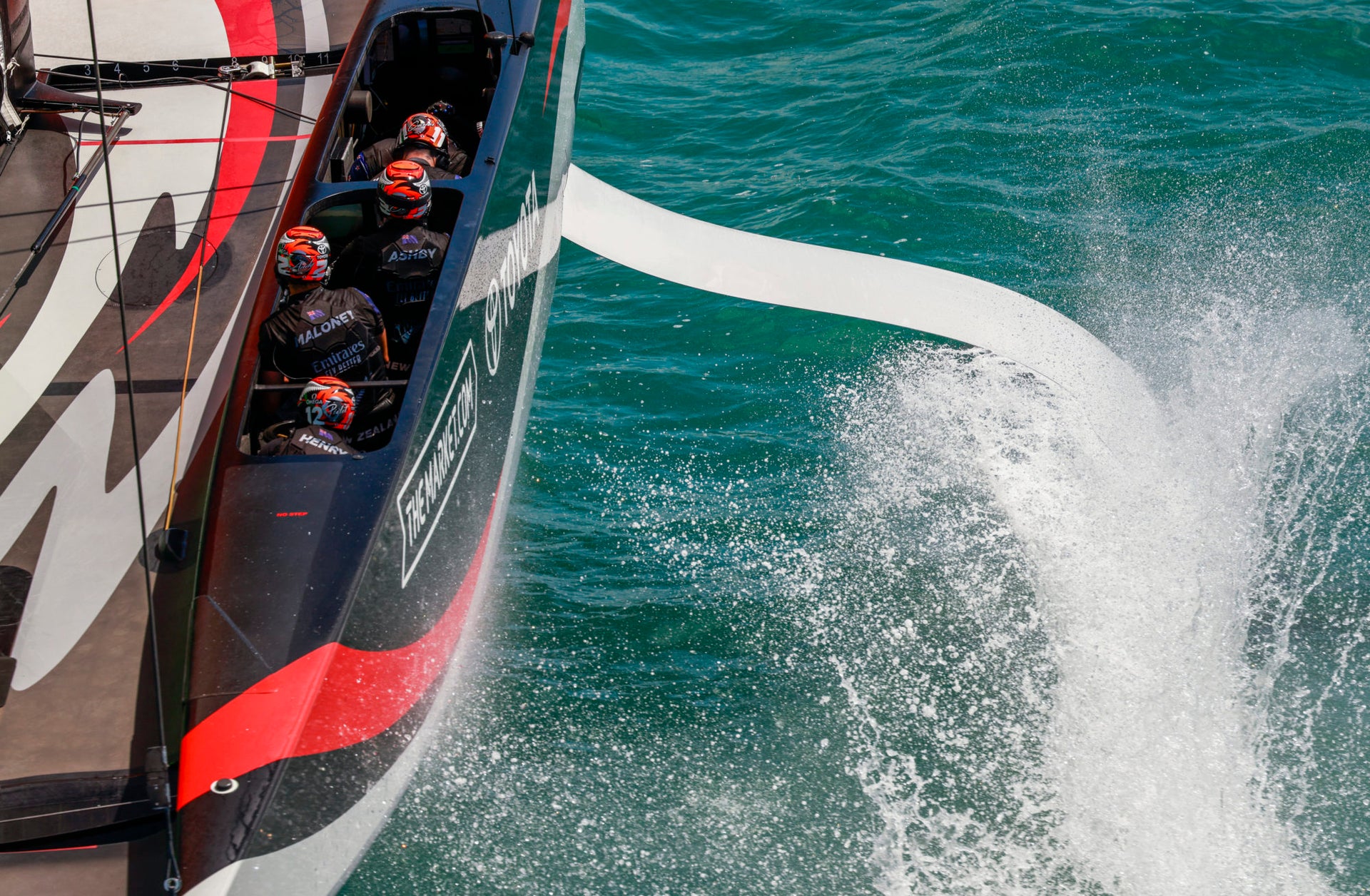
WHAT IS FOILING?
Welcome to “What is…” a series where we aim to answer complex questions around the 36th edition of the America’s Cup. In Episode 1 we answer the question on everyone’s mind—what is foiling and how does it work?
READ MORE
READ MORE

BOISW 2021 TOOL KIT
Everything You Need to Know For BOISW
BOISW is the biggest regatta of its kind in New Zealand, and with over 100 boats registered, this year looks to be no different. Get your team race-ready with our tips and tricks to guide you around the race course and prepare for the ultimate racing experience here at the Bay of Islands!
Daily Weather Updates
North Sails have teamed up with Roger Badham and Clouds to provide daily weather forecasts every morning before racing. Make sure to download the BOISW App for updates.
Get the BOISW App
Make Sure Your Boat Is Race Ready
With many variables in sailing outside of our control, it is important to make sure your yacht is cleaned, light, and ready to be used with ease once your sails and crew are added.
Learn More
The Importance Of Communication On The Downwind Leg
Steering off the wind, on reaches and runs, requires a coordinated effort between helmsman and spinnaker trimmer.
Learn More
Make Every Tack Count
The difference between a good tack and a poor one can be measured in boat lengths and when racing is tight, superior tacks will allow you to break free from, or keep control of, a rival.
Learn More
Certified Service Guaranteed
Bay of Islands Sailing Week is just around the corner, and your North Sails team of experts will be onsite and ready to help you with all of your sail care needs. North Sails is a long-time sponsor of BOISW, and we are back again this year to help make sure you are ready to race.
Learn More
READ MORE
READ MORE
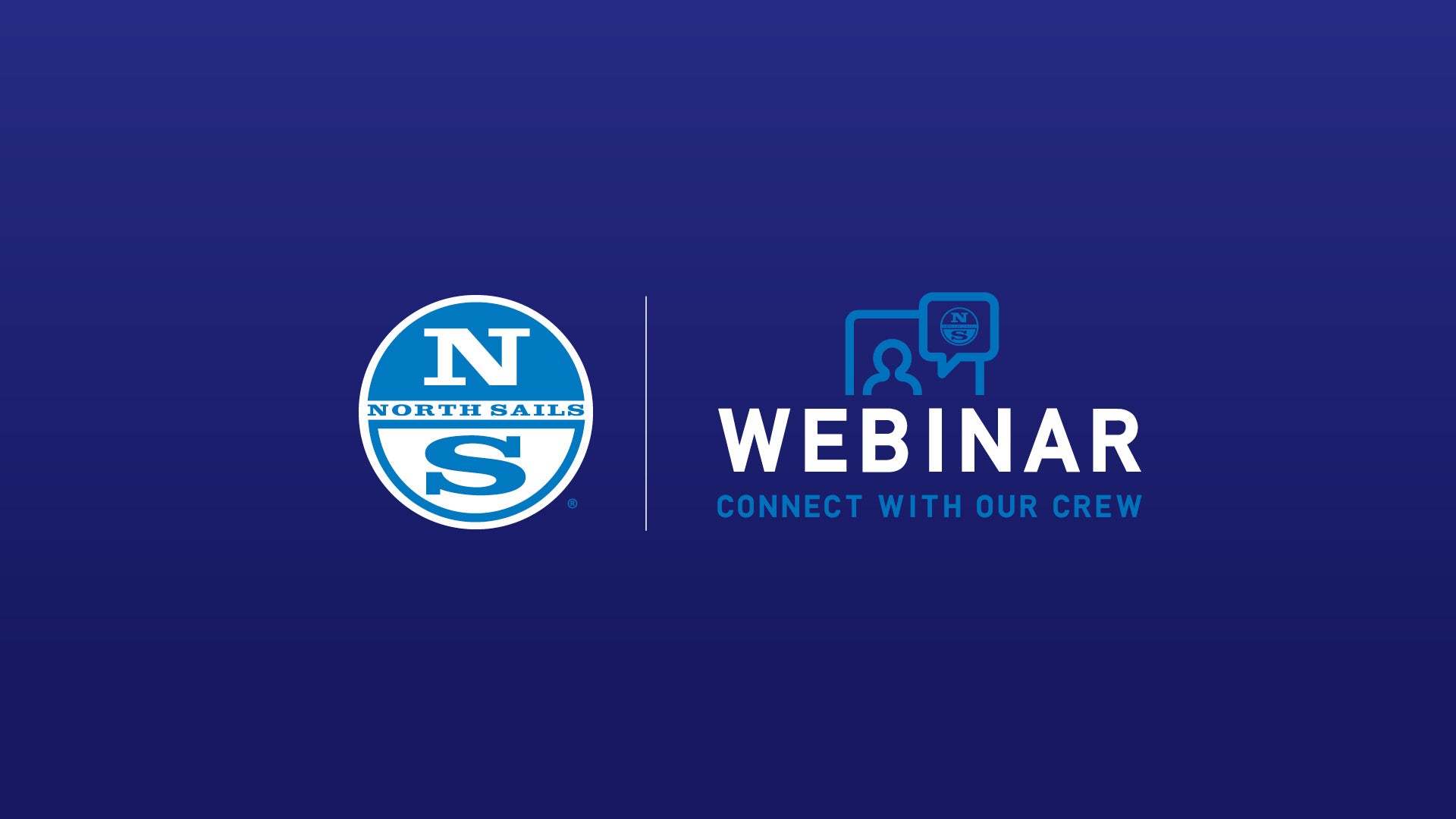
LET'S TALK T-10 (TARTAN) SAIL TECHNOLOGY
A recap of our informative webinar with T-10 class experts Nick Turney, Perry Lewis and sail designer Mike Marshall. Allan Terhune moderates as we discuss the updates to the new tuning guide, visual rig tuning, one jib vs. two jib combos, as well as sailcloth technology and differences between 2D string sails, paneled sails, and 3Di Composite Technology.
READ MORE
READ MORE
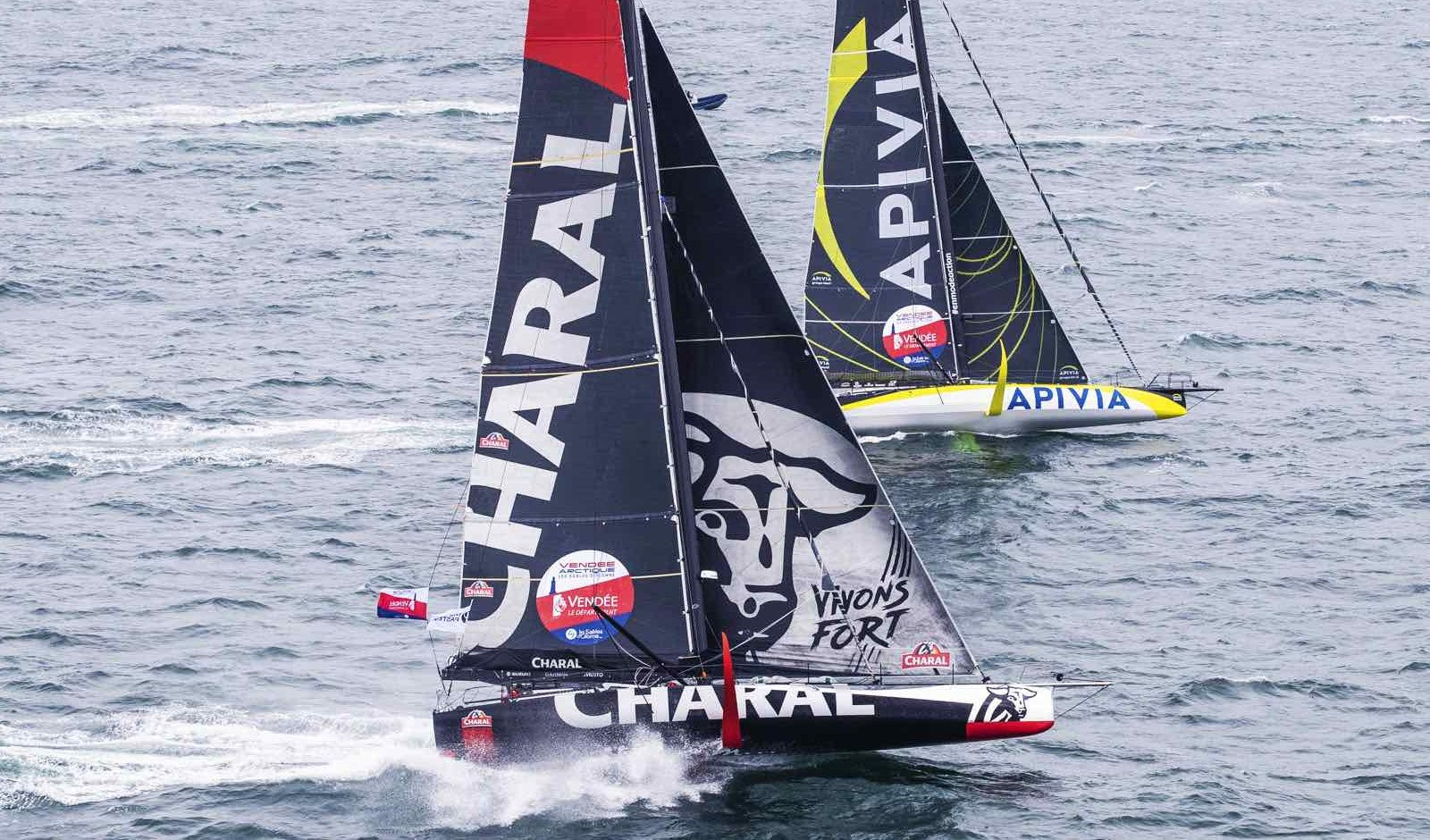
VENDÉE GLOBE VIDEO ARCHIVE
VENDÉE GLOBE VIDEO ARCHIVE
View our 7-Episode Video Series
The Vendée Globe was born in November 1989. It began as a daring challenge launched by a group of 13 sailors, including French navigator Loïck Peyron. For the skippers who participate, the lure of this race outweighs the risk of sailing non-stop, solo, and without assistance around the world. And for fans, we all gather every four years to be captivated by the next generation of IMOCAs, see who will reach the finish line and if we’re lucky, witness the setting of a new speed record.
📸 Andreas Lindlahr
Episode 1: Thus was Born the Vendée Globe
Peyron joins North Sails to lend his voice as our narrator in a six-part video series. He offers his perspective on this legendary race by telling the story of the exceptional skippers who dare take on the challenge, the passion that drives them, and the quest for open-ocean adventure. Beyond, the modern Vendée features the emergence of women and international sailors, the ever-evolving technology of the IMOCA, not to mention the growing enthusiasm amongst spectators and all those who are passionate about this unrivaled competition.
With his impressive list of accomplishments, and collection of offshore miles, Loïck Peyron is regarded as one of the greatest French sailors. He took part in the first edition of the Vendée Globe, where he finished second. In this first episode, he recounts the history of the Vendée Globe through his eyes, from its origins to the present day, a race that has left an indelible mark in people’s minds.
Episode 2: Technology and the Modern IMOCA
The Vendée Globe is a race exclusively reserved for the IMOCA, a 60-foot monohull machine built for racing. The open rule gives the naval architects great freedom of design when imagining the next generation of boats. A class known for technological experimentation, the IMOCA has seen radical innovations such as foils appear in recent years. These appendages, placed on either side of the hull, provide power, reduce drag, and propel the IMOCA to fly above the surface at speeds that were once inconceivable. In two decades, the modern IMOCA has shaved close to 40 days off a circumnavigation. The 2020 race start is on the horizon, and many of us onshore wonder- how fast will these boats fly?
In Episode 2 of our Vendée Globe 2020 video series, French sailor and storyteller Loïck Peyron explores the phenomenal high-tech advances of the IMOCA. Loïck brings us beyond visual appearances and dives deep into the construction and materials, most notably carbon, used in the boats. Today, the IMOCA is lighter, faster, and more reliable. The manufacturing methods of these boats are closer to those of airplanes than to sailboats. “We use the same terms, the same mathematical formulas and the same prediction and simulation tools as those used in aircraft,” stresses Loïck Peyron. Generally speaking, “the speeds of the boats have been multiplied by four in forty years.”
Episode 3: The Spirit of Adventure
In search of a challenge, a record, or an adrenaline rush, the sailors participating in the Vendée Globe are constantly testing their boundaries and pushing their equipment in an attempt to rack up a few miles, hours, days. From them, the open ocean beckons with the taste of adventure and a fascination for the unknown.
“What’s interesting is what you don’t know,” says 61-year old Jean Le Cam, who is taking part in the Vendée Globe for the fifth time. “You are constantly questioning yourself to avoid getting bored.”
More than a race, the Vendée Globe is the ultimate adventure. The skippers hunger to get out of their comfort zone and exceed their limits, and it is their story that fascinates the spectators. This race is one of the rare sporting events where completing the single-handed non-stop round the world race is seen as a remarkable accomplishment in and of itself.
Join our Vendée Globe 2020 narrator Loïck Peyron as he uncovers why the race, even for veterans like Le Cam, is a once in a lifetime adventure.
Episode 4: The Solo Experience
Singlehanded ocean racing is demanding and not for the faint of heart. It is a profession that requires a certain state of mind and a great ability to adapt. “It may not sound like much but being alone changes your state of mind,” says Clarisse Crémer, who is taking part in her first Vendée Globe. In addition to taking on all the roles on board and managing your mind, stress, sleep and the unexpected, you also have to accept that you are not always at 100%,” admits Kevin Escoffier, who is embarking on his first solo circumnavigation after many years as an ocean racing crew member. “If the wind is different from what is expected, you have to deal with it and choose sleep over perfection for a few hours.”
Today, ocean racing has become much more competitive than it was in the early days of the regattas. Modern boats are equipped with an impressive technological arsenal that almost forces skippers to hide inside their boat and think about their strategy all the time.
In this fourth episode, Loïck Peyron looks back at the history of sailors venturing onto the sea. This week’s special guests include Escoffier, Jean Le Cam, and Vendée Globe rookie Clarisse Crémer, who will soon be departing for the solo, non-stop, and without assistance competitive journey around the world.
Episode 5: The Women of the Vendée Globe
A record of six women are included on the 33 skipper roster for the Vendée Globe 2020. This is historic, considering only seven women have participated, and six have ever completed the race since its inception in 1989. This trend is a reflection of what we’re seeing elsewhere in sailing, as more women take on leadership positions and compete at the highest level of the sport.
The IMOCA is a big boat with big gear, and female sailors bring a unique approach to solo sailing. Our fifth episode of the Vendée Globe video series features their story. Loïck Peyron is joined by Clarisse Crémer and Isabelle Joschke to discuss how these six women will approach this great adventure around the world.
Episode 6: The IMOCA Engine Above Deck
Among the 33 skippers who will be advancing tomorrow, Sunday, November 8th, from Sables-d’Olonne at 13:02 CET, 22 are equipped with North Sails 3Di, (17 have a full inventory and 5 have a partial inventory). Onboard their IMOCA, the skippers will cover 40,075 km, which will take up to three months to reach the finish line.
Episode 6 of our Vendée Globe video series drops just in time for the start of this around-the-world adventure. In this episode, we have a masterclass on the sails that power the super-charged IMOCAs. Charal skipper Jérémie Beyou, and PRB skipper Kevin Escoffier join North sail designers Quentin Ponroy and Yann Andrillon on the evolution of sails and what it takes to outfit the latest generation foiler.
Episode 7: As the Fleet Set Off
“We know when we are departing, but we do not know when we will return,” recalls Loïck Peyron in this seventh and last episode of our Vendée Globe video series. Although an absent crowd marked the 9th edition’s departure, emotions ran high on Sunday, November 8th.
Each skipper acknowledges the incredible magnitude of this race: their story, their challenge, their competition, but also the team, sponsor, and the public with whom they will share their adventure that is full of moments of joy or sadness. Because completing the Vendée Globe remains an incredible achievement, the arrival home to the Sables d’Olonne after three months at sea is a moment as emotional as the start.
READ MORE
READ MORE
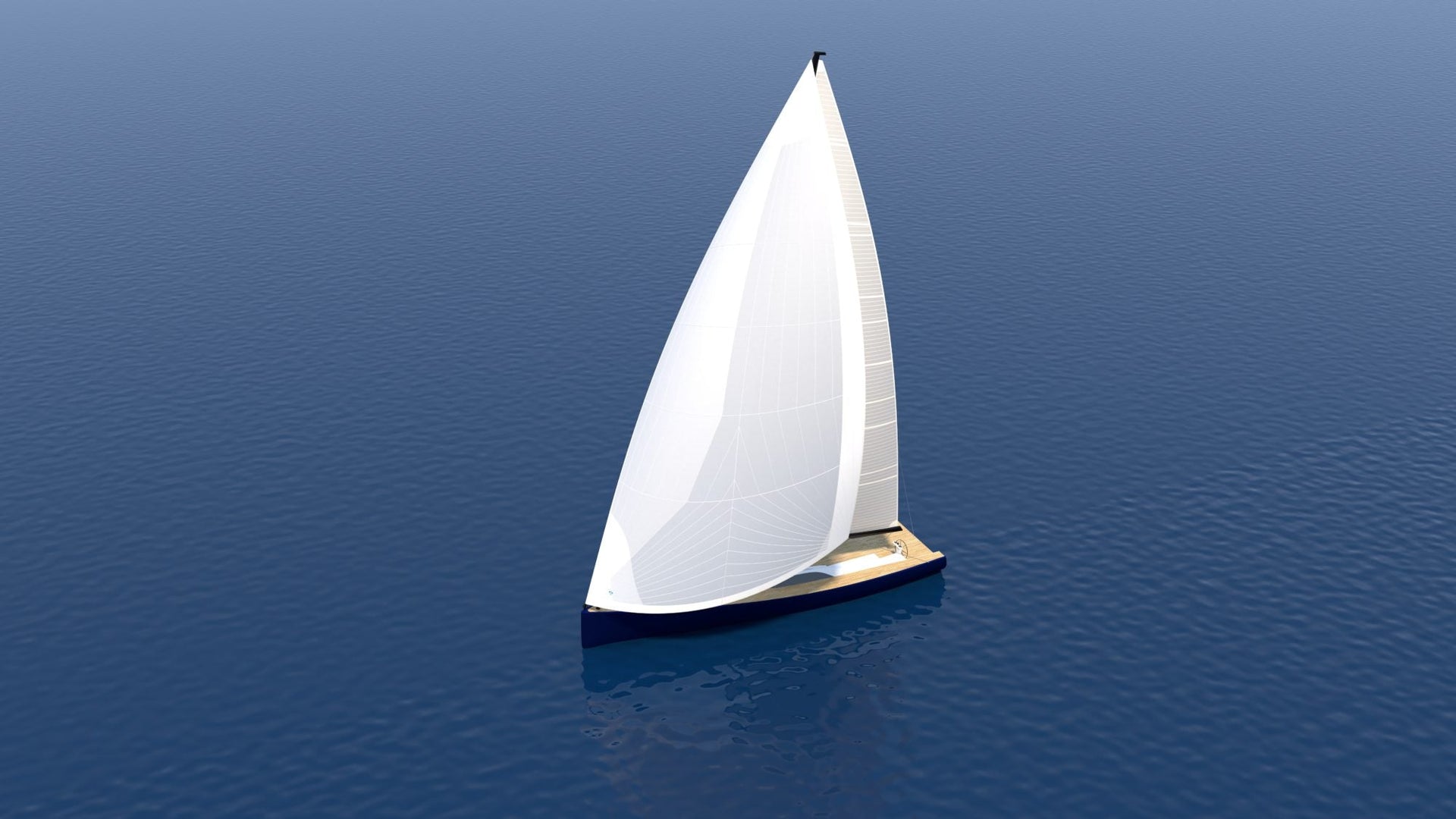
NORTH SAILS LANSERAR HELIX-RULLSEGEL ÄVEN FÖR CRUISING
NORTH SAILS LANSERAR HELIX-RULLSEGEL ÄVEN FÖR CRUISING
Nu finns det ett enklare sätt att öka prestandan
North Sails är glada över att kunna erbjuda världens cruisingseglare en ny typ av segel. Helix Rullgennacker har ett kraftupptagande förlik som gör att man slipper den tunga förlikskabel som tidigare har behövts på rullbara segel. Resultatet är världens mest pålitliga och lättanvända top-down-rullsegel för cruising.
Det speciellt utformade förliket i Helix Rullgennacker förbättrar seglets aerodynamiska egenskaper och ger helt nya möjligheter att skapa en modern segelgarderob. Våra cruising-rullsegel är lättare, enklare att hantera och mer tillförlitliga än traditionella rullsegel utrustade med tunga anti-torsionskablar. Dessutom kan de användas i ett bredare spektrum av vindvinklar, och sammantaget innebär detta att du kan minimera antalet segel ombord.
"Vad de behöver är ett enkelt och lätt segel som gör det möjligt att segla öppna undanvindar. Genom att applicera Helix-teknologin på ett segel liknande en G1-allround-gennacker har vi lyckats skapa ett undanvindssegel som är lätt att trimma, lätt att rulla in och ut och lätt att stuva undan.”
Konceptet bakom Helix Rullgennacker utvecklades på ett designmöte under 2019, berättar JB Braun, North Sails chef för design och utveckling. ”Helix var synonymt med snabba och tillförlitliga rullsegel för kappsegling i ofta ganska aggressiva vindvinklar. Men de flesta cruisingseglare seglar på ett helt annat sätt. Vad de behöver är ett enkelt och lätt segel som gör det möjligt att segla öppna undanvindar. Genom att applicera Helix-teknologin på ett segel liknande en G1-allround-gennacker har vi lyckats skapa ett undanvindssegel som är lätt att trimma, lätt att rulla in och ut och lätt att stuva undan.”
Helix Rullgennacker tillverkas i en rad olika material – från vävd polyester till 3Di – vilket gör det möjligt att ta fram skräddarsydda lösningar för såväl små familjebåtar som superyachts och allt däremellan. Seglet kan om så önskas förses med ett lätt men effektivt UV-skydd.
2016 bestämde sig North Sails för att satsa stora resurser på utveckling av cruisingsegel, och resultatet har inte låtit vänta på sig. Sedan 2017 har vi lanserat tre banbrytande cruisingrelaterade produkter: 3Di NORDAC, 3Di OCEAN 370 och en grundlig uppdatering av hela 3Di OCEAN-sortimentet. Helix Rullgennacker är det senaste exemplet på hur utvecklingen av segel för kappsegling på högsta nivå även kommer till nytta för den stora massan vanliga nöjesseglare.
Helix Rullgennacker går nu att beställa för leverans till våren 2021. Kontakta ditt närmaste North-loft för mer information!
PRODUCT DETAILS REQUEST A QUOTE FIND AN EXPERT
READ MORE
READ MORE
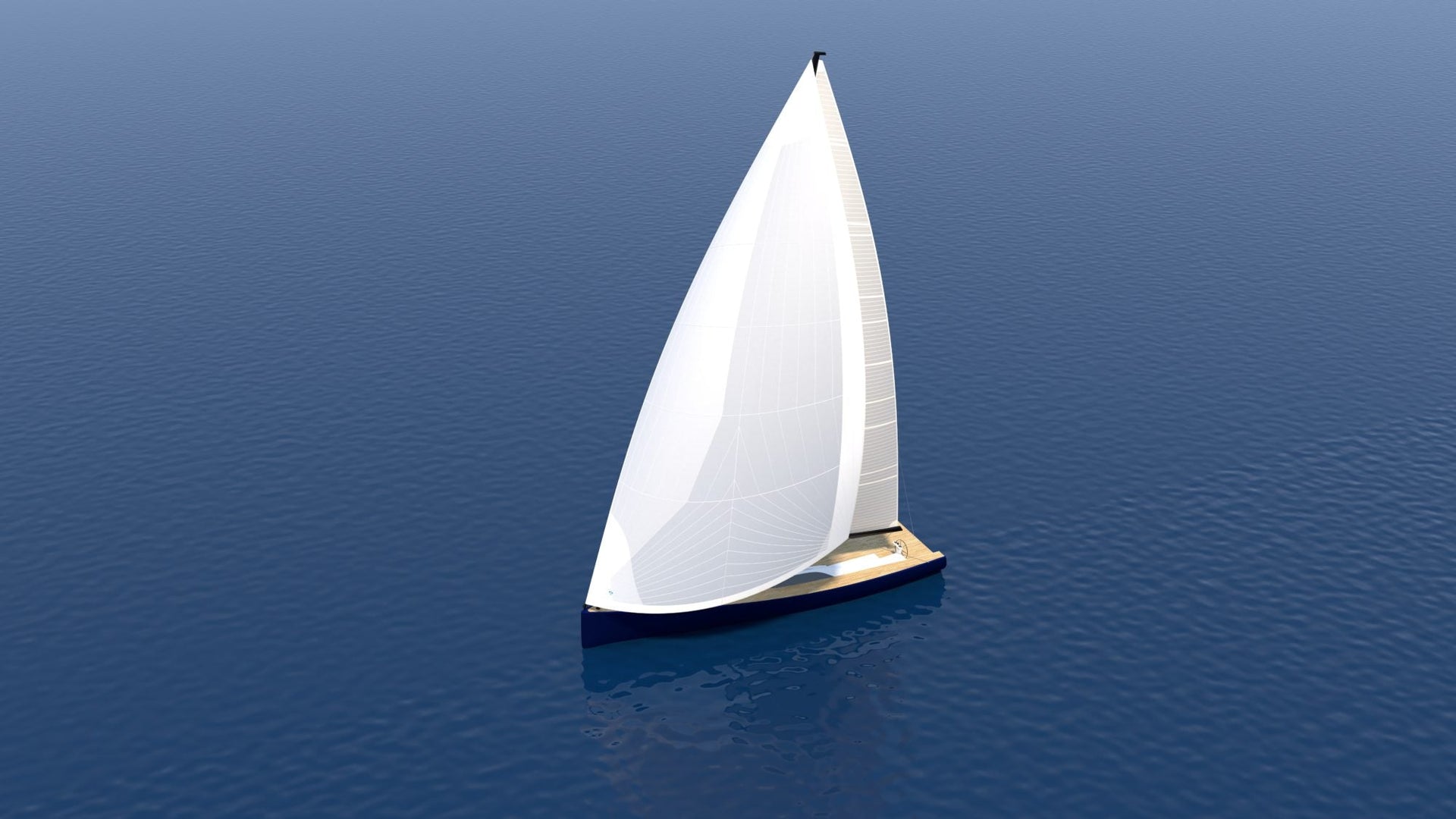
NORTH SAILS TILFØJER HELIX TEKNOLOGI TIL CRUISINGSEJL
NORTH SAILS TILFØJER HELIX TEKNOLOGI TIL CRUISINGSEJL
Vi introducerer brugervenlighed og høj ydeevne
North Sails introducerer Helix teknologi til tursejlere. Med Helix Rulle Gennaker får man som standard et ultralet high-end Future Fibre kabel, som er det sikreste, mest brugervenlige og mest pålidelige "top-down" rulle-sejl til cruising på markedet.
Helix teknologien med "Structured Luff" ændrer hvordan sejlet flyver og er fremtiden i den moderne sejlgarderobe. Vores Helix tursejl med struktureret forlig giver en mere sikker og pålidelig rulning end et sejl med traditionelle anti-torsions kabler, da det er let og med ”top-down” systemet sikrer en altid ukompliceret rulning af sejlet, uanset vindstyrke og vindvinkel. Det reducerer antallet af sejl du har brug for ombord, hvilket gør Helix sejl til den perfekte tilføjelse til din cruising sejlgarderobe.
"Ved at indarbejde et Helix Structured Luff-system i et G1-stil sejl, har vi skabt et sejl der er let håndterligt, let at rulle og let at stuve af vejen, som er konstrueret til cruisingsejlads med vinden."”
Helix Rulle Gennaker konceptet blev udviklet på et designmøde tilbage i 2019, forklarer JB Braun, chef for 'Design and Engineering'. "Vi diskuterede hvordan Helix-sejl leverer high-performance og enkel furling til kapsejlerne. Men en tursejler sejler typisk ikke de samme høje vindvinkler, så de har oftest brug for et sejl til dybe vinkler og helst uden kompleksiteten på grund af tunge sejl. Ved at indarbejde et Helix Structured Luff-system i et G1-stil sejl, har vi skabt et sejl der er let håndterligt, let at rulle og let at stuve af vejen, som er konstrueret til cruisingsejlads med vinden."
Med en række dugtyper at vælge imellem, kan Helix Rulle Gennaker nu tilpasses bådens størrelse og anvendelse: fra familiecruiseren til superyachten. Helix Structured Luff var i begyndelsen udelukkende en 3Di teknologi, men er nu tilgængelig i en række materialer, fra vævet polyester til 3Di. Som et tilvalg kan et letvægts UV-cover på fod og agterlig tilføjes på Helix Rulle Gennaker.
Siden 2016 har North Sails målrettet fokuseret på produktudvikling til Cruising og tursejlads og resultaterne har været virkelig gode. North Sails har siden da lanceret tre cruising specifikke produkter såsom 3Di NORDAC, 3Di OCEAN 370 og siden foråret 2020 en fuld opdatering af hele 3Di OCEAN-produktlinjen. Helix Rulle Gennaker er det seneste eksempel på ”Helix Structured Luff” designfilosofi, hvor man tager det bedste fra kapsejlads og sejlhåndtering for at få en pålidelig, brugervenlig og performende Gennaker til tursejlads, der tager performance fra Grand Prix og kombinerer med let håndtering, der i sidste ende resulterer i det perfekte cruisingsejl.
Helix Rulle Gennaker kan bestilles nu med en levering til sæsonstart. Kontakt North Sails i dag og få en snak om Helix Rulle Gennaker til din båd.
PRODUKTDETALJER FÅ ET TILBUD FIND EN EKSPERT
READ MORE
READ MORE
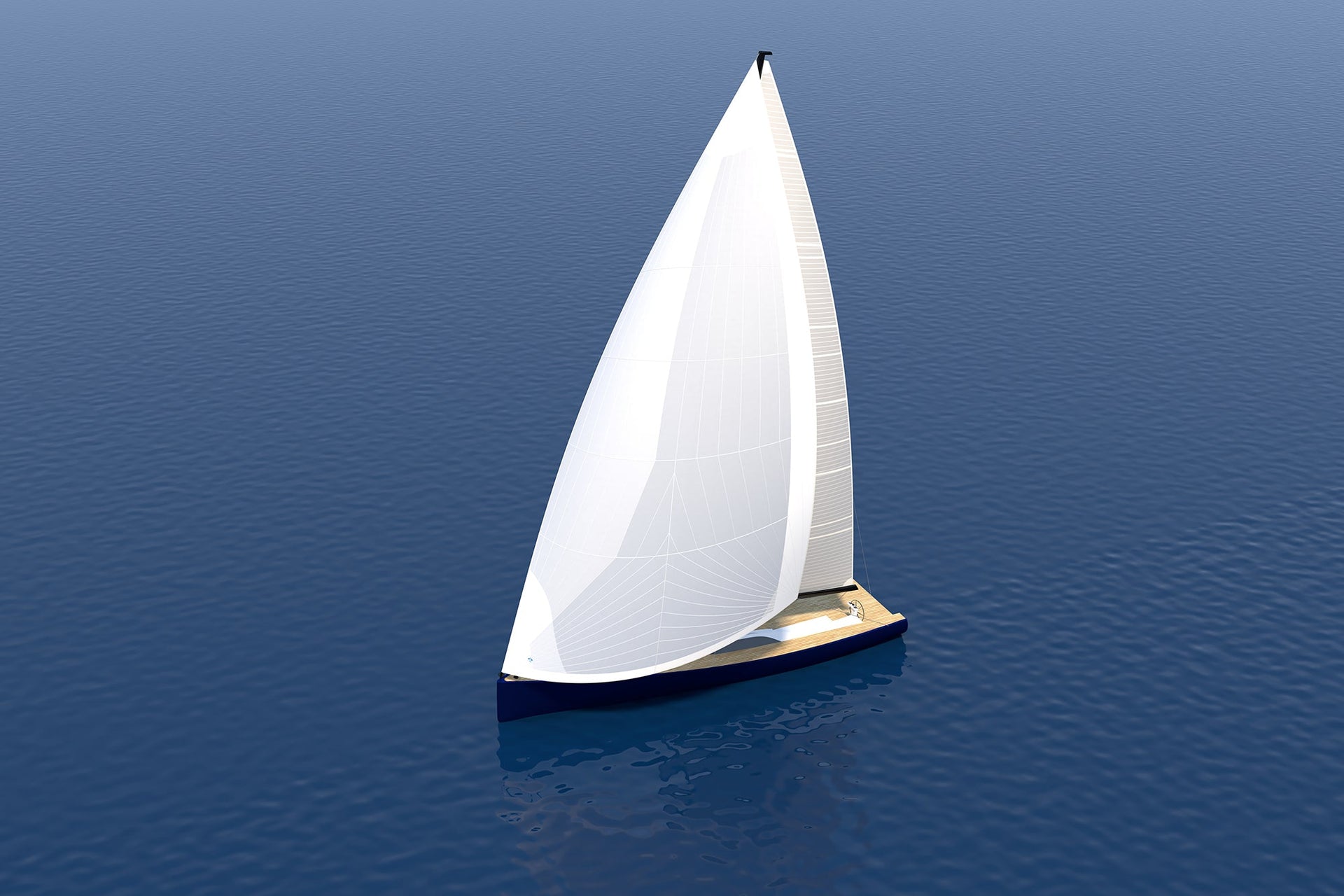
NORTH SAILS MAAKT HELIX TECHNOLOGIE MOGELIJK VOOR TOER GENNAKERS
NORTH SAILS MAAKT HELIX TECHNOLOGIE MOGELIJK VOOR TOER GENNAKERS
Hanteerbare en veelzijdige performance
North Sails presenteert de Helix Furling Gennaker, een nieuw zeiltype voor toerzeilers. De Helix voorlijkstructuur maakt een zware anti-torsie kabel langs het voorlijk overbodig en is het meest betrouwbare en makkelijkst te gebruiken top-down oprolbare toerzeil ter wereld.
De Helix voorlijkstructuur verandert de manier waarop een zeil projecteert en essentieel voor een moderne zeilgarderobe. Onze toerzeilen met geintegreerde voorlijkstructuur rollen beter op dan traditionele oprolbare gennakers met een zware anti-torsie kabel. Deze nieuwe zeilen zijn lichter, makkelijker te hanteren en hebben een groter wind(hoek) bereik. Hierdoor heeft u minder zeilen nodig, waardoor dit de perfecte toevoeging is aan uw zeilgarderobe.
"Door de Helix structuur toe te passen voor deze zeilen ontstond een oprolbare all purpose gennaker die goed projecteert, betrouwbaar oprolt en makkelijk is om op te bergen.”
Het concept voor de Helix Furling Gennaker kwam tot stand tijdens de Designers meeting in 2019, legt JB Braun, North Sails Director Design & Engineering uit. "Helix zeilen rolden snel en betrouwbaar op voor wedstrijdzeilers, maar toerzeilers varen meestal niet op deze aggressieve, hoge hoeken. Zij hebben een voor de winds zeil nodig voor diepere hoeken, zonder de complexiteit van zware, onhandelbare zeilen. Door de Helix structuur toe te passen voor deze zeilen onstond een G1-type zeil dat goed projecteert, betrouwbaar oprolt en makkelijk is om op te bergen.”
De Helix Furling Gennaker is leverbaar in verschillende materialen, afhankelijk van grootte en toepassing. Hierdoor is het zeil geschikt voor alle toerzeilers, van weekend toerzeiler tot superjachten. Vroeger was de Helix structuur enkel beschikbaar in 3Di, maar nu is de Helix voorlijkstructuur beschikbaar in materialen van geweven polyester tot aan 3Di. Optioneel kan er lichtgewicht UV strook toegevoegd worden aan de Helix Furling Gennaker.
Sinds 2016 is North Sails begonnen om zeilconstructies te ontwikkelen speciaal voor toerzeilers en niet zonder resultaat. 's Werelds beste zeilmaker heeft sindsdien 3 specifieke 3Di constructies voor toerzeilers ontwikkeld, 3Di NORDAC, 3DI OCEAN 370 en 3Di OCEAN 700. Sinds het voorjaar van 2020 is dit allemaal samengevoegd in een eigen 3Di OCEAN productgroep.
De Helix Furling Gennaker is de laatste toevoeging en een fantastich voorbeeld van ons streven om altijd de best mogelijke technologie te leveren voor iedere zeiler. De Helix voorlijkstructuur is een ontwerpfilosofie waarmee het beste van Grand-prix wedstrijdzeilen doorontwikkeld is voor een lichtere, betrouwbaardere en gebruiksvriendelijkere gennaker speciaal voor toerzeilers.
Uw Helix Furling Gennaker kan nog dit voorjaar geleverd worden. Neem contact op met uw North Sails Expert voor meer informatie.
PRODUCTEIGENSCHAPPEN VRAAG EEN OFFERTE AAN VIND UW EXPERT
READ MORE
READ MORE
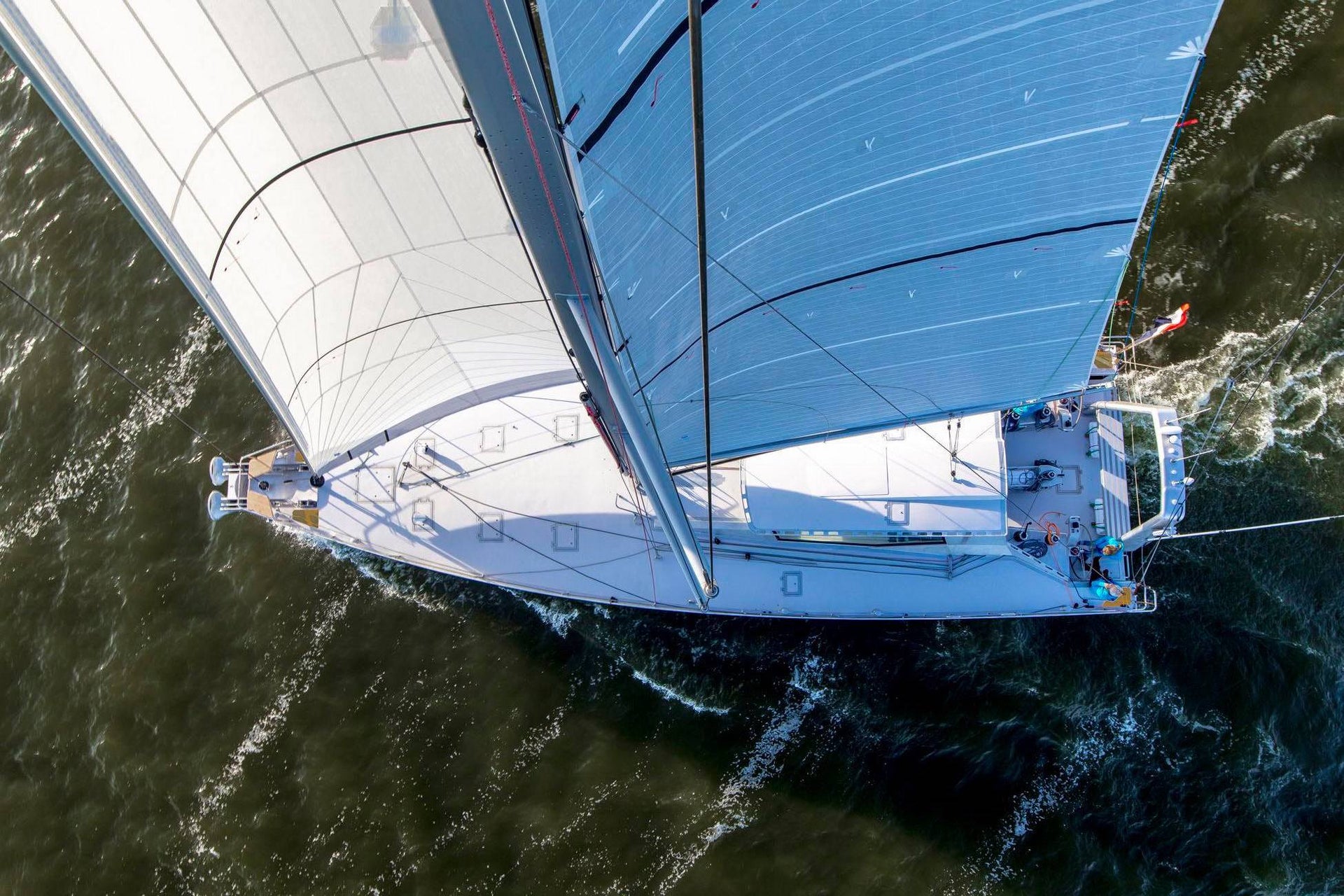
EXPLORING THE ARCTIC ONBOARD QILAK
ADVENTURE AWAITS ON QILAK
Arctic Expeditions with North Sails
📸 Florian Ledoux
Qilak owners, father and daughter Philippe and Marion Carlier, know they need dependable equipment to survive the Arctic ice onboard their purpose-built Owen Clarke 66. When we spoke to them, they were 69 degrees 29 minutes North, in Norway’s Lyngen Alps, well above the Arctic Circle. For Qilak, a combination of the right equipment and years of expertise make it possible to safely bring guests to explore high latitudes, sharing their passion for sailing and the sea.
The Right Connections
Why did the Carlier’s choose North Sails for arctic exploration?
“I had North Sails on my three-quarter tonner, and she was fast– World Champion fast– so I’ve had confidence with the product from the very beginning,” says Philippe. But it was the relationship they built with North sailing expert Frank Gerber that cemented their decision for this project. “We all had the same understanding of what we were looking to do with the project,” says Philippe. “Frank was the key piece that tied all the parts together.”
Marion says they first met Frank at The King and Queen Pub in Hamble, UK. “Frank’s mother owns it, and it quickly became our central meeting place, along with every other sailor in the area in England.” That’s also where they met Naval Architect Merfyn Owen. It was a combination of all the right people at the right time–and the right place.
Philippe Marion . 📸 Florian Ledoux
The Right Boat + Sails
Qilak was purpose-built, and her solid aluminum hull can break through the ice. She has a retractable keel to go where larger ships cannot, an open cockpit—with heated seats and a warm cabin to take cover when underweigh. “Even the view from down below is stunning,” Marion explains. “The combination of boat design, rig, and sail plan was exactly what we needed and is why we can explore the arctic waters safely, comfortably, and with ease.”
Philippe and Marion knew they needed a long-lasting sail product that was efficient through the wind ranges. It wasn’t just about getting new sails, though; it was about all the necessary systems easily working together. “The relationship we built with Frank has made this project successful,” Marion says. “He worked closely with my father–carefully listening to make sure he knew everything we were trying to accomplish with Qilak. He then bridged contact between my father and Naval Architect Merfyn Owen. North Sails made our project run smoothly, with the best sail options. They are true sail experts.”
Qilak has many options when it comes to inventory. : NPL TOUR Furling Solent headsail : G2 Gennaker with Snuffer : 3Di OCEAN furling headsail.
Qilak’s inventory consists of a full-batten 3Di OCEAN mainsail, NPL TOUR furling solent, 3Di OCEAN furling inner jib, NPL TOUR furling reacher, a storm jib, a storm trysail, and a G2 Gennaker with a Snuffer. They’ve got every wind range covered with their new setup.
“As a retired pilot, I like when I can see my sails acting like wings,” Philippe explains. “Our 3Di mainsail is so stable. It generates a great deal of power, and you can feel it.” Qilak’s furling headsails make it possible to adjust the amount of power as needed, without clients even noticing. “We can achieve zero percent or 100 percent, or anything in between,” he continues. “It’s all done so easily. The convenience of furling headsails allows us to do so much more.”
North expert Frank Gerber based in Gosport, UK commented, “I’m glad we were able to help them achieve their sailing goal and provide them with peace of mind along the way in their adventures.”
Though they use their engine to reposition or avoid ice, the feeling onboard under sail is a special one, says Marion. “This is a great opportunity to teach our guests and enjoy each moment.”
In the Arctic, the wind funnels through the mountains and down fjords and delivers varying conditions. “You can go from very light air to 40 knots just like that,” Marion says. “This is why we are always conservative when it comes to how many sails we have up at the same time. It’s for everyone’s safety.”
Catch the last light before dark, or the first sun as it comes up over the mountains. If you are lucky, you can even see the Aurora borealis from on deck. From what we’ve heard, it’s spectacular.
The Carlier’s have covered roughly 15,000 nm on Qilak, more than half the time under sail power alone. “We sail about 65% of the time, “We choose to motor sail when the high pressure is on us,” Marion explains. “We use our mainsail and our solent most because they are easy with guests and provide us stability.”
Their longest passage so far is 600 miles, which took three days. Their best 24 hour run so far was 220 miles. “Very impressive for us non-racing sailors,” Marion laughs. “We saw 12.5 mph, with the wind at 15 knots. We stayed tucked into our pilot house with our heated seats. It was just a beautiful ride.”
It’s All About the Adventure
“We insert ourselves into nature and share the beauty of sailing and the environment with our guests,” says Philippe.
Maneuvering under sail allows Qilak to get close to arctic wildlife. “We see so many amazing things,” says Marion. “Last year, we witnessed billions of herring moving back into the fjords, and behind them followed Orcas and humpback whales. Everywhere we went, whales surrounded us. We move slowly, with just our solent, and the whales and dolphins are curious. It is so quiet, we don’t have our motor on, and they come in very close to see what we are up to.”
“The walrus are fascinating”, says Philippe. “They look sleepy most of the time, then all of a sudden they move and they are faster than you think. They are true torpedos in the water– magnificent animals.”
Choose your adventure! Anything from sailing, trekking, climbing, kayaking, or relax down below in the onboard sauna… (yes, we said sauna!)
There are also millions of Arctic tern, puffins, reindeer, and fox. “The reindeer are a bit more curious, said Philippe. “They often get within 10m if you are standing still. If they take off, it’s generally because a polar bear is near.”
Greenland sharks are another common species they’ve seen while adventuring. “Have you ever seen one? This given species of shark could be over 400 years old– it’s just unbelievable, says Philippe. “I would not hesitate to swim with whales and orcas, but that shark, no way.”
“One time, we had a polar bear reeling us in,” said Philippe. ” It was less than 50 meters behind us. They are beautiful animals, but we keep our distance. When you hear someone yell ‘polar bear, polar bear!’ it is no joke up here.”
Charters on Qilak are scheduled around the best weather window. “Most of our guests like having a destination, but every now and then we get a group that is just there to go explore at our own pace,” says Philippe. “This allows for a sense of freedom. It’s a different experience to have no real limits. There is no race, nowhere you have to be, no other sailboats around, just you, the ice, and nature.”
Qilak is built to make safe ice passages in the arctic territories.
Why Qilak?
The Qilak logo stands for the sky’s dome, the protective layer with all the living things under it. “We wanted to pick something that would be fitting with our project. A celestial sky and, by extension, like heaven all encompassed inside Mother Earth. We wanted to choose a name that was relatable to this arctic area of the world.”
They wanted to name their boat something different, something unique. “We were speaking to an Inuit, and he asked us why we named our boat Qilak because his name was Qilak! It was funny. I guess we were not the only ones who thought it was a good name,” said Philippe.
With a new year ahead, the Carlier’s stay positive and are ready to get creative to continue to follow their plans for adventure. “There is uncertainty still with the pandemic, but we’re not giving up. No matter what, we will still take on the adventure, and with a little creativity, it will still be successful,” says Philippe.
Want to learn more about Qilak and how you can jump onboard? With tons of trip options, you can see parts of the world you would never have imagined. Visit Qilak’s website to learn more. Get the full tour and see her under sail here:
🎥 Courtesy of Expedition Sailing Virtual Boat Show, produced by Arctic Yachts. Thank you to 📸 Florian Ledoux for professional imagery.
All other images + video links provided by guests onboard Qilak. Thank you Manta Vizbaras, Julie la Québecquoise, and Secret Atlas. To see what Qilak is up to, follow Qilak on Facebook and on Instagram.
READ MORE
READ MORE
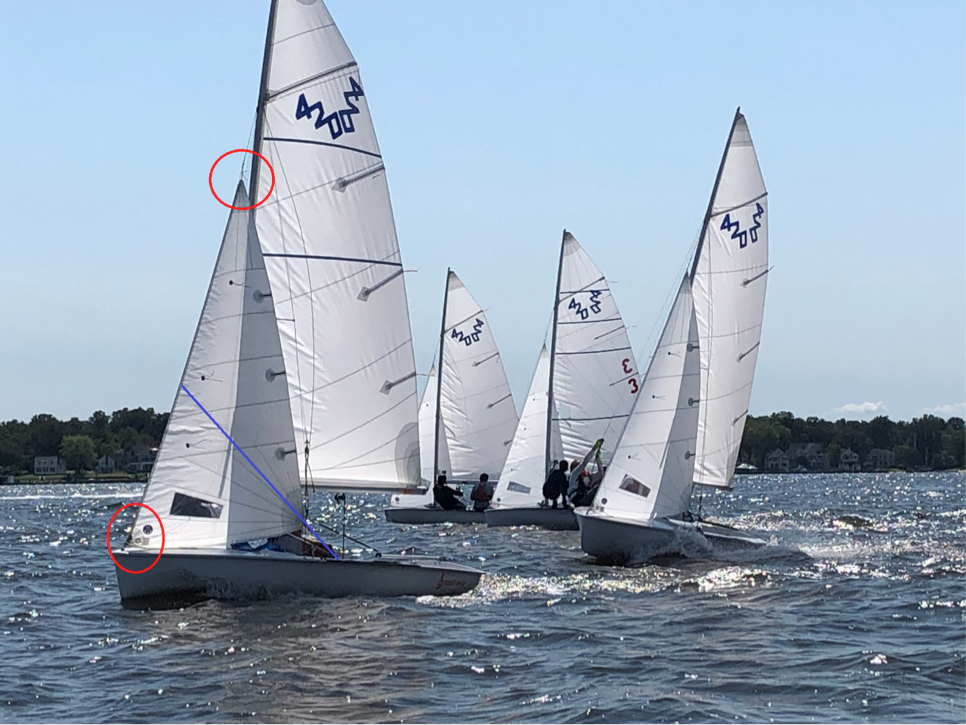
I420: CONTROLLING THE JIB LEECH TENSION
CONTROLLING JIB LEECH TENSION
How to Effectively Finetune Your Fairleads with Fixed Positions
Sailing dinghies are all unique. It is always fun to go from one one-design class to another and check out what makes them different, what controls they have, and in this case, what they might not have available for the crew to use to adjust and tune.
One very important tuning device for jib trim is the fairlead position. Fairlead position defines sheeting angle for the jib, and many classes of course have adjustable fairleads; that is, the position can be moved fore and aft (or in some cases up and down, and in and out). When it gets windy, it’s often nice to be able to open the leech of the jib a little bit, and this can be achieved by moving the fairlead position aft. Conversely, moving it forward can create a more powerful shape.
The 420 was designed, for better or worse, without adjustable fairleads; it is, as they say, where it is. How do you effectively move the fairlead fore and aft in a boat with fixed fairlead positions? The answer on the i420 is jib height. To achieve this, i420 sailors can raise and/or lower the height of the jib on the luff wire to achieve proper leech tension on the jib for given conditions and mast rake.
You may notice boats in-between races that are capsized on their coach boat; often this is done to change jib height to match expected conditions for the next race. The peak rope fixed (and adjustable) at the head of the jib controls jib height. The boat also has an adjustable jib tack control to accommodate changes at the peak. Normally the jib should be fixed by having a proper deck sweeping effect. However, for the i420 class it is important to know the height should be adjusted to provide the optimum jib lead angle. Since, as we said, the sheeting point is fixed, you should adjust the peak rope to move the jib clew up or down to achieve the desired sheeting angle.
In short, lower the jib down a bit to open the leech and ease power when the winds are up; in light winds, raise the jib for more power and jib leech return. It is also imperative to remember that mast rake also has a significant effect on jib leech tension. Raking back effectively opens the jib leech, and conversely, raking forward closes it. Don’t forget this when you tune the boat.
Adding jib height to your tuning regimen can make a performance difference. Experiment, find the right balance, mark your settings, and go faster!
For more information and questions on how to match your North i420 sails perfectly, please contact North Sails clas expert Tom Sitzmann.
2020 Miami One Design Development Program
READ MORE
READ MORE
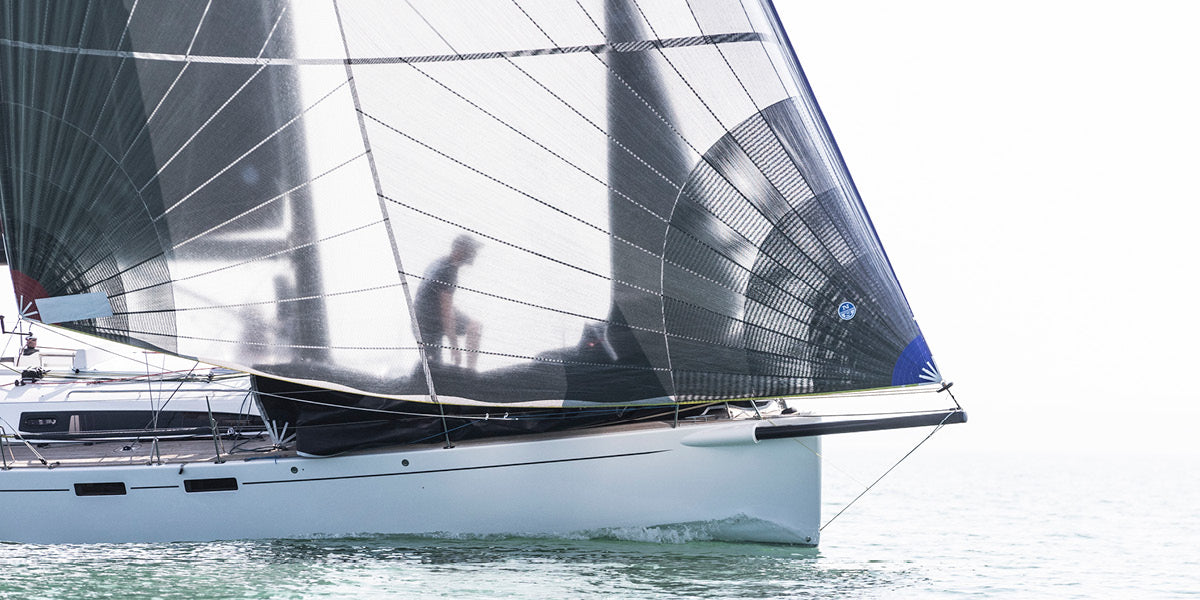
BOISW: RACING YOUR CRUISER
BAY OF ISLANDS SAILING WEEK: RACING YOUR CRUISER
Preparing Your Yacht & Choosing The Right Set Up
© Ian Roman
BOISW is shaping up to be the main event with over 100 yachts registered! Divided into many different classes, sailing week looks to be a fun and competitive regatta for sailors of all kinds. Racing Performance Handicap regattas takes a little stealth sometimes. Handicaps are set by the handicapper to best of their knowledge of the boats design and recent results from a wide range of sources & places, which is not an enviable task. Some yachts are handicap bandits and some crews just know how to play the game. With 'keeper' scores without raising the attention of the Handicapper! Our North Sails experts have sailed in these mixed fleets at many regattas across Australia with varied results. Sometimes luck is on your side, and sometimes the handicapper is not. Either way, It’s all great fun and something our team looks forward to each year. With many variables in sailing outside of our control, it is important to make sure your yacht is cleaned, light, and ready to be used with ease once your sails and crew are added. Please refer to our starting points which are VIP to make sure we are as ready as we can be to take on the fleet, wind, and tides (not to mention, the handicapper!).
Starter Tips
Clean the bottom. Pretty simple this one... but an easy one to forget if having the “bottom done” is usually more of an annual event. A smooth bottom reduces the water friction around the hull and foils. If you don't do anything else to prepare your boat then make sure you do this.
Remove Excess Weight. We love our floating home away from home with all its comforts…BUT the safety of a big anchor chain but getting the weight out of the boat, especially the ends will make the yacht more lively to sail. Removing weight will also help to reduce pitching when sailing upwind. Pitching is bad for the flow of air across the sails. Reducing weight where you can will have a positive effect across the entire wind range. Start with the Anchor & Chain, empty the water tanks, take off cruising or delivery sails.. Just have a good think of what you can do without while racing. *note: beer is not included on this list!
Rig Tune. The rigs in most cruising boats are tensioned up very tight, this can make it hard to adjust the shape of the sails for the conditions of the day. Before you leave your home club ask your rigger or sailmaker to have a look at the rig to ensure it is straight side to side and how the mainsail sits on the mast in both light and windy conditions. Ideally the mast can be adjusted to allow the sail shape to be altered with the sail and rig controls as required on the day. Some small adjustments to mast trim and mainsail luff curve can make massive improvements to your performance and make the sails easier to trim. It is important to have your rig easily adjustable.
Adjustable Backstay. Not all yachts come standard with an adjustable backstay, but if you have one or can up-grade to one, you will benefit from proper adjustment. The ability to tighten or loosen the backstay has a positive effect on the jib/genoa & mainsail at the same time. Tighter to de-power for a flatter main and jib when the wind is up, and Looser when we want power in the rig, a straighter mast and sagged forestay will power up the sails. Have your sailmaker make up an easy calibration stick or marks for repeatability.
Code-Zero & Gennaker. A good VMG running sail and a code-zero for the “round the island” style racing are a must have item to be competitive. Being “non-rating” racing allows the use of a un-restricted mid girth gennaker, more like a big genoa which is a very efficient sail that has a wide wind range. From light airs upwind to medium air reaching the Code zero is best set on a furler tacked as far in front of the forestay as you can get ie; Bowsprit or strong point on the anchor roller. A running oriented G2 gennaker is your other downwind sail. A well designed G2 gennaker can have you sailing close to as low as a symmetrical spinnaker without the hassle of a pole, Some boats don’t quite have all the winches needed to handle the sheets & Braces for a pole anyway, so the running gennaker is a perfect fit. For a bigger boat, you might also consider having a snuffer fitted to the sail to make the hoist and drop safer and easier, you can also snuff & gybe if you are not confident to gybe when the breeze is up.
Jib In-hauler and Traveller. Sheeting angle and traveller position are 2 great ways to improve the boats pointing ability, Jib tracks are placed pretty wide on many modern production boats to improve the cabin space downstairs, the downside of this is a wide sheeting angle for the jib, this directly affects the pointing ability or the “angle of attack” of the sail. An easy way to improve the sheeting angle is to have a “in-Hauler” or Barber haul system for the jib sheet. This can help narrow down the sheeting angle to a more race like 7-8 degrees from center line. Work with your sailmaker to ensure your jib has the correct clew height to suit. Another good trick that may apply if your boat does not have a traveller, is to have a handy billy purchase system that you can clip onto the boom end and the other end to the weather gunnel to bring the boom up to centerline or even slightly across without pulling the mainsheet to hard… especially handy in the lighter air to create some heel angle and rudder feel.
Downwind sail Cross-Over Chart. Know when the code zero is faster than the jib or what true wind angles you can carry the A2 is also an easy way to save trial and error racing. Ask us to help you create a simple X-Y chart that shows True Wind Speed and True Wind Angle across the top and side of the page, then its as simple as matching TWA & TWS for the sail you need!
Your North Team will be out there too, racing and for your support. We want you and your yacht to be ship-shape for racing. If you need anything, we are here to help. Don't hesitate to contact your local team to stay ahead of the game!
READ MORE
READ MORE

CODE-SEJL FORKLARET
CODE-SEJL FORKLARET
Hvad er et code-sejl?
Navnet ‘Code-sejl' kan betyde mange forskellige ting, afhængigt af, hvilken type sejler du er. Hvad der startede som et ligetil, men innovativt koncept, har hurtigt udviklet sig til en helt ny kategori af sejl. Mens Code-sejlet både kan se ud og opføre sig vidt forskelligt, er der et fælles tema: Code-sejl er hurtige, flade, fritflyvende sejl, designet til tætte vindvinkler. For at forstå alle de forskellige navne og versioner, kan det være en hjælp at se tilbage på oprindelsen af denne type sejl. Oprindeligt var "Code Zeros" designet til at måle inde som en spiler under forskellige måle regler, der krævede et midter mål på 75% af fodlængden. Volvo Ocean Race opfandt udtrykket Code Zero, som passer ind i den allerede etablerede North Sails-kodning af flyvende forsejl som for eksempel asymmetriske spilere. A1, A2, A3 osv. Code Zero sejl designet blev også populært blandt handicap sejladser under regler som IRC, ORC og DH - målereglen. Da sejlets effektivitet og brugervenlighed blev mere og mere tydelig, udvidede begrebet Code-sejl sig også til cruising sejlads. Multihull-sejlere har altid kaldt deres specialiseret high performance reaching sejl “Screechers”. Code-sejl tilføre et stort sejlareal og en masse power til tætte vindvinkler. Både med ikke-overlappende forsejl (Fok) har den største fordel ved at bruge Code-sejl, da disse sejl bedre udfylder behovet for sejlads på kryds og sejlads med spiler. Når du køber et code-sejl, er det vigtigt at tage dine bådegenskaber i betragtning (stabiliteten), ønskede vindvinkler, vindhastigheder, sejlhåndteringssystemer (rulle system) samt vælge den rigtige sejldug - så sejlet kan tilpasses dine specifikke behov. REQUEST A QUOTE CONTACT YOUR LOCAL EXPERT LEARN MORE ABOUT CODE SAILS
Code Zero Asymmetrisk Spiler - Midt bredte mål med (SMG) >75%
Konceptet i dette sejl er stort set det samme, som den oprindelige Code Zero derfor navnet (Code Zero Asymmetrisk Spiler). Design kravet her, er det fladest mulige sejl til trods for et midt-brede mål på mere en 75%. Her er udfordringen at designe og bygge et sejl der overholder 75% midt/halv bredde målet (SMGA) af fodlængden og samtidig have en faconen der er tilstrækkelig flad så sejlet er effective på tætte vindvinkler. Code Zero´en har en meget stor kappe på grund af den store midt bredde, der begrænser sejlet i at sejle højere end 45° AWA. Code Zero Asymmetrisk Spiler laves i 3Di DOWNWIND eller Code aramid laminat-duge. Helix er en specialiseret sejl teknologi, udviklet af North Sails belastningsfordelings-teknologi. Helix er nu tilgængelig for Code Sejl, Genoa-staysails, Spiler-staysails, Jib top, Blast reachers og andre specielle fritflyvende for-sejl. Helix-strukturen er designet til at håndtere og fordele belastninger imellem sejlet og forligs strukturen og samtidig kunne give tilstrækkeligt drejningsmoment til at kunne rulle sejlet. Helix-sejl er mere alsidige, fra let vind til hårdvind med et bred vindområde. Helix-struktur og optimeret facon resulterer i sejl, der kan rulles, der er nemme at trimme, og som står roligt med et fremadrettet projekteret areal. For mere information, se Helix Blue Paper.
Code 55 + 65 (SMG 51%-74%)
En Code 55 har et midt brede mål på 55% (SMG), mens en Code 65 har et midt brede mål på 65%(SMG). (SMG er midt bredden af under-ligets længden). Code-sejl med en midt-bredde mellem 50% og 70% er meget effektive og alsidige forsejl. Disse sejl bliver dog undervurderet hvis ikke ligefrem forbudt af visse handicap måleregler regler. Til offshore kapsejlads, multihull sejlads og cruising, giver disse Code sejl ren fart og sejlglæde. En mindre SMG-procentdel indebærer et fladere sejl til at sejle tættere vindvinkler med, mens en højere SMG-procentdel giver et lidt dybere sejl til dybere vindvinkler. En SMG mindre end 51% betragtes som en genua, mens en SMG på mere end 74% betragtes som en spiler.
Frit Flyvende Genua (SMG<50%)
Ikke alle fritflyvende rullesejl betragtes som Code-sejl. Hvis et overlappende forsejl skal skødes hårdt og bruges til kryds, er det en genua. Genoa til kryds har agterligs-orienteret sejl structure, hvor Code Sejl har forligs-oriented sejl structure. "Fritflyvende" forsejl er defineret i Equipment Rules of Sailing som et sejl sat uden at forliget på sejlet er fastgjort til riggen. Som følge heraf skal fritflyvende forsejl oftest have et Anti- Torsion tov, hvis sejlet skal kunne rulles.
A3 Helix Furling Gennaker Code - Mid Girth (SMG) 75-85%
Dette er et andet populær kapsejlads sejl. Faconen er midt i mellem en Code Zero og en traditionel A3 og kan laves i enten 3Di, laminat dug eller en let polyester spilerdug. A3 Helix kan ikke sejle så højt og tæt til vinden som en Code Zero, men er et godt alternativ hvis man kun ønske et flyvesejl som dækker et stor vind spectrum.
REQUEST A NEW SAIL QUOTE
CONTACT YOUR LOCAL EXPERT
READ MORE
READ MORE
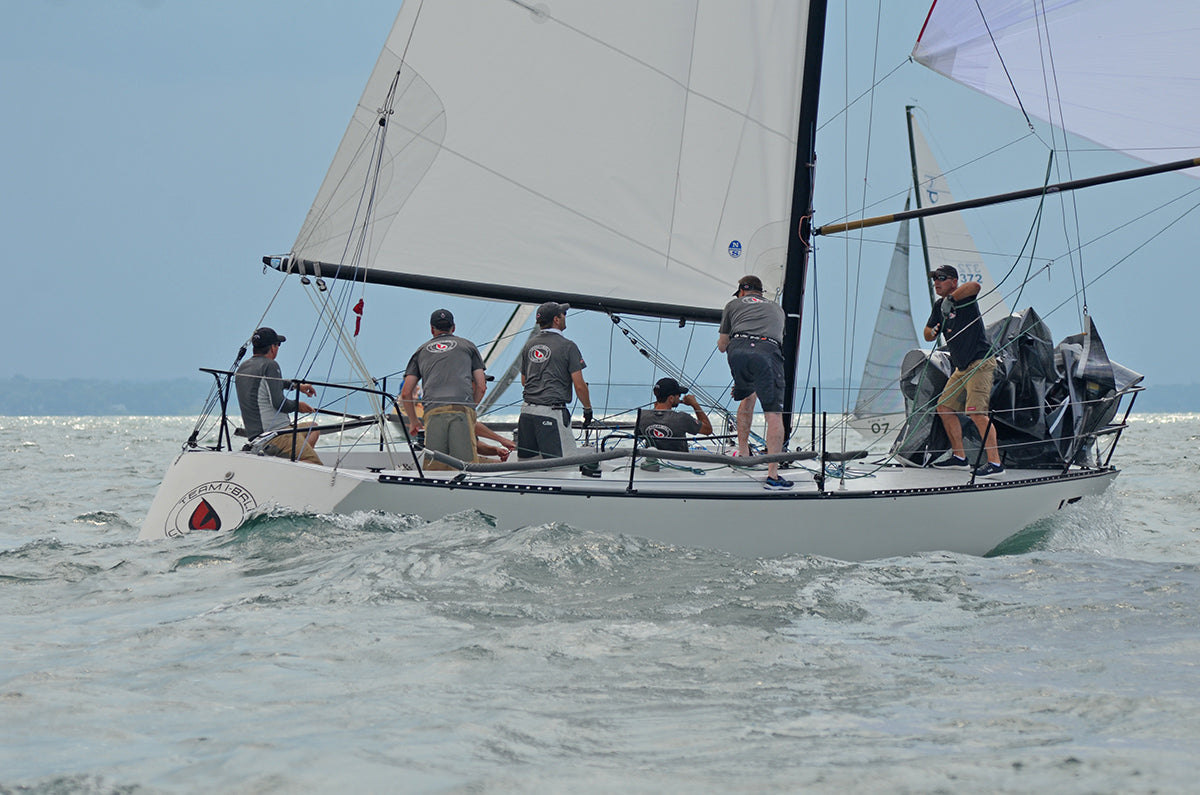
NORTH SAILS RELEASES NEW T-10 TUNING GUIDE
NORTH SAILS RELEASES NEW T-10 TUNING GUIDE
Maximize Your T-10 Performance For Different Conditions
📸 Dave Mathias
The North Sails T-10 team is excited to release a brand new Tuning Guide for 2021. The T-10 can be a simple boat to sail, however it can be rather difficult to sail the boat to its full potential and have that extra edge over your competitors. Our new Tuning Guide focuses on the importance of setting your T-10 up for the different sailing conditions such as flat water vs. chop.
When tuning your T-10, it is important to know how your mast bends and reacts to rig tune changes. It is also important to know exactly what to look for when tuning in different conditions or as the conditions change throughout the sailing day. Our new Tuning Guide will walk you through the whole process of tuning, from getting your mast inline with your keel for optimized tack to tack performance, to knowing how to power up/de-power the rig as conditions change. The hardest part of rig tune on any boat is knowing what changes need to be made and when to make them.
Visual Tuning
The new Tuning Guide is based on visual tuning. The concept of looking at your leeward shroud tension while sailing upwind, as well as sighting up the mast to visually see if the mast is bending side to side, if the top of the mast is falling off to leeward, or if the mast is straight in a side-to-side plane. Visual Tuning also involves looking at your headstay tension, or headstay sag.
The T-10 being a deck step mast, your upper and lower shroud tension becomes critical in controlling your headstay sag. In some conditions such as flat water, you will want to sail with a tighter headstay. That will allow you to trim the headsail in more, which will allow you to point higher. This can be achieved by sailing with a tighter rig tension. In other conditions, such as medium air and chop, you will want to sail with more headstay sag to make the Jib deeper and more powerful. This can be achieved by sailing with a loser rig tension.
Live Webinar – Sign Up!
To learn more about our new Tuning Guide and Visual Tuning, sign up for our T-10 Webinar on Wednesday, January 13th, at 19:30 EST.
T-10 Class experts Nick Turney and Perry Lewis will share critical updates to the Tuning Guide and explain in more detail the concept of Visual Tuning on the water. Nick and Perry will also discuss the differences between a one-jib program and a two-jib program, the advantages and disadvantages for either. Sail designer Mike Marshall will present the difference between 3Di, 2D string sails, and paneled sails. Sail expert Allan Terhune will moderate the webinar.
VIEW NEW TUNING GUIDE SIGN-UP FOR WEBINAR
📸 Dave Mathias
READ MORE
READ MORE

LET'S TALK AMERICA'S CUP
SITTING DOWN WITH THE AMERICA’S CUP COMMENTATING CREW
Shirley Robertson Ken Read and Nathan Outteridge Share Insights Ahead of the Prada Cup
📸 Carlo Borlenghi / America’s Cup
North Sails President Ken Read, Olympic gold medalist and foiling expert Nathan Outteridge, and two-time Olympic gold medalist Shirley Roberston are all part of the commentating team who are helping us follow the 36th America’s Cup. Shirley sat down with Ken and Nathan for a recent episode of her podcast. The team does a deep dive, providing their insider view on the World Series racing to date, and weighing up the strengths of each of the three Challengers. As the Prada Cup draws near, they dissect the performance of the three Challenger teams, looking at where each team may be able to improve and discuss some of the design differences apparent in each of their setups. Listen below and get up to speed on all things America’s Cup.
READ MORE
READ MORE
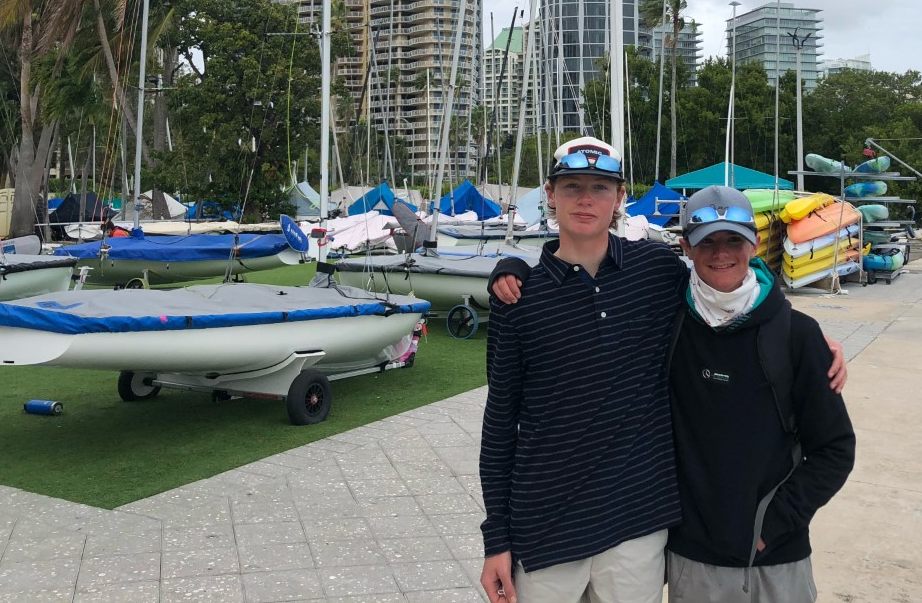
2020 INTERNATIONAL 420 US NATIONALS
2020 INTERNATIONAL 420 US NATIONALS
Congratulations Tommy Sitzmann & Luke Woodworth
The i420 Class doesn’t wait long to crown a National Champion! After a grueling 4-day regatta, with some moderate winds at the beginning and then 3 days of more (and more) wind, congratulations to the 2020 i420 National Championship team of Tommy Sitzmann/Luke Woodworth. According to their parents, these two student-athletes have worked hard, combining top-level sail training along with school and other sports.
Team Outfit Sailing, led by Miami-based coach Lior Lavie, swept the podium, taking the top 3 finish positions. North Sails powered the top three finishers, and the sails worked incredibly well in a varied conditions from marginal trapping, to full-on heavy air.
We continue to study i420 boat sail design and tuning, and we’d love to help you go faster. Please don’t hesitate to contact us with questions!
READ MORE
READ MORE
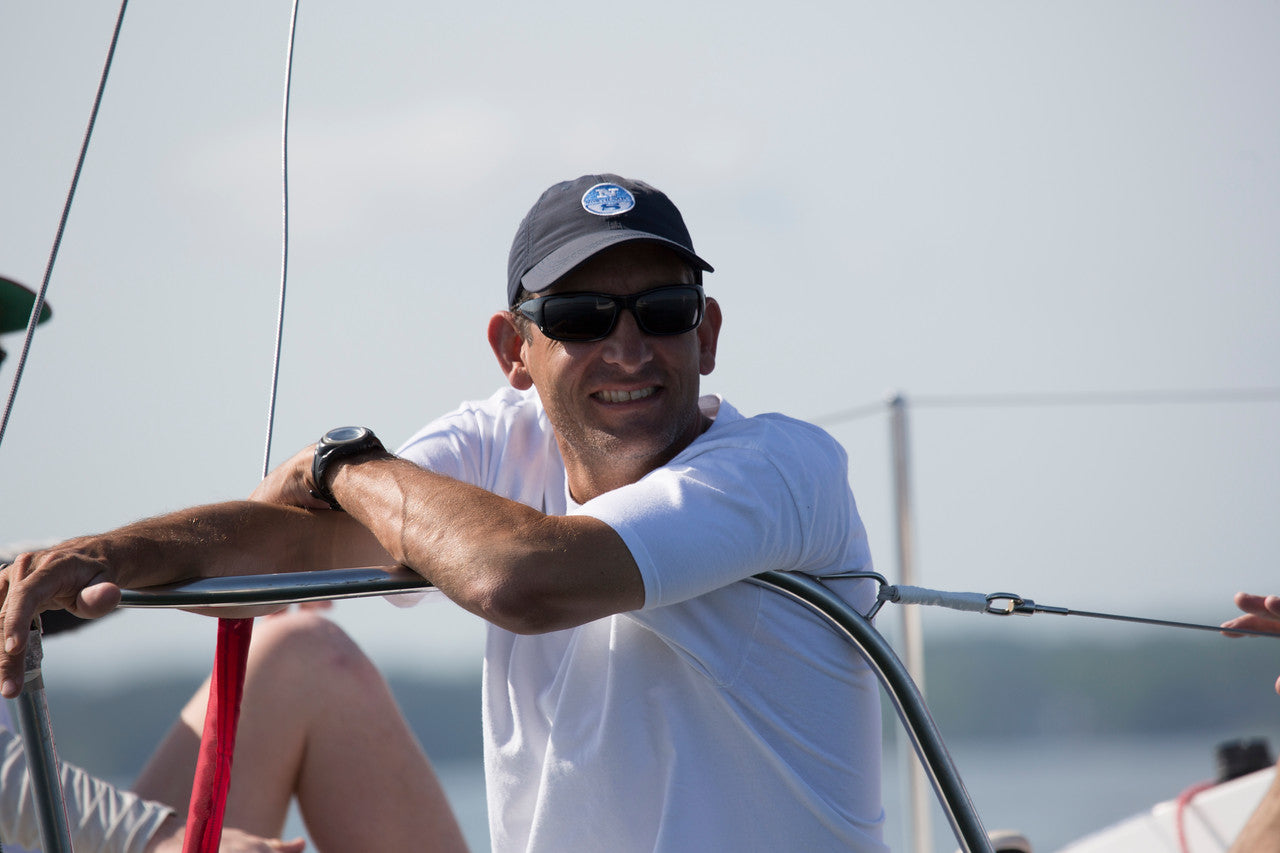
NORTH SAILS GROWS IN FLORIDA
NORTH SAILS GROWS IN FLORIDA
Veteran Racer Paul Abdullah Helps Expand North Sails Presence in Greater St Augustine Area
Champion racer Paul Abdullah is expanding the North Sails presence in North Florida with an increased focus on cruising and club racing sailors. Working in concert with Peter Grimm and Bob Meagher of North Sails Ft. Lauderdale, Abdullah's expanded hands-on presence in the area will help clients enjoy North Sails unique cruising and racing products.
Abdullah grew up in Jacksonville, Florida, and started sailing in dinghies at a young age and with his father in various PHRF boats. At 18, he got his first Thistle, beginning his journey to where he is today. Abdullah competes across various one-design and PHRF class platforms and has won 16 National, North American, and World championships. Now he's applying his lifetime knowledge of sailing to help cruisers enjoy their boats more.
Abdullah's goals are simple. He wants to help all sailors get the most out of their boats and introduce new people to sailing to expand access to the lifelong sport he enjoys. He met his wife Marie sailing Thistle one designs, and they both compete together often.
Abdullah is supporting clients throughout St. Augustine, Jacksonville, Fernandina Beach, Palm Bay, and Daytona Beach areas, serving cruising and racing clients. Providing top-quality North Sails products and service is always at the forefront of his mind.
Interested in sails or help with your boat? Clients can contact Paul Abdullah at 904-571-6051 or by email at paul.abdullah@northsails.com.
READ MORE
READ MORE
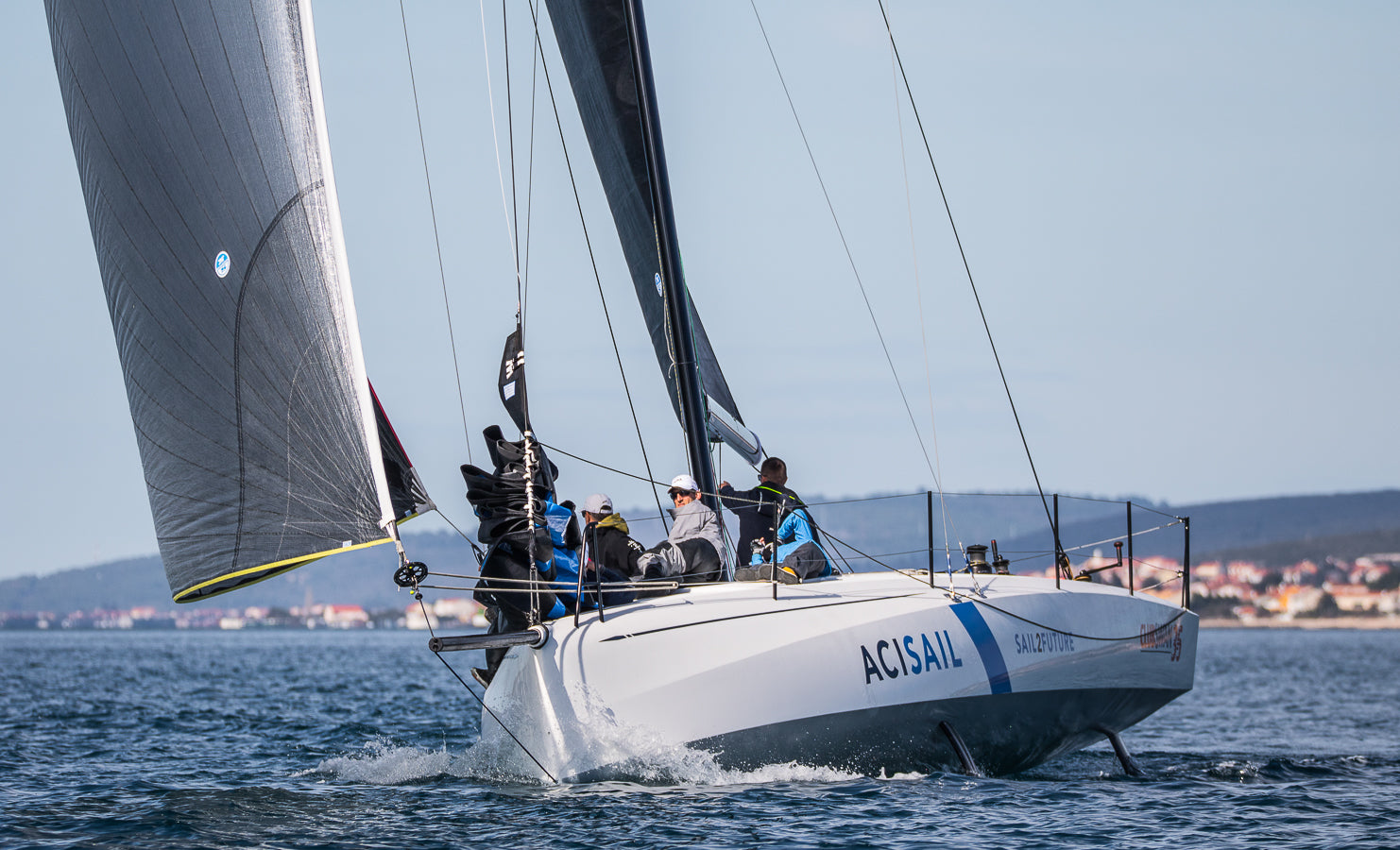
JEDNA NEOBIČNA GODINA DOŠLA JE KRAJU!
Jedna neobična godina došla je kraju!
📸 regate.com.hr
Za 2020. mnogi će se složiti da je godina koju treba zaboraviti, ali vjerojatno će zbog te odluke mnogima ostat u sjećanju, istina lošem, ali što je tu je... nadajmo se da će iduća biti mnogo bolja i ugodnija!
Ograničenja zbog Korone bila su na snazi do svibnja kad se kao prva regata u novozapočetoj sezoni organizira Komiška regata. Regata je održana u jednakom formatu kao i ranijih godina, a također i u originalnom terminu. Za North Sails klijente to je bila više nego dobra regata, pa je najbrža jedrilica generalno bio Polet Furioso, a s mjestima na postolju mogli su se pohvaliti i Mila 8, Gringo 3, Mareus 2 - Poliklinika Drinković, Mr.J, Big Grin...
Zatim slijedi najpopularnija regata dvojaca na Jadranu, Sušac 100x2. Ovogodišnji start s čak 54 jedrilice bio je stvarno lijep prizor, a također i kasniji pogled na rezultate. Pobjedu i u realnom vremenu i po premjeru odnosi Dubrovnik, dok je Swan Club 36 - Bracing Breeze na drugom mjestu. Toto Travel je četvrti, a Gracious Style peti itd.
📸 regate.com.hr
Što se tiče Dalmacije, tu je uslijedila pauza do Južnodalmatinske regate na kojoj se okupilo 18 posada od kojih je većina bila izrazito sportski nastrojena. Ponovno su naši klijenti imali više nego zapažen nastup i pokazalo se da neovisno o godištu jedrilice, ako imate naša jedra možete planirati penjanje na jednu od stepenica pobjedničkog postolja. Nakon konačnog zbrajanja rezultata Mareus 2 - Poliklinika Drinković osvaja ukupno drugo mjesto, Gringo 3 završava na trećem, Mr.J je peti, Lero je drugi u prvoj etapi, a Dubrovnik s maksimalno pomlađenom posadom drugi u trećoj etapi.
Za to vrijeme na sjevernom dijelu hrvatske strane Jadrana jedri se niz regata koje se boduju za Kup hrvatskog primorja na kojem dominira Damaco koji je ove sezone kompletno obnovio North Sails "ormar".
Pred kraj ljeta na Lošinju se organizirala jedna od regata Kupa hrvatskog primorja na kojoj su uz Kvarnerske jedriličare jedrilo i nekoliko krstaša iz južnih krajeva. Regata je bila dosta teška zbog uvjeta nestabilnog vjetra, ali NS jedra rade dobro svoj posao i u sam vrh dovode Damaco i Gringo 3.
Ubrzo nakon Lošinjske regate, u novom terminu, organizira se ovogodišnja Fiumanka. 130 jedrilica na startu, predvođenih apsolutnim favoritom Molom Longom, borilo se s tradicionalnom bezvjetricom Riječkog zaljeva. Naravno, najvisočiji jarbol hvatao je zračna gibanja nedostižna jedrilicama normanijih dimenzija i time imao izrazitu prednost pred ostalima, ali zato su Damaco i Tacit Consent uspješno hvatali priključak za njim i ponovno pokazali da je oznaka North Sailsa na jedrima stvarno pokazatelj kvalitete i u tim, skoro pa nemogućim, uvjetima.
Iza nje odjedrila se najmasovnija dalmatinska regata, 89. Mrduja. Uvjeti slični onima u Rijeci, ali s mnogo više sunca i bez kiše i jednako zahtjevna za navigatore prijavljenih 150 jedrilica.
Koliko je teško bilo na moru kazuje podatak da je kompletnu rutu odjedrilo samo 39 posada, dok je do pomoćnog cilja na Mrduji dojedrilo 65 posada.
Pobjedu u realnom vremenu odnosi Polet Furioso. Odmah iza njega završavaju Molo Longo i Toto Travel, potom momci s jedrilice Mareus 3 - Poliklinika Drinković koji su završili na korak do postolja, na šestom mjestu završava posada Bare V, sedmi je Barba Branko, osmi Damaco, a deveti Gringo 3.
📸 regate.com.hr
I posljednja velika regata krstaša koju organizira JK Labud bila je u znaku naših jedara i naših zadovoljnih klijenata. Naravno, riječ je o Viškoj regati koja se ove godine nije jedrila do Visa, već do Starog Grada na otoku Hvaru, pa je shodno tome prigodno promijenila naziv u Pa(v)iška regata.
Ovog puta line of honor odnosi Mareus 3 - Poliklinika Drinković, a treća najbrža jedrilica je Polet Furioso, dok je Dubrovnik završio na četvrtom mjestu, Overload na petom i Bare V na šestom.
Što se tiče bodovanja po ORC-u, Dubrovnik je ovog puta bio naš najuspješniji predstavnik s drugim mjestom nakon bodovanja obiju etapa zajedno.
Zadarska koka bila je još jedna organizacijska uspješnica vremenskim prilikama unatoč. 59 jedrilica jedrilo je ispred Zadarske rive i u popriličnoj gužvi regatnih jurilica u vrhu flote završavaju Gringo 3, Damaco, Lucky, Mr.J...
Potom slijedi jedina isključivo ORC regata sezone 2020.
JK Val je organizirao Prvenstvo Hrvatske na kojem je bilo prijavljeno 10 jedrilica, od kojih je samo 8 odjedrilo cijelu regatu, a još 6 posada je otkazalo sudjelovanje u posljednji tren zbog desetkovanja posada uzrokovanih Kovid samoizolacijama.
Jedrilice koje su zajedrile u Zlarinskom akvatoriju imale su izvrsne uvjete za jedrenje i osim uobičajenih štapova jedrile su i jedan navigacijski plov.
North Sails klijenata je ovog puta bilo čak šest, a najuspješniji od njih bio je Damaco, koji je s ovom regatom zaokružio jednu vrlo uspješnu sezonu.
📸 regate.com.hr
I za kraj trebamo spomenuti jedinu off shore regatu koja se ove godine jedrila u jesenskom periodu. Riječ je o 2. Susku, regati koja se organizira za dvojce i posade.
Ove godine se nije odjedrila kompletna ruta zbog iznimno jake rute, a jedrilica zbog koje nam je i ova regata posebno zanimljiva bila je ponovno Damaco, čija dvočlana posada je odnijela pobjedu i u realnom vremenu i po ORC-u i u kategoriji dvojaca i u apsolutnoj kategoriji.
Za razliku od ostalih regata, na ovoj su koristili "obična" dacron jedra, a ne karbonska kao na ostalim regatama!
I za kraj najzanimljiviji dio, koja NS jedra koriste jedrilice o kojima ste čitali:
Dubrovnik: glavno jedro, flokovi, genakeri
Damaco: glavna jedra, flokovi, genakeri
Bracing Breeze: glavno jedro, flokovi, genakeri
Tacit Consent: glavno jedro, flokovi, genakeri
Gracious Style: glavno jedro, flokovi, genakeri
Lucky: glavno jedro, flokovi, genakeri
Mr.J: glavno jedro, flokovi, genakeri
Bare V: glavno jedro, flokovi, genakeri
Gringo 3: glavno jedro, flokovi, genakeri
Mareus 2 Poliklinika Drinković: glavno jedro, flokovi, genakeri
Mareus 3 Poliklinika Drinković: genakeri
Polet Furioso: glavno jedro, flokovi, genakeri
Molo Longo: 3Di flokovi
Toto Travel: flokovi
Barba Branko: glavno jedro, flokovi, genakeri
Mila 8: flokovi i genakeri
📸 regate.com.hr
READ MORE
READ MORE
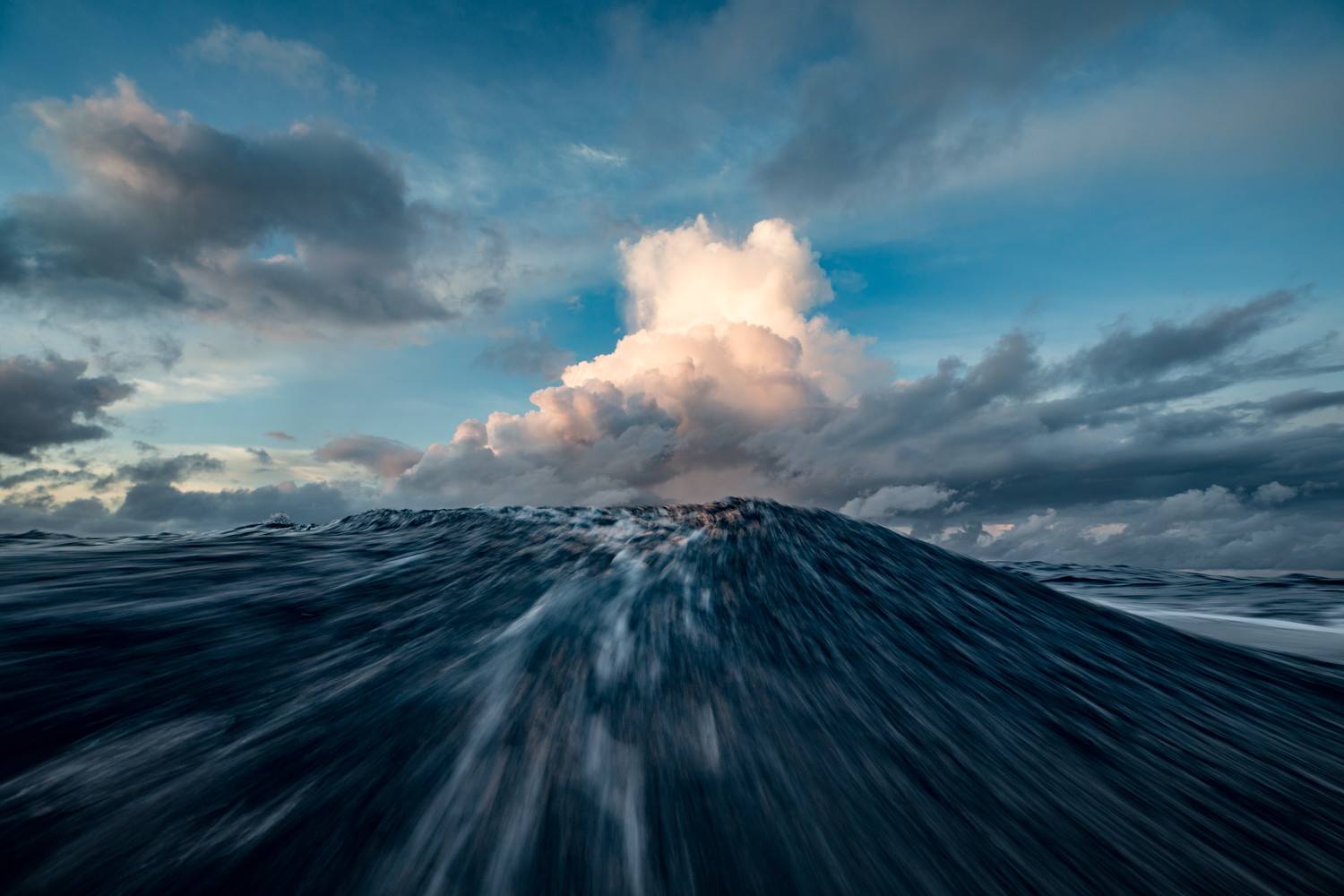
WE'RE LEAVING 2020 AT THE DOCK
WE’RE LEAVING 2020 AT THE DOCK
Cheers to the New Year and a Fresh Perspective
📸 The Ocean Race
We’re starting the new year cautiously optimistic for what lies ahead. A global pandemic is an event none of us expected or had prepared for, but there were bright spots that we hope to carry forward into 2021.
First of all, this is an exciting time in sailing. We have a trifecta of adrenaline-pumping events – the Vendee Globe, the 36th America’s Cup, and the Ultims back on weather-watch for their Jules Verne attempt. We rarely get to play witness to some of the most exciting sailing all at once, and watching the skippers and crews handle these high-powered boats is for sure a welcome treat to close out 2020.
While it’s disappointing to see many of our sailing events canceled, the effort to get on the water gave way to new opportunities. We saw a surge in interest in doublehanded racing and local sailing with friends and family. It’s all too easy to get caught up in the travel, the big-crew programs, and winning a regatta on the world stage. In a sense, 2020 brought us all back to grassroots sailing, and you know what, it was fantastic. It was simple, fun, and personally, it reminded me why I love our sport.
And finally, thank you to the North Sails team worldwide, both employees and our clients. This past year was an exercise in patience, hard work, and teamwork. We move into 2021, looking forward to the new year. See you on the water.
READ MORE
READ MORE
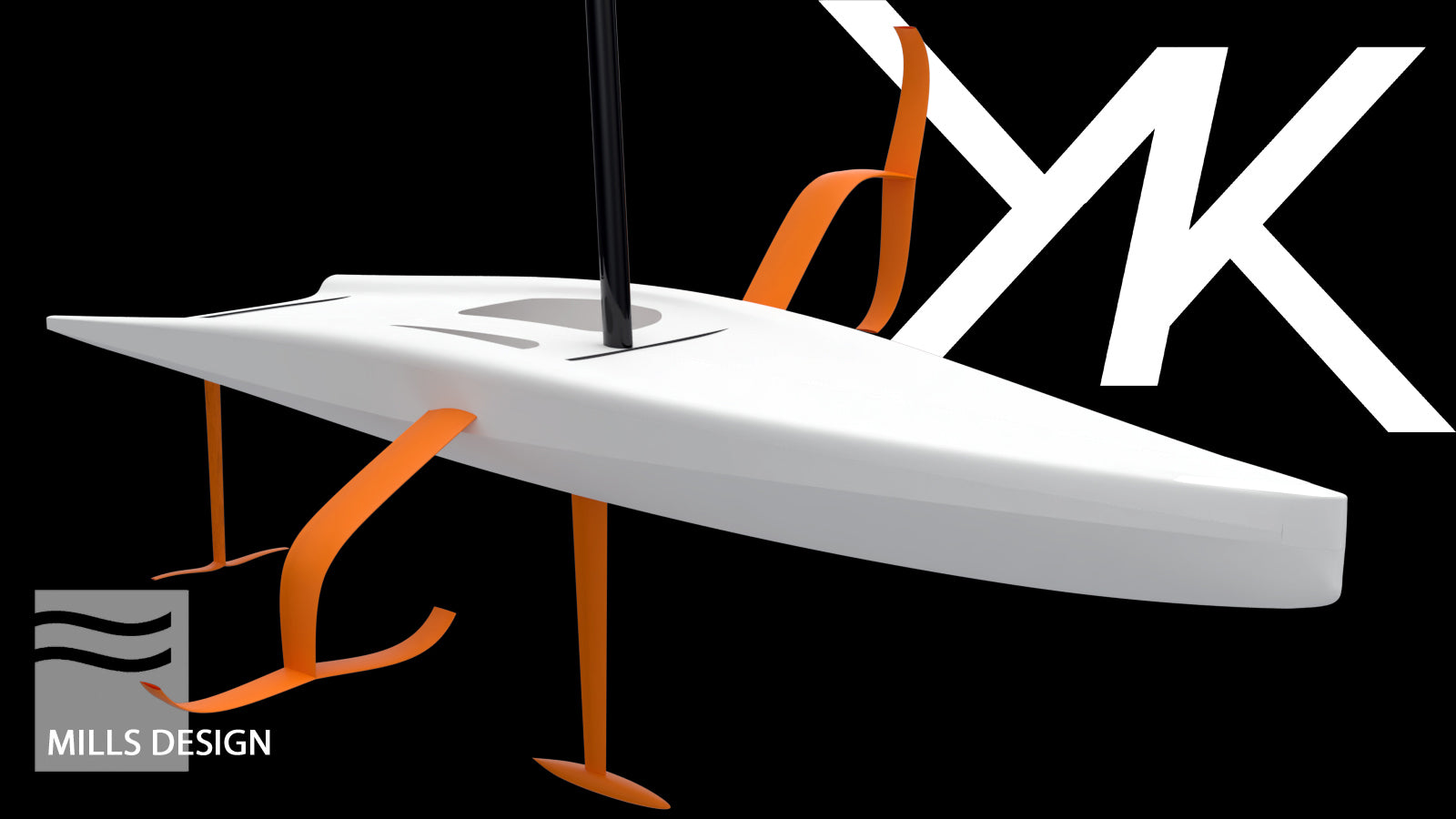
FLYINGNIKKA IS FUTURISTIC, UNIQUE, AND EXTRAORDINARY
ITALIAN OWNER ROBERTO LACORTE PRESENTS FLYINGNIKKA
The First New Generation Foil Mini Maxi Designed by a Team of Specialists Captained by Naval Architect Mark Mills
Republished with permission from the FlyingNikka Team
Futuristic, unique, extraordinary. A real “weapon”, ready to amaze from the first day it touches the water in middle of 2022.
FlyingNikka is the new highly anticipated boat by Roberto Lacorte, a successful entrepreneur with a passion for regattas – with the Mini Maxi SuperNikka he has won everything possible, including four Maxi titles in Porto Cervo and the FIV Owner-Helmsman of the Year, followed by victory in the first year of the new Persico 69F foiling monohull circuit.
FlyingNikka is something unique, unprecedented, a dive into the sailing of the third millennium which, as is clear from the main sailing events in progress – the Vendée Globe round the world and the America’s Cup regattas – no longer sails on water but flies above it.
19 meters long, equipped with latest generation appendages that allow foiling in excess of 40 knots, FlyingNikka is being designed by a team coordinated by Irish designer Mark Mills of Mills Design. She will be the first foiling Mini Maxi in the world, an evolution suitable for longer trips than the current AC75, with which to compete in coastal and offshore races in record time.
“It will be a different boat, the first of a new generation that will definitely set sail in the coming years. We are the first, with the pros and cons of the case, but my professional and sporting life has always been marked by innovation and the desire to explore, so I could only take this direction”, explains Roberto Lacorte, also involved in motorsport with the Cetilar Racing team driving his Dallara prototype, including four years at the 24 Hours of Le Mans.
“We have been working on the project for a long time, with Mark Mills and the professionals with whom I have shared many victories with SuperNikka and the Persico 69F circuit. Now we know which path to take precisely and we are ready. I can count on an exceptional group, which is making a fundamental contribution to the realization of FlyingNikka. And it is the most important aspect, when you embark on an undertaking like this, outside the comfort zone, which might even seem a bit crazy”.
Alessio Razeto, Team Manager and Head of the Sails Project, Lorenzo Bressani, Enrico Zennaro, Andrea Fornaro and Lorenzo de Felice are the five, experienced and titled sailors who together with Lacorte himself, the Commander of the boat Fabrizio Turini and the design team set up by Mark Mills and the Project Manager Micky Costa, will work closely on the development of the innovative FlyingNikka project until the day of launch, scheduled for the middle of 2022, with the colors of the Yacht Club Repubblica Marinara di Pisa.
Designer Mark Mills is very enthusiastic about this new direction: “Mills Design is proud to be developing the most exciting new design project outside of the America’s Cup. The vision of repeat client and Italian Owner of the Year Roberto Lacorte is to be the first to have a Mini-Maxi sized foiler capable of coastal racing and to bring true big boat foiling performance to a wider audience. This will take the lessons and some of the technology from the America’s Cup AC75 foiling monohull and put them together in a more user friendly and cost-effective package which can sail in a wider range of conditions.
Given the very challenging design brief we assembled a team of specialists to ensure we could deliver Roberto’s vision. Among the 10-man group are members with experience of 3 of the 4 AC teams currently competing in Auckland. Our R&D Partners KND provide the analytical tools to evaluate the novel design topography, with aero input from North Sails design specialists, while Pure Engineering provides their relentless drive and technical knowledge to produce the lightest and most reliable platform. The initial six months of preliminary design work has been focused on validating the concept, using the TNZ-developed Gomboc dynamic simulator and the North Sails VPP to evaluate various configurations and foil geometries both when flying and in displacement mode. Led by founder Gio Belgrano, Pure have developed an entirely new wing articulation solution to reduce foil cost and improve reliability appropriate to a project operating outside the rarefied conditions of the America’s Cup.
Our vision for the design is a robust simple platform able to foil in winds below 10 knots true, and capable of passing the various requirements for entry into mainstream race events, such as WS Offshore Special Regs categorisation including stability. The need for limited Archimedean sailing in sub-optimal wind speeds and increased contact with the sea surface in a wave pattern leads to a hull shape differentiated from its AC75 siblings by greater concern for wetted surface. Powered controls and winches assisted by a flight augmentation system reduce the burdens on the 5 man crew, allowing the helm to focus on steering without also having to directly control ride height.
Now that the project is moving at full speed, the design team is focusing on development and optimisation of the design geometry and systems. Over the next three months the hull, deck, and crew configuration will be finalised prior to the commencement of construction. Builder selection is at an advanced stage, guided by experienced Project Manager Micky Costa who fills a crucial role linking the designers, builder, and sailing team to produce a reliable, simple and effective sailing machine”.
A boat ready to amaze – which will be able to race with an ORC certificate thanks to the close collaboration with the Offshore Racing Congress for the definition of the VPP relating to full foil boats – of which the first technical details will be revealed in the coming months, in addition to name of the construction site and of the members of the design team.
In the meantime, the crew will be engaged again in the Persico 69F circuit with the two “small” FlyingNikka 47 and 74, as confirmed by Team Manager Alessio Razeto. “We will have to defend the first and second places won this year. And continue to accumulate specific experience on foils, a constantly evolving world that must be followed daily and on which there is still so much to learn. Our experience on the Persico 69F ”, continues Razeto,“ was very important in this first phase of conception of the new project, because the contribution of those who go by boat is crucial. And ours is a very high level sailing team ”.
READ MORE
READ MORE
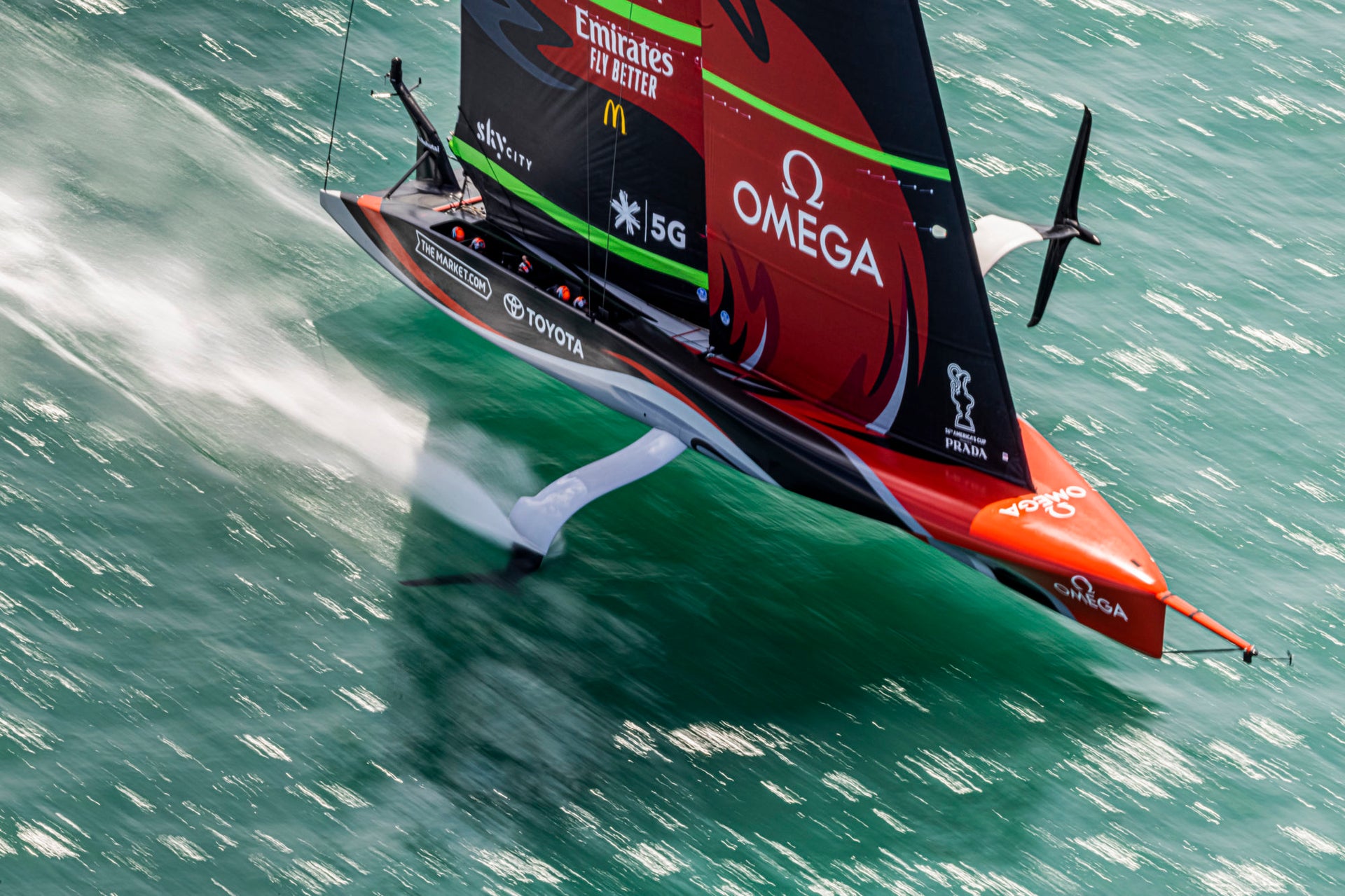
FIRST IMPRESSIONS FROM A SAIL DESIGNER
FIRST IMPRESSIONS FROM A SAIL DESIGNER
What Did JB Braun See During the America’s Cup World Series?
Ask a sail designer what they saw during the America’s Cup World Series, and you won’t be surprised by their answer – sails of course! JB Braun, our Director of Design and Engineering, is a six-time Cup veteran and one of the most respected sail designers in the world. Like many of us around North Sails, he was glued to his screen last week to watch the action unfold on the water in Auckland.
We asked JB to share his unique perspective on this edition of the Cup and how the North-powered engine above deck helps the AC75s fly.
READ MORE
READ MORE
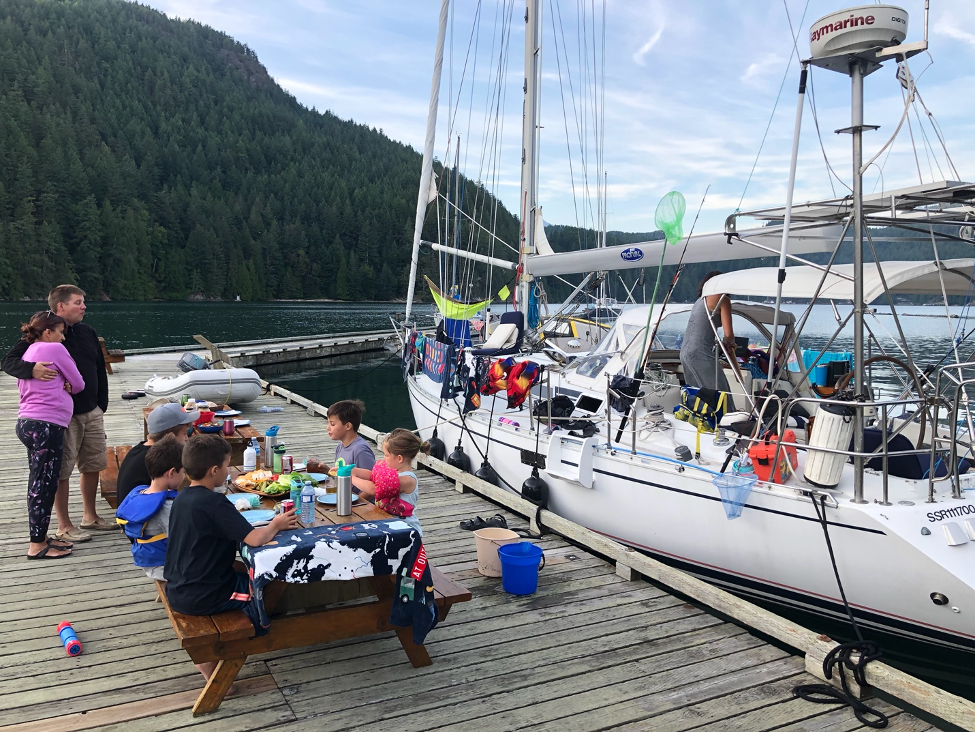
CRUISING THE PNW WITH KIDS
CRUISING THE PNW WITH KIDS
Sailing Fun And Adventure For The Whole Family
Jamie and Cathy Copeland cruise the PNW with their two kids Will and Belle. Jamie and Cathy are both airline pilots and the founders of the Online Booking Platform www.swiftharbour.com and the home organization app for iPhones www.housemanual.app.
How did you and Cathy get into cruising?
Jamie - My folks had long been into the sailing and racing scene after moving to Vancouver from Antigua. In 1985 after selling his portion of Specialty Yachts, my father picked up the family Beneteau First 38 Bagheera in France and we started a 6 1/2 year circumnavigation. I was 2 when we started, and I've found that my passion for boating has only really increased with time.
Cathy - I was born and raised in Winnipeg, so cruising and racing was not a natural thing for me. My Aunt and Uncle cruised offshore and we had spent time on their boat, but it certainly wasn't something I did much of before Jamie and I met. Within 6 months of meeting in Smithers, BC, Jamie and I were in the Caribbean cruising on Bagheera, and that was the beginning of my falling in love with boating.
What type of boats have you owned and what is your favourite?
Jamie - We started with a Martin 242 that we used to race and occasionally camper cruise on. It was a great boat for us as a couple, and great for Cathy to learn on.
From there, with the arrival of our firstborn, Will, we moved into our Beneteau First 285, Sundowner. The 285 is a small, big boat, with an inboard diesel, running water, proper head with holding tank and separated cabins. It's a lot of boat for a 28 footer, and the majority of our family cruising memories were on Sundowner. We lived on her for 2 months of summer cruising in 2015, with a 3-year-old and a 10-month-old,
and it was magical. Cathy and I were doing so much flying locally at the time and Sundowner gave us the chance to explore all the areas we were flying over from the water. We loved that boat and I still check on her when I'm in False Creek where her current owners keep her looking beautiful.
What boat are you currently cruising on?
Cathy - In 2017, Jamie's parents began pondering the idea of selling Bagheera, which by this point was back in Vancouver after approximately 115,000 nm of offshore cruising visiting 114 countries with no plans for more. After some family discussions, we elected to sell Sundowner and purchase Bagheera to keep her in the family.
Bagheera has been a nice upgrade for us. She is very comfortable in heavy seas, sails beautifully and has a lot more space than we were ever used to in our previous boats. She is great for longer-term provisioning so we can get away for longer and also take guests. The more we get to know her, the more we love her.
What are your favourite family cruising spots?
Jamie - I think we share many popular favourites with the local cruising community in the Southern Gulf Islands, Desolation Sound, San Juans etc. There is just so much to love cruising in these waters that are so unique to this part of the world. After flying up and down the coast, and now overseas, Cathy and I have come to realize how lucky we are with the destination options at our doorstep in BC.
Cathy - So much of our cruising is now influenced by the experiences that our kids will enjoy and the somewhat limited time we have off in the summers (the historical busy season in the airline world). Locally we've had some magical experiences on the little beach on the north side of Montague Harbour, stern tying in Princess Cove on Wallace Island, enjoying the summer scene in Plumper Cove, and visiting the numerous communities in southern BC by the sea. One of our top spots, if we have a bit more time, is Princesses Louisa Inlet, and of course, along with most boaters we always endeavour to visit Desolation in the summer.
Any tips or tricks for parents wanting to start cruising with kids?
Cathy - Firstly, for anyone new to cruising, the more you do it, the easier it gets. It's the first few times that feel daunting, but it just gets better and better. Second is the high-level importance of safety. There is a solution for every stage of development for kids. You can, with creativity, child-proof for any age. We had both kids on the boat as newborns, through the toddler stage and beyond. The key is not to commit to one style of doing things and to keep adapting with your kids.
A trick we have learned is the power of audiobooks on long passages. The kids seem to soak them up and it's a nice way for them to enjoy a day at sea in a unique way. We also have little boats (and an airplane) that we often tow behind the big boat and the kids have spend hours jumping them over waves and making them bob in the wake.
Jamie - Spending so much time around boats in my life I've heard a lot of first-hand stories about safety issues at sea and been part of a few too. The theme always is that safety always needs to be taken seriously and be at the front of one's mind on a boat, particularly with kids. We take quite a conservative approach overall and focus on both ensuring the kids are well supervised, have knowledge of risks (as age-appropriate) and operate carefully. They live in their life jackets, we often have them wearing life harness teathers connected to a padeye or jackline. We have some quite strict rules about where they can go and what they can do while underway particularly if the sails are up, and ensure that they understand the why's of how things operate, what's safe and what's not.
On a lighter note, kids soak up the passion we all feel for being on the water and almost always embrace that passion themselves. There are so many fun activities to do. Boating is one of the few pastimes that seems universally fun for all ages - even teenagers seem to enjoy cruising with parents - and something that they very likely could continue for life. It's such a cool thing.
You grew up racing on the RVYC sailing team, do you still race and what are your favourite races to do these days?
Jamie - Yes, but never as well as I would like. We were a pretty strong team of little sailors on the Royal Van Race Team back in 90s and I would love to race on one-design circuits again and refine my craft. The racing we do now is a lot of fun though, and in normal years I charter a boat with 3 other old race team friends which is a blast. Cathy and I also love participating in the Round Bowen Race hosted by one of all time favourites the Union Steamship Company Marina. Now that the America's Cup is heating up again (with the great Kenny Read in the commentator's booth), I can't wait for some racing, any type of racing, to get started again.
Cathy - I crew with Jamie from time to time on Royal Van Wednesday nights and enjoy getting back into it again like when we used to own the Martin.
Have either of your kids gotten into racing?
Yes, our eldest Will is in his first year of racing at Royal Van in the Optis. He seems to be enjoying it and the program and coaching staff have a well-structured and professional program while they manage the challenges of COVID. I think soon it will be time to buy Will his first proper racing sail from North Sails.
READ MORE
READ MORE
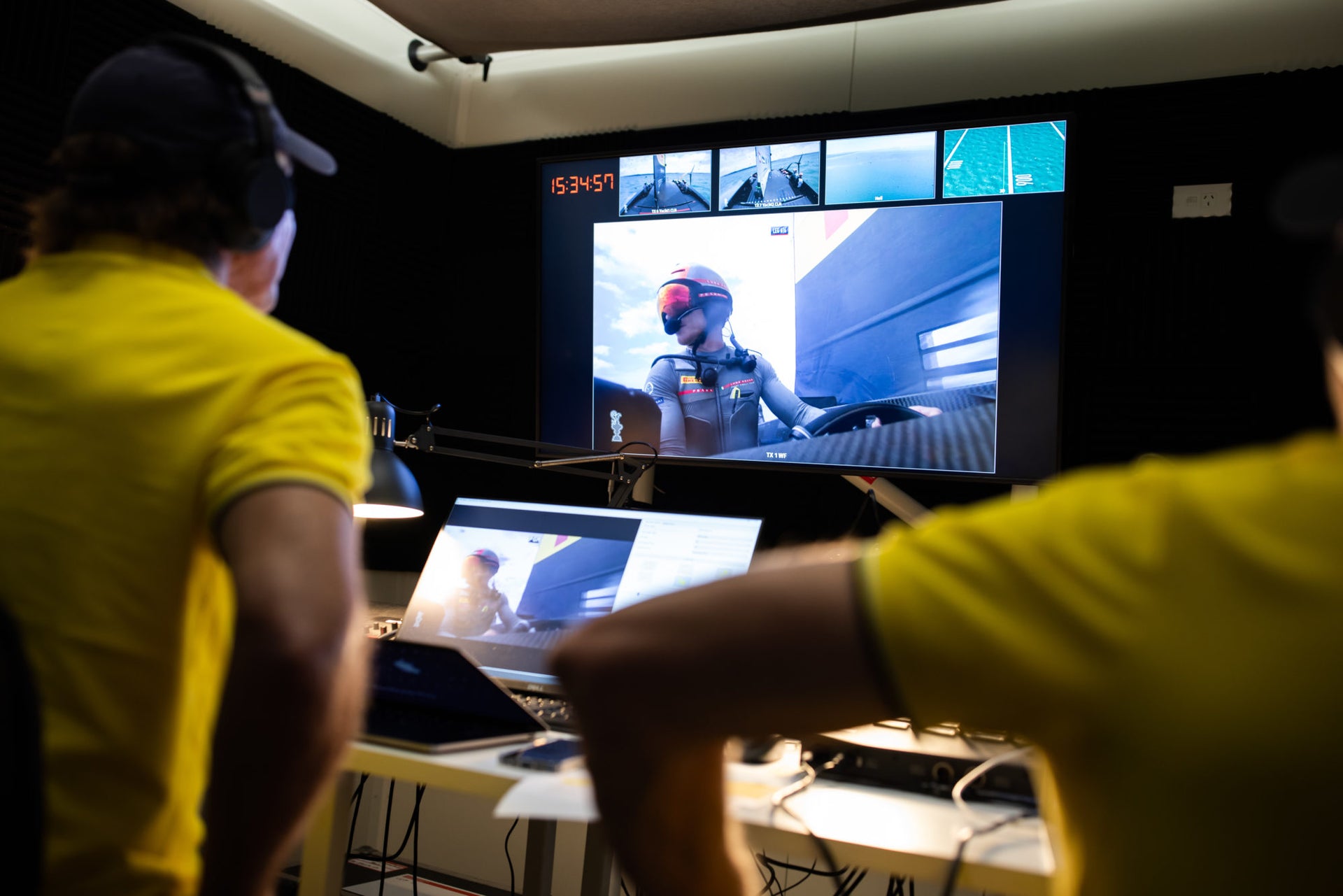
THE BEST SEAT IN THE HOUSE WITH KEN READ
BEST SEAT IN THE HOUSE WITH KEN READ
What Is It Like to Call the AC36 Play-by-Play?
If you’re looking for a sailing expert for your next racing event on TV, you call Ken Read. The former America’s Cup competitor who became an around-the-world skipper with a maxi-yacht speed record, and our current President of North Sails, Read is one of the most respected names in the sport. He is also one of the four voices behind the all-star line up of commentators for the 36th America’s Cup. The 36th America’s Cup is Read’s third stint as a play-by-play commentator, having performed the same role in San Francisco in 2013 and Bermuda in 2017.
We snuck into the broadcast booth to get a behind-the-scenes experience of what most of you are hearing from your screens. Read makes it look easy but the amount of practice and effort to pull off a smooth show is immense. We just tried to stay out of the way!
Let’s go on air with Ken.
READ MORE
READ MORE
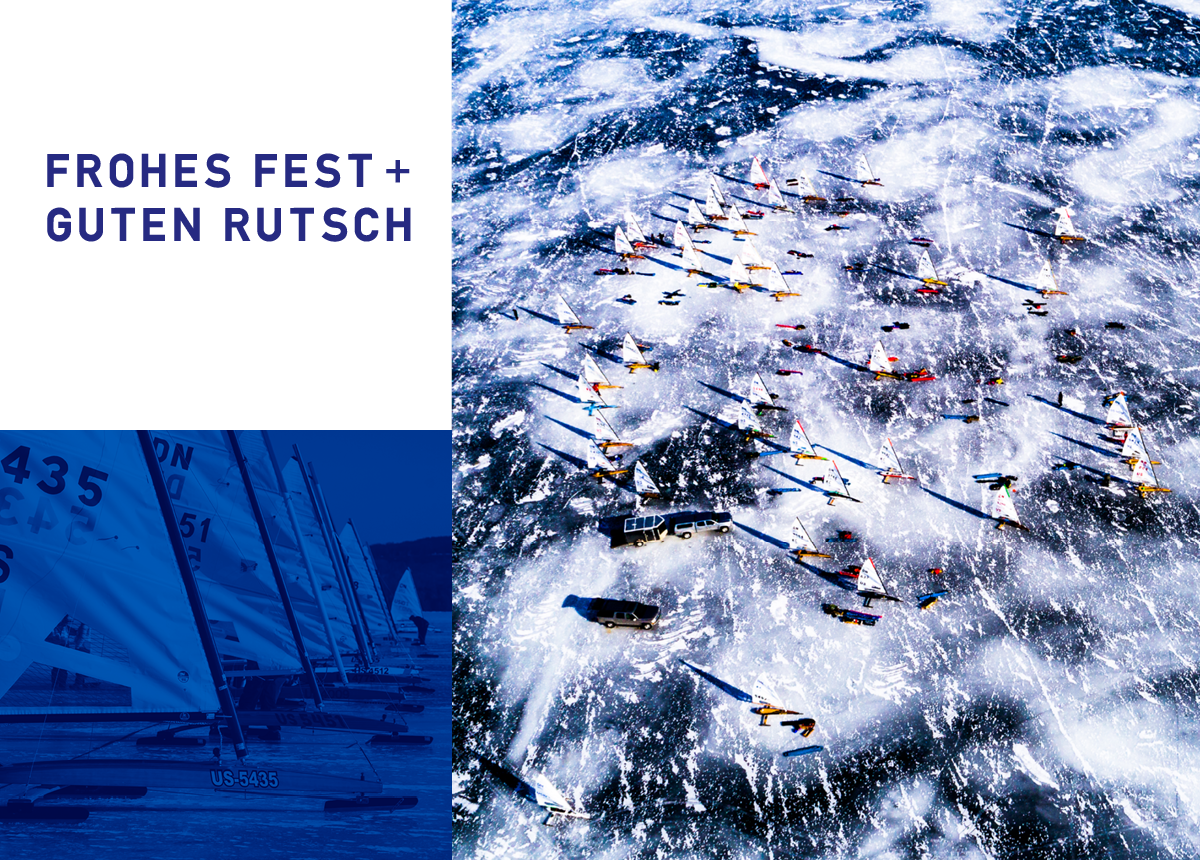
FROHE WEIHNACHTEN
FROHE WEIHNACHTEN
… und ein gutes, neues Jahr!
Ein besonderes und herausforderndes Jahr neigt sich dem Ende zu. Es ist uns ein grosses Anliegen, Ihnen allen für das Vertrauen, dass Sie uns auch 2020 entgegen gebracht haben, zu danken.
Ihnen und Ihrer Familie senden wir die besten Wünsche für gesunde, erholsame und friedvolle Festtage und ein erfülltes und segelreiches 2021, in dem wir hoffentlich etwas zur Normalität zurückkehren und Sie sich Ihrer Segelleidenschaft wieder vermehrt widmen können.
Herzlichst, Ihr North Sails Schweiz Team
Daniel Schroff, Claudia Böhm, Christoph Burger
READ MORE
READ MORE

WATCHING THE AMERICA'S CUP WITH A LOCAL
WATCHING THE AMERICA’S CUP WITH LOCAL SAILMAKER BEN COSTELLO
In the loft and on the water for Day 1 of racing in Auckland
On Day 1 of the PRADA America’s Cup World Series, we tagged along with Ben Costello— a 21-year veteran sailmaker. Ben is the service manager at our loft in Auckland, New Zealand. He’s the guy who keeps the loft floor in check, and he’s also the man to speak with if you want to hop a ride to watch the AC75s up close and live.
Ben is lucky enough to experience the 36th America’s Cup close to home. In this edition, there’ll be no getting up in the middle of the night like most of us around the world! Yesterday, his day began like any other – dropping the kids off at school, then heading into the loft on Archers Road. But, yesterday had a very special ending. After work, Ben and a few of the North Sails New Zealand crew took the tender and ventured out onto the Hauraki Gulf for the first day of racing.
This is Ben’s story.
READ MORE
READ MORE
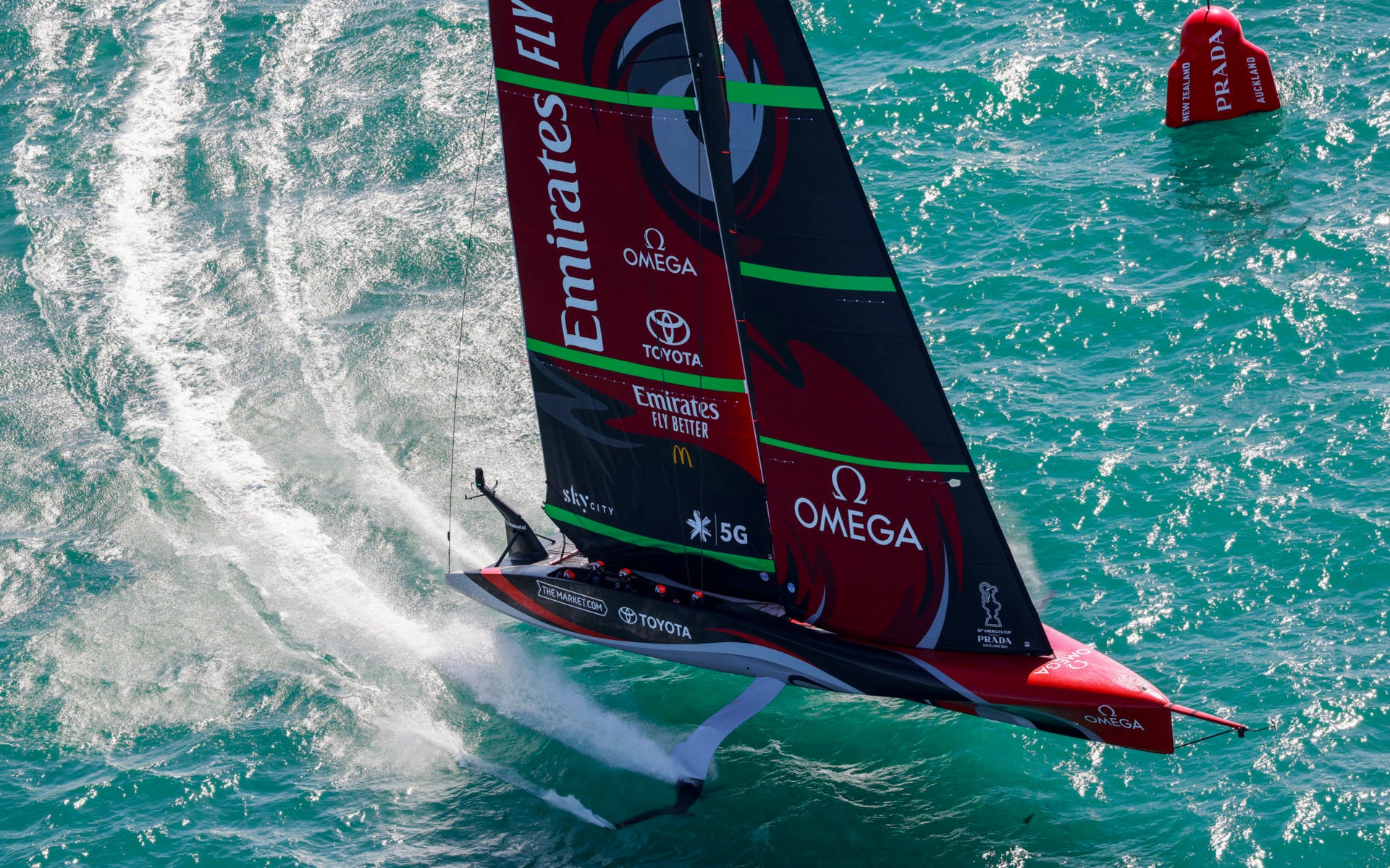
KEN READ JOINS AC36 ALL-STAR LINE UP OF COMMENTATORS
NORTH SAILS PRESIDENT KEN READ JOINS AMERICA’S CUP BROADCAST ALL STAR COMMENTARY LINE UP
Read is a veteran play-by-play expert commentator, having performed the same role in San Francisco and Bermuda.
📸 © COR 36 | Studio Borlenghi
Racing for the 36th America’s Cup with four days of match racing during the PRADA America’s Cup World Series Auckland, New Zealand (Dec 17th- 19th) and the PRADA Christmas Race (Dec 20th).
It will be the only time that all the entrants for the 36th America’s Cup will race against each other and provide a unique opportunity for the teams to assess all their rivals’ strengths and weaknesses. Fans of the America’s Cup all around the world will be able to enjoy coverage via all forms of media on every screen. The primary objective is to make this the most viewed and accessible America’s Cup competition ever.
Set against the picturesque background of the Hauraki Gulf of Auckland, New Zealand, with a new title sponsor, PRADA, and in a dramatic new class of racing yacht, the AC75, the world’s best sailors will race to win the oldest trophy in international sport.
Each AC75 is equipped with ten cameras supplemented by chase boat, helicopter, and drone cameras. Coverage will include the world feed with commentary from Ken Read & Stephen McIvor together with Olympic gold medallists Shirley Robertson and Nathan Outteridge. In addition to the world feed, there will be two dedicated yacht channels and a data feed offered with expert sailing commentary.
Live, highlights and news coverage will be generally available free-to-air in English on www.americascup.com and all the usual official 36th America’s Cup social channels.
YouTube Facebook Instagram Twitter
To ensure both the most accessible and most complete live and highlights coverage from broadcasters covering 195 territories, the 36th America’s Cup is delighted to announce a further range of partnerships with free-to-air and pay networks. View the full viewing details on americascup.com
MEET THE AC36 COMMENTATING TEAM
Ken re-joins the AC36 host broadcast commentary team, having performed the same role in San Francisco and Bermuda. Widely respected, Ken is an America’s Cup competitor, Round-the-world skipper, twice-named American Yachtsman of the year, maxi-yacht record holder, and has won 50 World, North American, and national championships in a variety of cases, with ten of those being World Championship titles. Ken will work alongside Stephen based from the International Broadcast Center (IBC).
Stephen will lead the play-by-play Race call ashore. An experienced sportscaster, he has a wide variety of live sports credits, and will lead the AC36 commentary team for host broadcast, based from the IBC.
Shirley is a double Olympic gold medallist, making it into the history books by becoming the first British woman to win two Olympic gold medals at consecutive games. Named female World sailor of the Year in 2000, appointed an MBC in 2000 and OBE in 2005. She was the regular presenter of CNN Mainsail, which ran for a decade and a half. She will contribute as on-water live commentator during the live race coverage, and assist with other production roles, such as news and feature production.
Nathan helmed Artemis Racing in the 2013 America’s Cup in San Francisco and the 2017 contest in Bermuda. He won gold in the 49er class in the 2012 London Olympics, and silver in Rio, 2016. He brings a rare commentary insight to the complexities of racing high performance, foiling yachts in the America’s Cup.
READ MORE
READ MORE
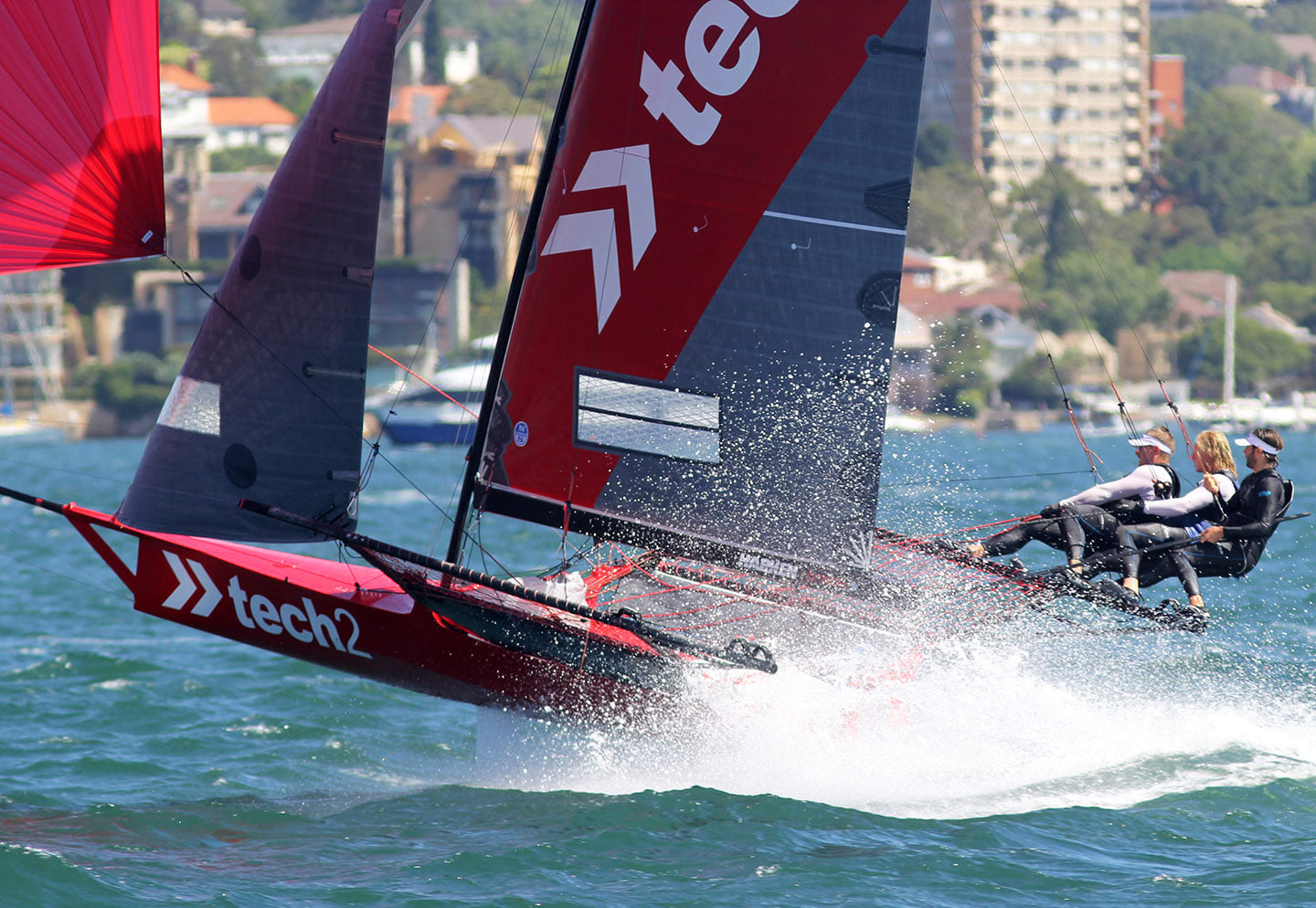
THE BEST OF BOTH WORLDS
THE BEST OF BOTH WORLDS
The Similarities Between Aussie 18s + 100-Footers with Sailor Jack Macartney
📸 Australian 18-Footers League
For Sydney sailor Jack Macartney, it’s all about apparent wind—whether he’s sailing an 18 foot skiff or a 100-footer. “The 100-footer is a giant 18,” he says. And both have very talented fleets, which creates tight racing.
“Australia has almost all of the 100-footers from around the world racing here,” he points out. “They all have their own strengths and weaknesses, so the racing is close. It’s a unique situation having so many supermaxis racing together so frequently. All of the teams are strong and like the 18-footers, the small things make a big difference. Downwind is what they both have most in common.” Because, he repeats, “It’s all about the apparent wind.”
100 footers
The modern 100-footer generates so much horsepower that the sails are flatter and the speeds much higher; “you’re really trying to make the boat hum.” And even with a crew of 20 people, teamwork is crucial. “You might not be hanging off the side, but it’s the same crew dynamic on a 100-footer. You’ve got to have seamless crew work to get through the gear changes and do well.”
There are also differences between the two, of course. On a 100-footer, you can’t steer with your weight or throw in a quick tack or jibe without warning. “Things happen a lot slower and the loads are higher, and you have big, loud winches that handle massive loads. But it’s high-intensity and very close racing.”
📸 Les Voiles de St Barth
Aussie 18s
Jack grew up on Sydney Harbor and started sailing at age 7. His father established the Grand Prix 18 Foot Skiff League seen on television around the world through the 1990s, so Jack and his family traveled all over with the high-performance skiff fleet. “I spent 12 or 13 years following my parents around and growing up with the sailors, so I’ve always had a strong passion for sailing and was immersed in the sport from a young age.
“Growing up on Sydney Harbor, you don’t really get a better opportunity to enjoy sailing than rigging up an 18 on a Sunday and going for a rip around. The 18-Footer class has great people and camaraderie is an important part of it, sharing a beer in the bar afterwards. The class competitors have such a strong mutual respect for one another.”
Jack finished second in the JJ Giltinan in 2013 before turning to bigger boats and the Volvo Ocean Race. When he decided to get back into the 18-Footer class last year, he spoke with sponsor Tech2 and started a program. With only small changes to better fit their crew weight, Jack says he and his team were instantly competitive with the standard North Sails package. “It’s been a great experience and the North team in Sydney. They have always very helpful. If I need anything done, it’s done quickly and done right.”
Tech2 won the 2019 Australian Nationals and club championships, and now Jack and his crew of Charlie Wyatt and Lewis Brake are full speed ahead- with multiple back-to-back wins in the 2020 class club championships over the last month.
“Our boat is going fast, our crew work is at a pretty high level, plus our sail development with North Sails is going very well!”
📸 Australian 18-Footers League
Unbeatable North Sails Technology
Jack hasn’t always sailed with North inventories, but he’s really impressed with 3Di. “3Di is special because of the consistency of shape over a long period of time. It’s robust, stiff, and the sail shapes and longevity of the material is fantastic. In the last two years, I’ve done a lot of racing on the 100-footer Scallywag, including Sydney Hobart, the Caribbean circuit, the Transatlantic, the Fastnet, and the Sydney Hobart again. We are still using the same sails and they are looking pretty good, considering the wear and tear 100’s generate with the extreme loads.”
In the 18’s, Jack says North Sails has created a platform that is hard to beat. “Michael Coxon and his experience set the tone. If you want to campaign at a high level, North Sails gives you a platform to do so. You don’t have to develop your rigs and profiles from scratch, instead you get straight on the pace and have the ability to compete at the front. North Sails has so much history and knowledge in the class, combined with excellent technology. I was able to design our setup to our specifications within the already-fast one design package available.”
📸 Les Voiles de St Barth
Preparation + Fitness
“From what I’ve learned,” Jack says, “you can never prepare enough to sail a 100-footer.” Countless hours are spent developing the boat, the program and getting the crew up to a high level. “Next is understanding the boat and what it needs to perform at 100%.” Though the hours may be a little less, preparation is also key to his 18-Footer program.
Both teams I sail with are driven when it comes to fitness—and team communication. “When we are not on the boat sailing together or in the gym, we’ve got our WhatsApp chat going. We’re always thinking and talking about sailing. It’s important to surround yourself with people you trust, you can get flicked off the boat in a second if something isn’t done properly. I’m lucky to have great teammates.”
📸 Australian 18-Footers League
READ MORE
READ MORE
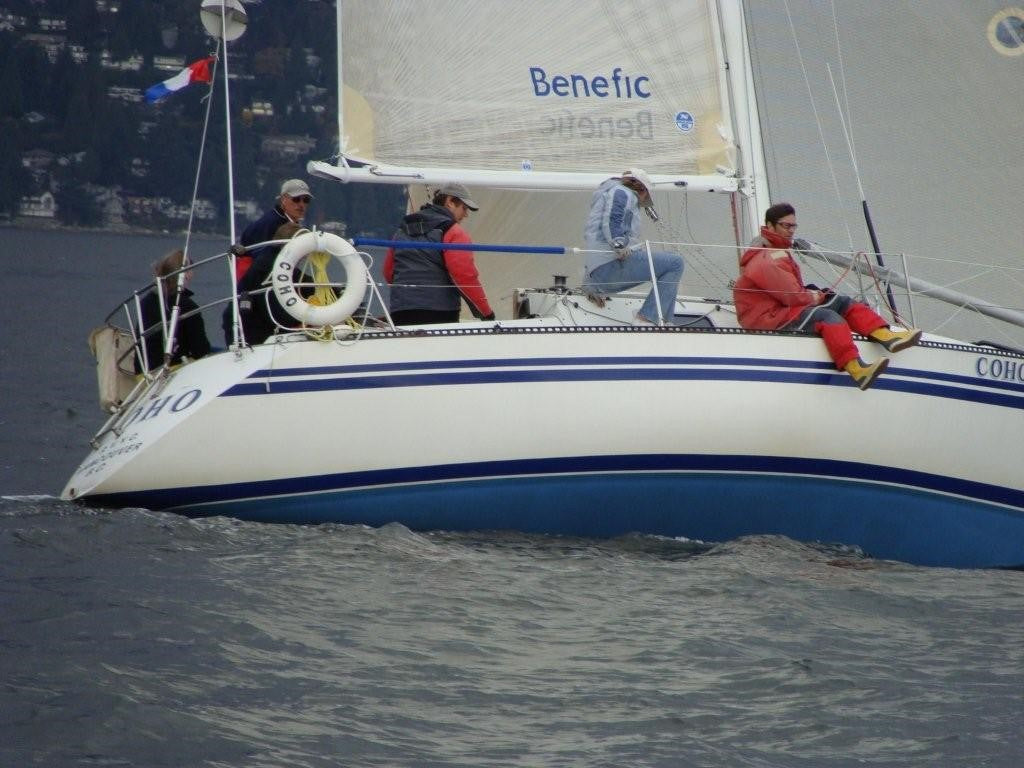
CUSTOMER SPOTLIGHT: COHO
CUSTOMER SPOTLIGHT: COHO
Local Legend With A Long Sailing History In Vancouver
Grant Brandlmayer shares the history of locally known Spencer 34 Coho, still raced out of Royal Vancouver Yacht Club going on 35 years.
What made you decide to build Coho?
The decision was made to build the Spencer 34 Coho to race and feature the Spencer 34 in local races; while at the same time enjoying sailing this modern IOR boat.
Why did you choose to build with Spencer Boats?
In fact Spencer Boats Ltd. was a family boat building company that was formed in 1954 by my parents, an uncle of mine and a good friend of my parents. The company started by building plywood and glass runabouts as finished, as well as selling them as frame kits that many people then built at home. In 1958 they built the first moulded fibreglass sailboat from a female mould. It was 28ft. in length with a wooden deck. A total of 12 were built.
Spencer 34, first manufactured in 1978. The Spencer 34 was designed by the well-known Vancouver sailor, Vladimir Plavsic. The first Spencer 34 Spearhead was built for David Spears for the North American 3/4 Tons Worlds held in Victoria in 1978. The Spencer 34 Coho was then built for the Brandlmayr family in 1979 with sails by North Sails. At this time the sails were built under the guidance of David Miller. In addition I recall that Rob Pallard was working for North Sails in Vancouver and was very involved in the build of the first set of sails for Coho. In fact he sailed on Coho during the first Juan de Fuca race that we did in 1980.
Tell us a bit about the design process of building Coho.
As noted above the Spencer 34 Coho was designed by Vladimir Plavsic. He developed the overall hull form, rig dimensions and all aspects of the boat to meet the IOR Rule of that time to be able to race in the ¾ Ton division. Spencer Boats Ltd, as a very experienced builder of FRP sailboats, then prepared the production design including the lofting of the hull, deck, keel and rudder to allow construction.
What challenges did you face while building your dream boat?
No specific challenges that I recall. The construction procedures and methods, which had been developed by Spencer Boats Ltd. during the building of the earlier semi production models, had developed into a rather mature process.
The original sails are North Sails, who at North did you work with to design and build your sails?
As mentioned above it was a pleasure to work with Dave Miller who designed and built the sails for Coho. In addition, I had the pleasure to work with Rob Pallard who was with North Sails at that time in Vancouver.
What were your favorite races when you owned Coho?
Starting in 1980 and until Leslie (my wife) and I sold Coho (Spencer 34) to Sarah and James McDonald, we entered Coho in many races and many different types of races all of which we very much enjoyed. To name a few, we did the VARC, both regatta and distance series for every year of the 35 years that we raced Coho. The Wednesday night race series at RVYC, which we did almost every Wednesday night race for the same 35 years on Coho. We also did the Whidbey Island Race Week for 10 years in a row starting in 1995. We enjoyed all the races plus the delivery trips with family and friends.
Any interesting facts you would like to share about Coho?
I think that any of those are generally covered in the combination of the other sections.
What are your favorite cruising destinations?
We enjoy sailing so the delivery rather than the destination has always been our favourite part.
You sold Coho to James and Sarah McDonald, what was it that prompted you to purchase a new boat, what is the new boat and how are you enjoying your new boat?
The size of our family had been growing with the addition of our wonderful grandchildren and having a slightly larger sail boat with three cabins but still a high performance cruising boat that we could race had become more inviting. That said we still very much enjoyed and appreciated the all round pleasure we had both racing and cruising Coho. It was a tough but wonderful choice/decision to make.
When our close friends Dan and Carolyn McGreer asked if we would consider being boat partners with them in their Beneteau 36.7, it seemed to be the best of both worlds. We had sailed as two families with Dan and Carolyn and their three beautiful girls for over 25 years; not to mention Dan being an integral part of our racing for over 25 years. For several years we had been racing Coho in VARC and RCYC racing in the spring, summer and fall and the Beneteau during the winter months in Point Roberts where the McGreers were keeping the Beneteau. So, the decision was made to combine forces and we put Coho up for sale.
When Sarah and James McDonald showed an interest in Coho this just seemed like all things were falling into place as we could not think of two more wonderful people to enjoy a boat that sails so very nicely and was well built. We are very happy that Coho found a new home with people that continue to enjoy racing and cruising the boat.
READ MORE
READ MORE
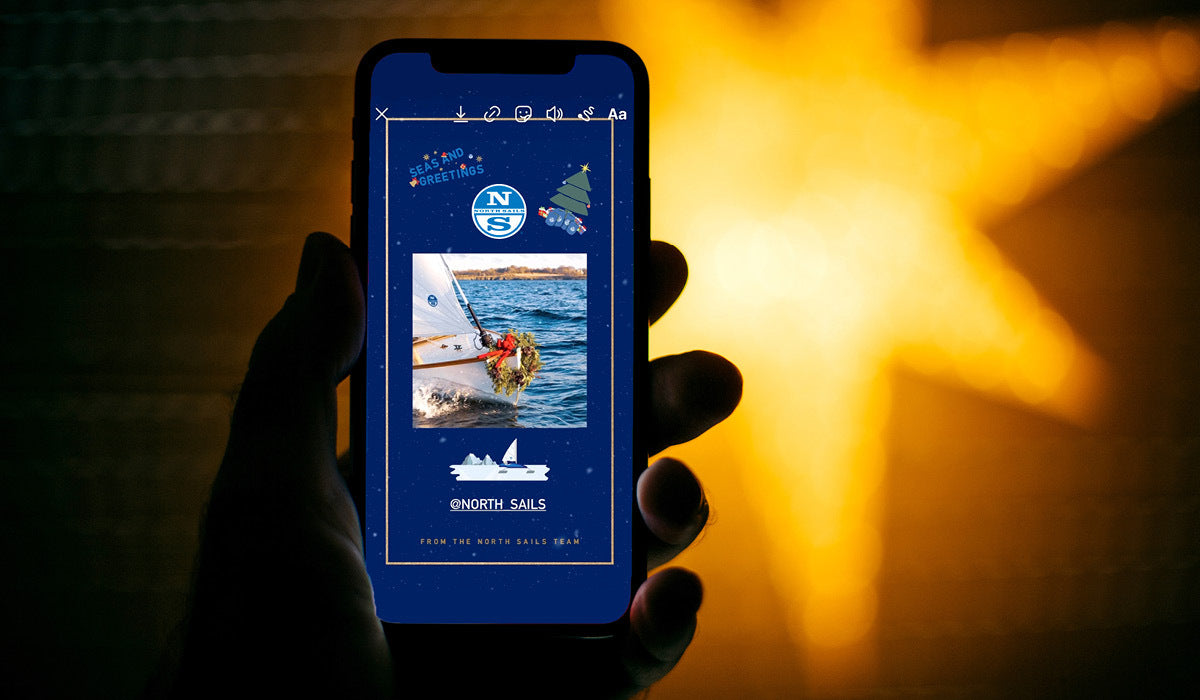
NORTH SAILS HOLIDAY GIFS
NORTH SAILS HOLIDAY GIFS
Add Some Holiday Flare to your Instagram Stories + Reels
Remember what it was like when GIFs didn’t exist? Over the last few years, they’ve become our favorite social addition so this year we’ve added some fun options for you to enhance your next Instagram story or reel. Want to add some spice to your next post? Express your holiday spirit with a few new special effects made by your favorite sailmaker. Not sure where to start? Open Instagram, select your image, and then follow the video instructions below to add your favorite holiday GIF to any post.
Open Instagram. Take a photo -or- select a photo or video to post.
Scroll up and select “GIF”.
Search: “North Sails” to view our collection of GIFs.
Select, click and drag to place anywhere you want in your photo or reel.
TIP: You can make the GIF larger by using two fingers to zoom in, or out.
You can select multiple GIFs to include in each post. Just repeat steps 1-4 and add as many as you want!
READ MORE
READ MORE

I HAD SOME TROUBLE WITH MY BOAT
I HAD SOME TROUBLE WITH MY BOAT
PRB Skipper Kévin Escoffier Checked In from Onboard Yes We Cam!
This past weekend Kévin Escoffier jumped into the sea once again, he gave Jean Le Cam a heartfelt farewell and joined a French Navy vessel to commence his journey home.
While still onboard Yes We Cam!, Kévin shared how he’s doing and gave us an insight into why he chose to work with North Sails, his sailmaker of choice, on our new technical clothing, and his thoughts on the range.
Fair winds Kevin – we can’t wait for the debrief. You embody our motto – Go Beyond – and are an example of what can be achieved with 101% performance.
The new North Sails Performance Clothing range launches in Spring 2021. Sign up below to be on the list for early access.
SIGN ME UP!
READ MORE
READ MORE
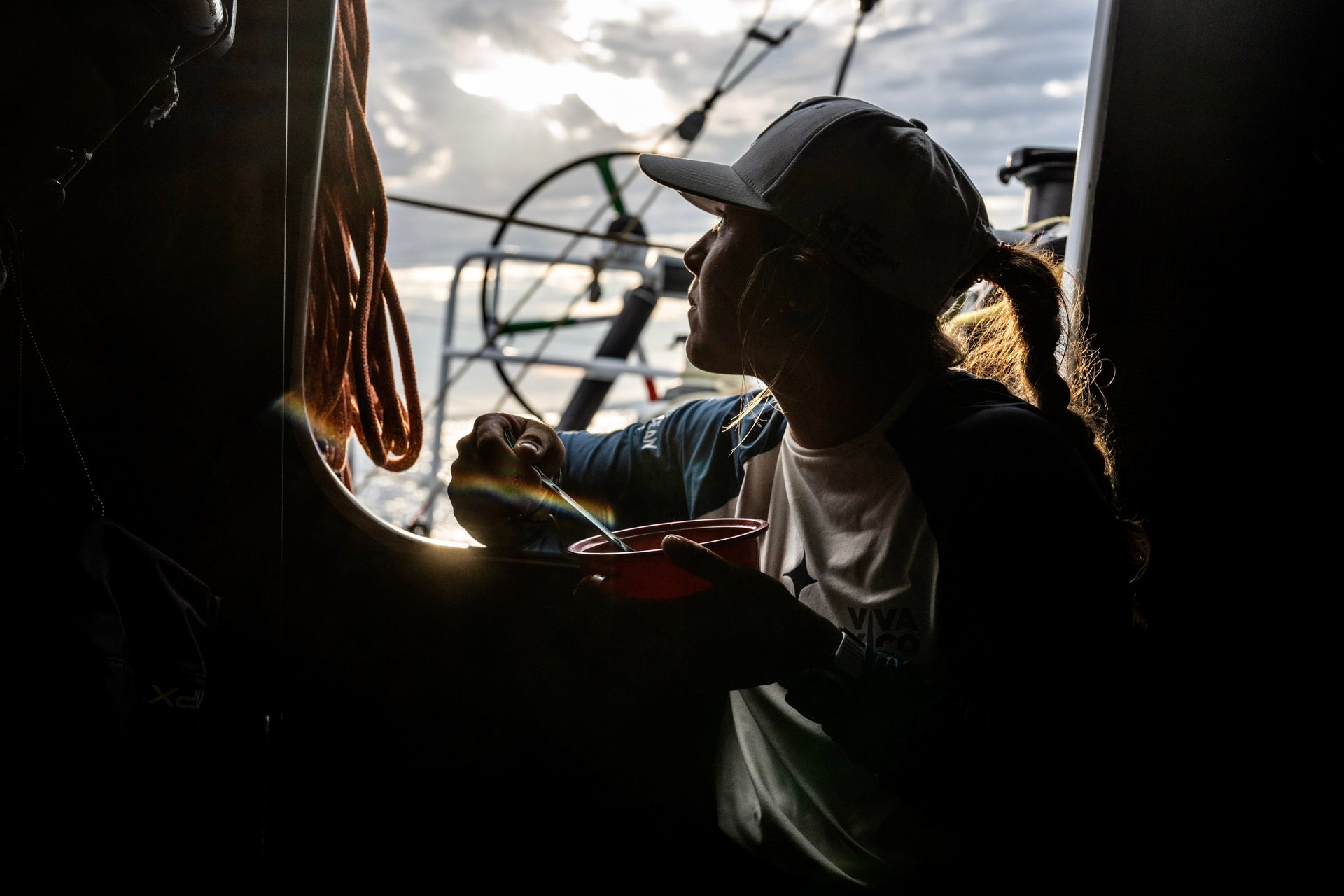
PROVISIONING FOR DISTANCE RACING
Here’s what Sarah O’Kane from Shorebase, a logistics company, says is important to properly provisioning for your next offshore adventure.
READ MORE
READ MORE
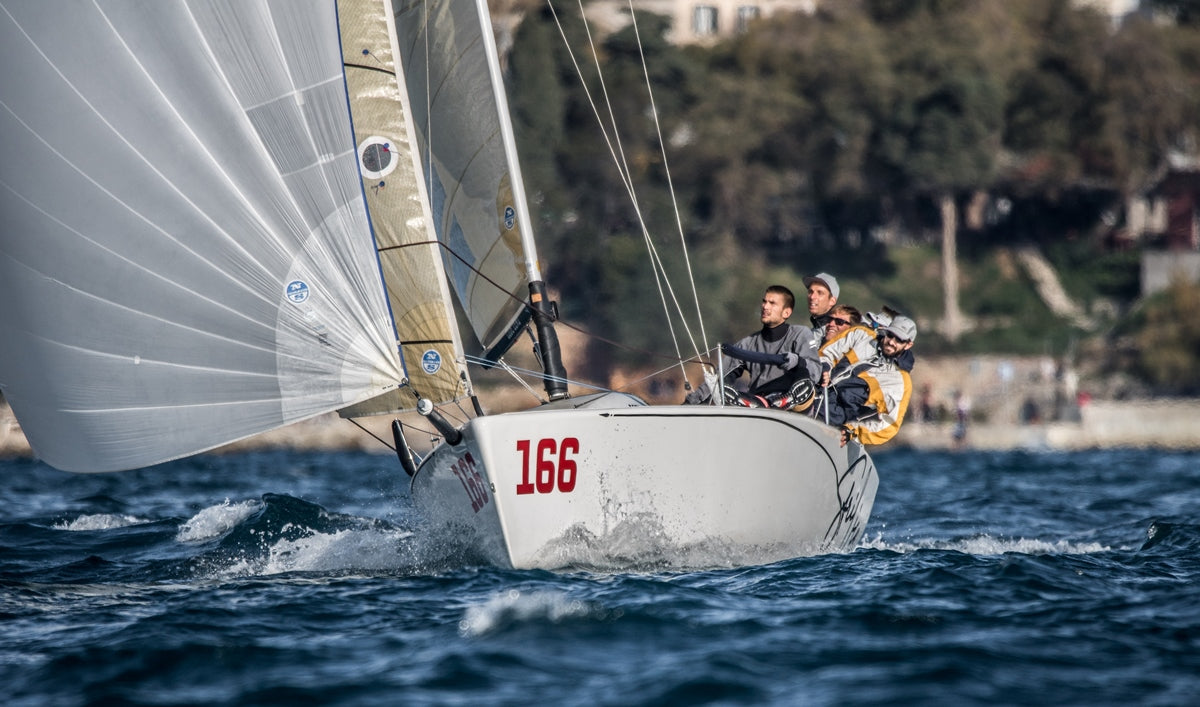
FORMIRANA MELGES 24 CRO FLOTA
Formirana Melges 24 CRO flota
Foto: regate.com.hr
Melges kao jedriličarski brand krenuo je 1945. godine, a od tada su iz njihovih hala izašle mnoge sportske jedrilice, a neki modeli su se etablirali u svijetu jedrenja kao globalne monotip klase. Jedna od njih je i Melges 24, malena sportska jedrilica u kojoj može jedriti 4-5 jedriličara u tehničkim regatama oko oznaka, dok se s njima kvalitetno može jedriti i u dvoje. Jedan primjer, istina malo ekstreman, je sudjelovanje Melgesa 24 - Blue Label na ovogodišnjem Susku.
Jedrilice ove klase na Jadranu se mogu vidjeti već neko vrijeme. Prva pod Hrvatskom zastavom bila je u Rijeci, a kormilarka joj je bila Niki Keser. Par godina nastupala je na međunarodnim regatama klase koje su bile organizirane u Italiji, poput Garde i San Rema.
U međuvremenu nekoliko jedrilica je stiglo i u Sloveniju pa su mogli zajedno raditi treninge i regate, a povremeno bi nastupali i na regatama krstaša poput Mrduje u nas i Barcolane u Italiji. Nakon par godina ova dvadesetčetvorka odlazi u Dansku, a obitelj Keser nabavlja Melges 32.
Nakon DSK u Hrvatsku stiže spomenuti Blue Label, nastupa uglavnom na Kvarnerskim regatama i sve do 2017. je jedini Melges u nas. Te godine u Dubrovnik stiže čuveni Lero.
Lera ne treba posebno predstavljati jer je to jedrilica s kojom Ivo Kvestić nastupa na svim važnijim Dalmatinskim regatama. Redovito pobjeđuje kako u svojim skupinama, nerijetko i na cijelim regatama, a možda najzvućniji trofej u posljednje vrijeme je i pobjeda na Melges 24 monotip regati koja se ove godine jedrila u Trstu kao uvod u Barcolanu!
Nastavak priče je u Splitu gdje se u kratkom razdoblju pojavljuju Cezibordo i The Pimp. Cezibordo je doveo Srđan Ninčević i parkirao (jer su Melgesi uglavnom na trailerima kad nisu na regati) kod Labuda, dok je The Pimp na sjevernu stranu Marjana doveo Roko Štambuk.
Nakon toga kreće lavina u Splitu u kojem se trenutno nalazi većina Hrvatske flote.
Kroz godinu bi imali najmanje četiri regate klase koje bi se bodovale za Kup i jedna bi bila Prvenstvo Hrvatske. Tako da bi sve to bilo službeno zadovoljeno krećemo s akcijama oko formiranja klase i zadovoljavanja svih formalnih zahtjeva. Za sada smo se dogovorili da će JK Mornar biti domaćin regati početkom studenog, JK Labud bi organizirao regatu zadnji vikend listopada i ostale bi bile ili u svibnju ili u kolovozu.
Plan nam je da ih naporavimo tako u serijama i da su ti datumi usklađeni s datumima Europskog Kupa za klasu Melges 24, tako da možemo službeno pozivati i posade iz inozemstva tako da im možemo ponuditi da ostave brodove kod nas između dvije regate. Tako da se mogu vratiti doma i kasnije na drugi event u skorom periodu.
Također planiramo i službene treninge u veljači za koje već imamo neslužbeno najavljeno nekoliko brodova iz vani, jedriličara iz Mađarske i Italije i jednog Nijemca, koji bi došli u slučaju da se ova situacija oko nas normalizira.
Za 2020. smo izvukli maksimum koji smo mogli. Brodovi se množe skoro na tjednoj bazi. Evo neslužbeno sam čuo da je još jedan kaparan ovih dana, također čujem da su u tijeku pregovori da jedan stigne u Pulu. U Splitu imaju još dva ozbiljno zainteresirana buduća vlasnika...
Filip Jurišić, Melges 24 - Strilica
U sklopu organiziranja klase u planu je i angažiranje službenog premjerača koji bi vodio računa da sve bude po pravilima i da naša flota može regularno i bez stresa putovati i na regate u inozemstvu.
Foto: regate.com.hr
O tome koliko dobro je Melges 24 prihvaćen u Splitu govori i podatak da su neke jedrilice kupljene zajedničkim ulogom po nekoliko jedriličara i u floti su trenutno nalaze i imena vrlo iskusnih jedriličara poput Tonija Bulaje, Borisa Bakotića, Tonka Kuzmanića, Matije Longina, Jakova Šokote, a kalkulira se i s još nekim imenima olimpijskih jedriličara...
Stvarno sam oduševljen ovom klasom. Ono što mi je najdraže kod nje je to što i nama starijim jedriličarima pruža šansu da konkurentno jedrimo protiv aktualnih olimpijaca, svjetskih i europskih prvaka, što inače više ne bi imali prilike u malim klasama. Jedrilica je stvarno fenomenalnih mogućnosti, a o adrenalinu koji se razvije kad se jedri niz vjetar s genakerom ne treba posebno trošiti riječi! U svakom slučaju mislim da je ovo izvrsna stvar!
Toni Bulaja, Melges 24 - Obi One
Kao što se iznad moglo pročitati, trenutno se bazama klase mogu smatrati Pula, Ičići, Zadar, Split i Dubrovnik, a s obzirom na očite prednosti malobrojne posade i toga što nije potreban vez, te relativno male cijene jedrilice u dosta dobrom stanju, za očekivati je da se priča brzo proširi i u drugim gradovima.
A ako još uvijek niste sigurni o čemu pričam povirite fotogaleriju snimljenu na jednom od treninga u Splitu ili doživite užitak koji se pokušao dočarati u ovom videu.
READ MORE
READ MORE
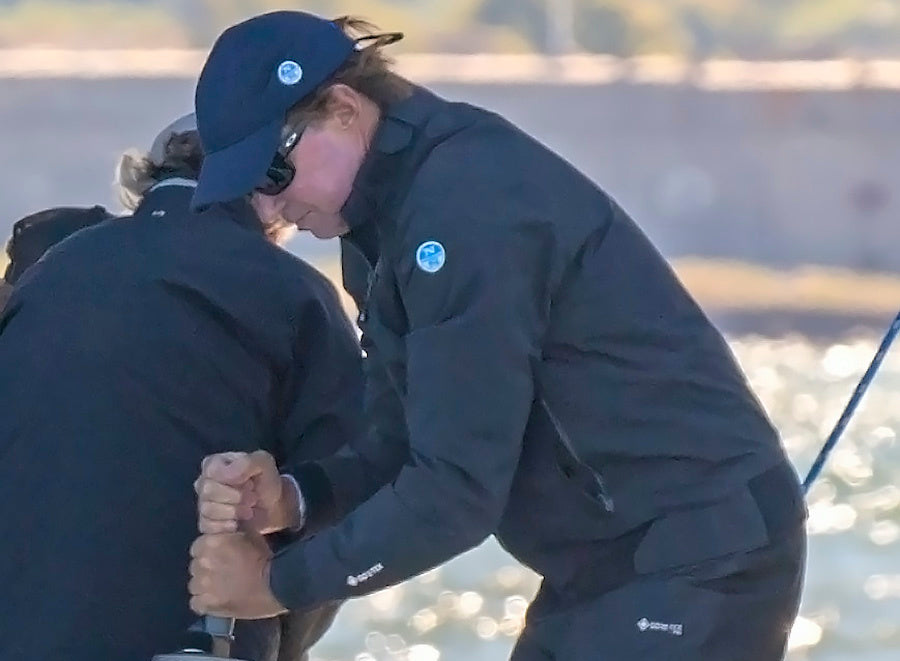
BUILD, TEST, RINSE, AND REPEAT
OFFSHORE + INSHORE GEAR DISPATCHED TO THE RACETRACKS
The Launch of North Sails Performance Collection
Last week we announced the launch of our new Performance range of foul weather gear that will be available in Spring 2021. Each week, until launch, we’ll unpack how our team conceived the range, the new “must-haves” for your kit bag, and how we’ve made sure our foulies uphold the expectations you’d have for gear from the world’s leading sailmaker.
Our gear development team was diligent in ensuring our gear adheres to Lowell North’s scientific method; the design, build, and testing process used for all North Sail products.
Our design work doesn’t end when the first prototypes ship out of the factory. This is just the beginning. Every piece of North Sails kit is the result of the same extensive process; research, innovate, design, build, test… rinse, and repeat. Over, and over, and over again. Our foul weather gear has already been tested in the most extreme conditions.
The Offshore and Inshore gear has been dispatched to the racetracks of the world in the hands of North’s experts and sail designers – a team of the most experienced sailors in the world, who cover hundreds of sea miles aboard many different types of vessels…you couldn’t dream up a better kit testing team.
PRB skipper and Vendée Globe 2020 competitor Kévin Escoffier, also joined our testing team. One of the most experienced and successful ocean racing sailors of his generation, Escoffier has emerged from a backroom role running Team Banque Populaire’s design office to win a Jules Verne Trophy and the last Volvo Ocean Race.
Escoffier did a lot of sea miles before he crossed the Vendée Globe 2020 start line as skipper of November 8 2020 – and he did them all in North kit. He achieved a second-place finish in the IMOCA class of the Rolex Fastnet Race and the Transat Jacques Vabre. It’s been the perfect testing environment for the Ocean range and Escoffier’s thoughtful, analytical feedback was essential to the refinement of the final designs. Escoffier decided that the kit was so good that he took it to race in and, whilst his Vendée 2020 journey hasn’t ended as any of us would have wished, we’re still looking forward to a valuable debrief when he returns to shore – design, build, test…..rinse and repeat.
The Offshore prototypes also went south to Sydney for the start of one of the world’s classic bluewater races, Rolex Sydney Hobart Yacht Race. In 2019 North Sails designer and trimmer Dick Parker was wearing our kit when he secured his first Hobart win. He had plenty of praise for the kit and lots more ideas – as did everyone else. Research, innovate, design, build, test… rinse, and repeat.
LEARN MORE JOIN THE WAITLIST
Catch up with the latest from a key member of the North Sails Performance Testing Team, Kévin Escoffier, aboard Yes We Cam!
READ MORE
READ MORE
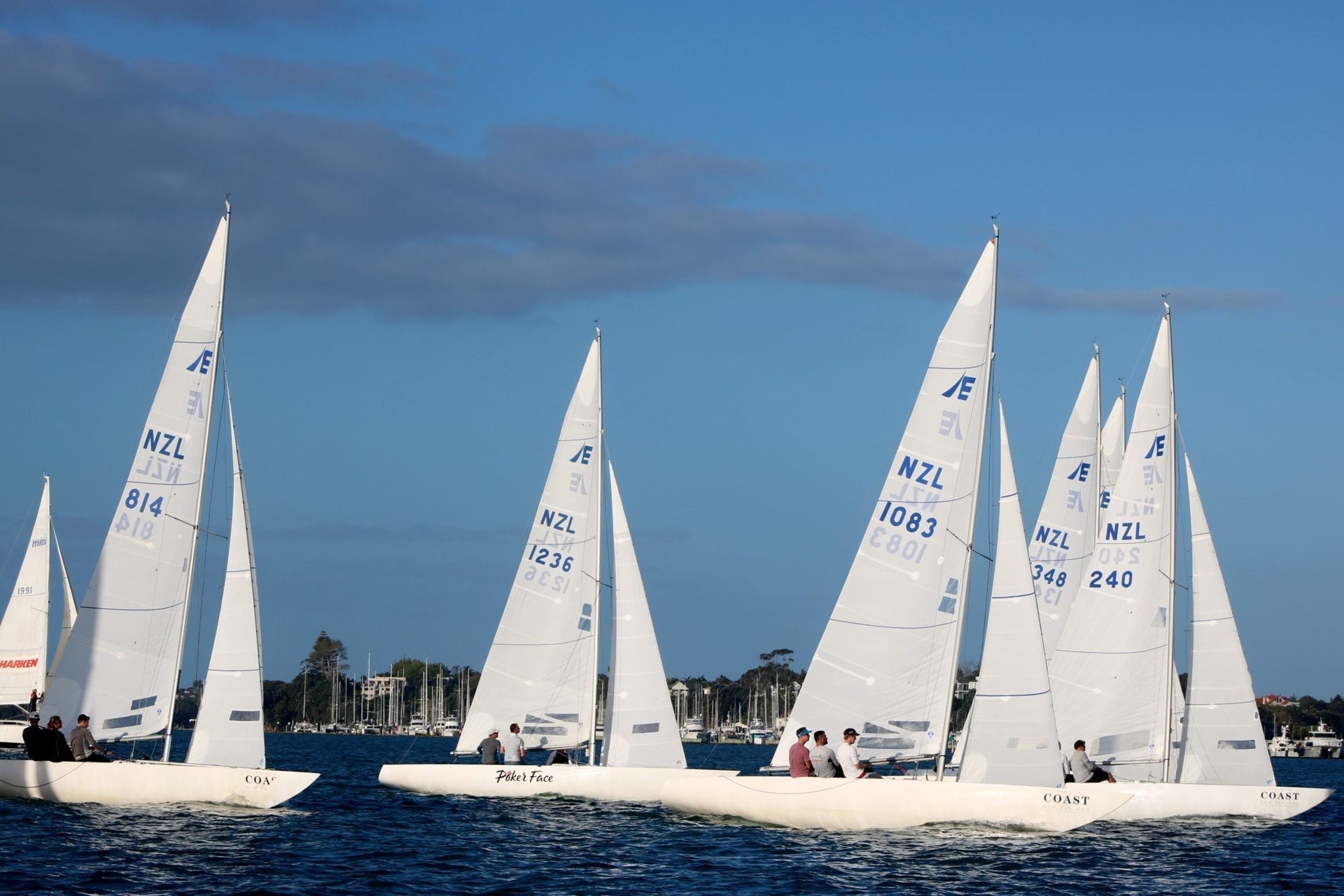
STARTING THE ONE DESIGN SEASON WITH SUCCESS
STARTING THE ONE DESIGN SEASON WITH SUCCESS
Etchells and Young 88 National Titles Claimed by North Clients
📸 Andrew Delves
North Sails One Design clients have started the season off with a bang after winning both the Etchells and Young 88 New Zealand Nationals last month.
Etchells Nationals
Hosted by the Royal New Zealand Yacht Squadron in Auckland, North-powered teams had a great event in windy conditions, finishing with a clean sweep on the podium. Defending champion and Sales Manager of North Sails New Zealand, Andrew Wills (Willzy), helmed the winning boat Cruel Jane with One Design Manager, Derek Scott, on the bow. “It had been a long time since Derek and I sailed together,’’ Willzy explains, “but it was an absolute pleasure. We have been friends since we were teenagers and have worked together for about 15 years.’’ Sailing with them as the mainsheet and kite trimmer was Anatole Masfen who has also been sailing with Willzy for many years. As well as having a good crew dynamic, the three sailors are experienced Etchells sailors but only sailed the boat twice this year in the lead up to the Nationals, which Willzy said made him feel a little nervous as some of the other teams were well prepared and were sailing fast. “The standard and depth of the New Zealand fleet have really improved as of late, which is great to see,’’ Willzy explains. “Alongside Fifteen + and Alliance who finished second and fourth overall respectively, we chose two newly designed headsails (MAL & GT) for the event. They were fast out of the box which meant we had a great first day, winning three of the four races which set us up well for the last day which brought a little more breeze, but nice flat water. Racing was tight with everyone keeping a close eye on the competition and their points. Special mention to Jannet Airey - this was her first nationals as Race Officer and the courses were faultless.’’
Harken Young 88 Nationals
After a postponed Harken Young 88 Nationals, the regatta successfully went ahead at the end of November with 16 boats on the line raring to go. Racing between St Heliers and Rangitoto, congratulations to North powered team Raging Hormones who took home the National title after eight races. Sailing as tactician with owner Zane Gifford helming, Andrew Wills raced with fellow North expert Matt Kelway on the bow: “It was awesome to see so many teams out for the Nationals as it has been such a disruptive year for sailing in general,’’ says Kelway. “The racecourse was tricky with shifty conditions and a decent breeze on the final day. The key to the event this year was consistency; you had to be quick but also patient with the wind shifts and just find little moments to fight your way back in each race. The new sails complimented the existing inventory and were able to change modes really well through the range. I hope to see the class numbers up for the remaining Sprint Series and of course the Nationals next year.’’ “We had a new 3Di genoa and Radian mainsail for this event, both of which seemed fast from the get-go,’’ Willzy comments. “The fleet size is increasing again which was good to see. Our strong point was consistency and being able to dig out of bad situations. I also felt very confident with our boat handling, crew work, and physicality which really helped, especially on the last day when the breeze built. The wind was oscillating so it was key to stay in phase, both upwind and downwind. Being able to foot off, fast, to the next header seemed really important. It was great to do well against such strong competition and equally, to see so many of our customers sailing fast and achieving strong results. I know many of them are very passionate about sailing their boats and have put lots of time in, so seeing them being rewarded for their efforts was brilliant.’’ Sailing onboard Nick Gillies’ Waka Huia, One Design expert Matt Steven comments on the level of competition within the event: “This regatta was probably the most competitive in recent history for the 88's. The 16 teams brought very mixed results, so consistency was the winning formula. On Waka Huia with a full North inventory, we put the boat in too many tight spots on the first day, and as a result, did multiple penalty turns. On day two, we got the boat sailing in a really nice groove and placed really well, clawing ourselves back up the leaderboard. Raging Hormones were a class act and well-deserved winners." To discuss inventory options for either the Etchells or Young 88, visit the class page and talk to a local expert.
Etchells Young 88
READ MORE
READ MORE

BIANCA COOK’S NEW CHALLENGE LOOKS DIFFERENT THAN EXPECTED
BIANCA COOK’S NEW CHALLENGE LOOKS DIFFERENT THAN EXPECTED
Aspirations Ahead to The Ocean Race in 2022
📸 Georgia Schofield / NZ Ocean Racing
North Sails expert and Auckland native Bianca Cook has logged plenty of ocean miles as part of delivery crews and on the last Volvo Ocean Race with Turn the Tide on Plastic. Now she’s taken on a new challenge: putting together a New Zealand-flagged entry for the 2022 Ocean Race. In November, she and partners Tony Rae and Daryl Wislang launched their V065 for the first time, just in time to win the Coastal Classic—though Cook says a boat without logos wasn’t at all what she envisioned.
“We covered up all the old Turn the Tide> branding with black,” she explains. “It looked very plain and simple.” But logos weren’t necessary to achieve their short-term goals: giving sailors and an onboard reporter the chance to race 120 miles from Auckland to the finish line in Russell, and gain some much-needed visibility. If the boat stayed in the shed, “nobody would know what was happening. We thought, ‘Let’s put the boat in the water and let’s do this.’ So that’s what we did.”
Winning the race was a nice bonus—even though that didn’t look anything like what Cook expected either. Very light conditions meant they didn’t finish until dawn the following day. “It’s actually quite funny, because it’s the biggest boat I’ve ever done the Coastal Classic on, and it’s the longest it’s ever taken me to get there.“
But “a win’s a win,” she says, adding how grateful she was to North Sails and the rest of the marine industry in Auckland for their enthusiastic support. “Without that, we’d still be in the shed.”
: Daryl Wislang, Ryan Houston, Gemma Jones, Bianca Cook, Tony Rae. : Logan Andresen, Aaron Reynolds-Lovegrove, Paige Cook, Thomas Rutter, Bex Gmuer Hornel l📸 Georgia Schofield / NZ Ocean Racing
Raised on stories of “the Blakey days”
Bianca was born the same year Steinlager 2 won the Whitbread Round the World Race, and she grew up in an Auckland shipyard listening to stories about Peter Blake and “that romance of sailing around the world. The whole country got behind it, and knew what was going on.”
She learned to sail with her family on classic boats and then campaigned in Women’s Match Racing until that discipline was eliminated from the Olympics. In 2012, she was just about to fly to Antigua to help deliver the J Class Endeavour to Portugal when the Volvo Ocean Race (VOR) fleet sailed into Auckland. “That’s when my real passion for it grew.”
Working on Superyachts around the world introduced Cook to a lot of VOR sailors. “I was always asking how I could get involved,” she says. “When they brought out the rule to have more females on board, I sent my CV to anyone that would listen.” Nothing quite clicked, though—until a month before the start, when Dee Caffari called.
“I remember seeing Dee for the first time, I was a little bit petrified. As soon as I arrived, the first thing she said to me was, ‘okay, so we’re going to announce that you’re joining the team on Friday, don’t screw it up.’” Until that moment, Cook hadn’t been quite sure what was expected of her. “But when she said that I was like, ‘Oh yeah, I’m actually on the team. Okay.’”
Sailing around the world with Dee was incredible, Cook says. “You can be in a situation where you’re just over it or tired or hungry, not too much left in the tank. And she always has something to say that will give you that little bit of motivation to keep going.” But sailing into Auckland on a boat that represented “the United Nations” didn’t grab her fellow New Zealanders the same way that having their own boat to root for had in previous races. “As a country, we haven’t had a team to really get excited about and really invest Kiwi pride since 2012, so New Zealand’s love affair with the race has kind of gone away.”
For the rest of the race, Cook began to imagine sailing into Auckland again as part of a New Zealand-flagged crew. “I got talking to Tony Rae, and he’d been trying to get a New Zealand team in the race for the last two cycles. When I heard that, I thought, ‘Oh, okay, well then why don’t we actually try and make this happen?’”
Sailmaking beckons
After the VOR, a new opportunity appeared in Auckland: joining North Sails as a salesman. “I jumped at that,” she says. Though Cook didn’t know much about sailmaking, she soon recognized the significant overlaps between building 3Di sails and modern boatbuilding. “Building sails, you lay carbon down in a certain way over a mold—exactly the same as you do in boatbuilding.”
Cook continues to be impressed by North Sails emphasis on constant improvement. “It’s fantastic the way that the designers are always trying to make sails faster. They’ve got the technology to just keep pushing.”
She also appreciates the way America’s Cup technology is starting to trickle down to Auckland fleets like the Young 88s. “We don’t have double-skin mainsails yet, but you never know! The level of design work that goes into grand prix sails is exactly the same for what you’ll be selling to your local guy who’s just going cruising around the local area. It’s fantastic to see that amount of time and effort going into any job.”
📸 Georgia Schofield / NZ Ocean Racing
The Ocean Race journey begins
Cook and her partners bought the old Turn the Tide on Plastic in 2019. It was a big commitment, but as Cook puts it, ”We’ve got to have a boat, otherwise we’re not in it. And so we bit the bullet and got it down here to New Zealand.” The goal was to get the boat in the water and “get as many young people on the boat as we could.” 2020 had other plans, though. “We were actually due to launch the day that we went into a nationwide lockdown.” Instead the boat stayed in a shed until the following November. Looking back, “I’m not really sure if was the smartest thing to do,” confesses Cook.
But her enthusiasm is infectious, and she’s not the only New Zealander to remember the previous races. “I’ve gone to give talks and people go, Oh, the Ocean Race. Is that the same as the Whitbread?” She laughs. “Here in New Zealand, the last time we had a boat in the race was Camper in 2011/2012. Almost ten years ago now!”
Sponsor search
Cook thinks they’ll have to look outside New Zealand to get to the start line, but for now they’re focusing on building local support and getting out sailing as much as possible. The lockdown has enabled them to tap into some great ocean racers who are currently stuck in Auckland. “We’ve had all these incredible sailors onboard, coaching the younger guys. But also going, ‘Whoa, I never thought I’d step back on one of these boats again!’” They’re also training onboard reporters. “So we’re getting footage, but it’s also giving them an opportunity to experience it. These guys haven’t necessarily been on a Volvo 65 before, or even gone offshore.”
📸 Lissa Photography / 2020 Coastal Classic
First female NZ skipper?
The New Zealand media has jumped on the idea of Cook as skipper; she’d be the first female Ocean Race skipper, ever. ““Not so fast” , says Cook. “I’ve always said that I’ll do absolutely everything I can to get that boat on the start line, but how the team looks could be completely different.” Her ambition remains consistent: to have a Kiwi flagged boat on the start line in 2022. Right now, the priority is to give as many Kiwi sailors as possible the experience of racing a VO65. “When we get closer, we’ll start worrying about proper trials. At the moment, anytime we can get out on the water, we’re just making the most of it.”
Dreaming of a new wardrobe
Cook and team have modified an old Maxi kite into a training version of the new A4 specified for The Ocean Race, but Cook’s already anticipating all the improvements North designers will make to the entire inventory. “It’d be interesting to see the difference in the sails that we have now, and the sails for the next race.” Meanwhile, the group is planning a sailing tour of New Zealand in 2021 and hoping to get a different group of sailors onboard for each leg. “If we manage to inspire some kids down at the bottom of South Island to get involved in sailing, then I feel like we’ve achieved something pretty great.”
📸 Georgia Schofield / NZ Ocean Racing
READ MORE
READ MORE

KÉVIN ESCOFFIER SAFE AFTER SUCCESSFUL RESCUE MISSION
KÉVIN ESCOFFIER SAFE AFTER SUCCESSFUL RESCUE MISSION
PRB Skipper Onboard Yes We Cam! in an Amazing Display of Seamanship
📸 Team PRB
All of us in the North Sails family as well as the rest of the sailing world have breathed a collective sigh of relief upon hearing of the rescue of a healthy Kévin Escoffier from his life raft. To Jean Le Cam, we can’t fathom the heroic seamanship needed to pull off this successful retrieval in such rough conditions. And to the rest of the skippers who lent their support, you are an example of the code of seamen – that safety for yourself, your boat, and all fellow sailors comes long before any race or result. We bid safe passage to the fleet of exceptionally brave adventurers who are competing in the hardest competition on earth, The Vendée Globe.
Just yesterday we were cheering that Escoffier had reached 3rd place after a successful 24-hour run. Our excitement quickly turned to anticipation upon learning that Escoffier was forced to make the heartbreaking decision to activate his distress beacon and take to his life raft about 840 miles SW of Cape Town, South Africa. The news especially hit us hard as Escoffier is a long-time client, a close friend to many within North Sails, and more recently, a key member of our testing team for the North Sails Performance foul weather gear.
Vendée Race Control immediately alerted the nearest competitor Le Cam to divert to Escoffier’s aid. A hugely experienced five-time Vendée competitor, Le Cam was diverted to Escoffier’s aid. Three other competitors were also called to the zone to support, which resulted in a successful rescue operation. Mercifully Le Cam was successful in locating Escoffier and he climbed aboard Le Cam’s boat Yes We Cam!, in the early hours of this morning having spent 11 hours in the life raft.
It’s an interesting turn of fate, in the Vendée Globe 2008-2009 the former skipper of PRB, Vincent Riou, rescued Le Cam from his capsized IMOCA 60 200 miles west of Cape Horn. Just proving that one good turn really does deserve another!
A huge congratulations to both Escoffier and Le Cam on a phenomenal display of seamanship. Also, our utmost respect and thanks go to Vendée Race Control and the PRB Team for their swift and professional coordination of the situation that resulted in a positive outcome.
We look forward to beers on the dock with Escoffier a little earlier than initially planned – but damn they’ll taste sweet.
Click here for a full report.
READ MORE
READ MORE


